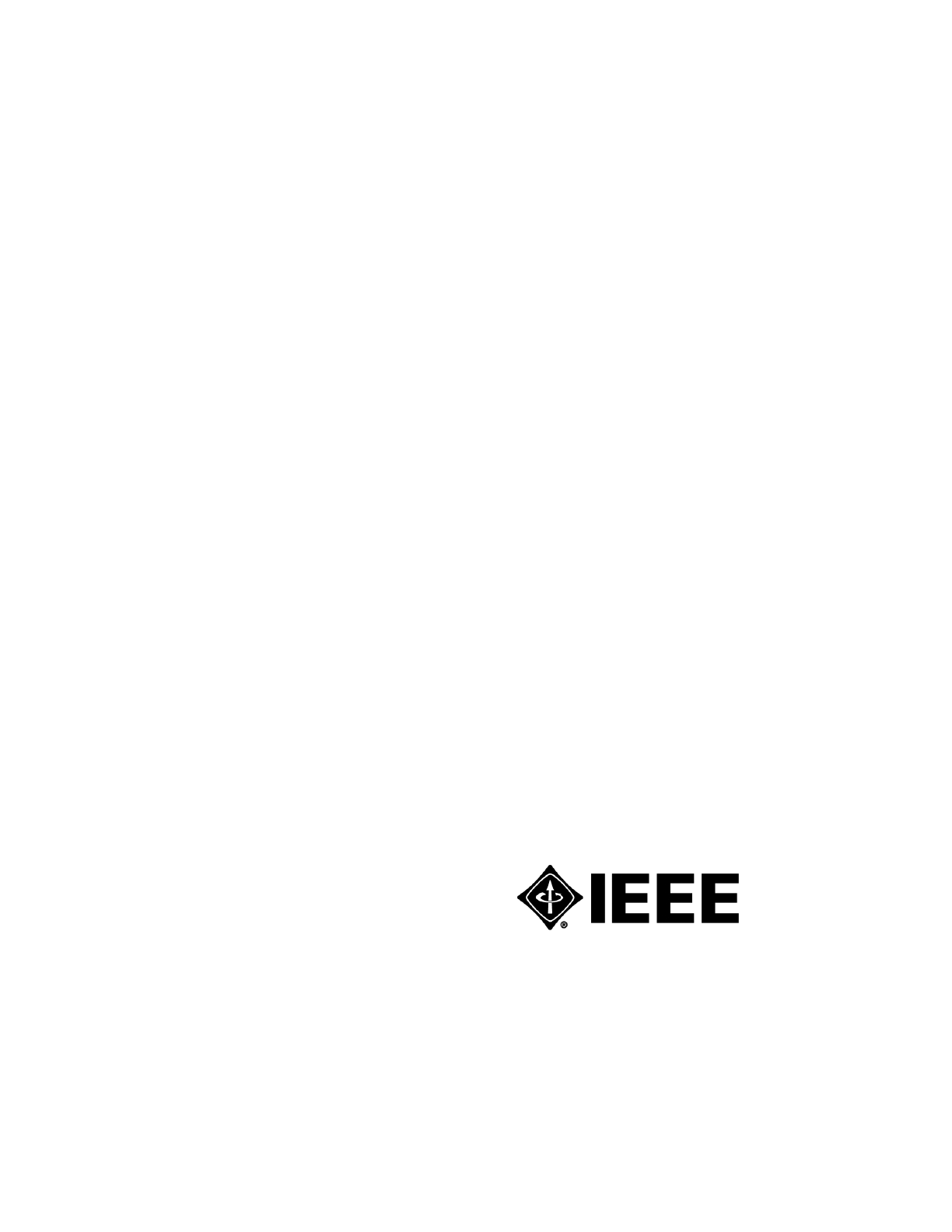
IEEE EDITORIAL STYLE MANUAL
FOR AUTHORS
IEEE Publishing Operations
445 Hoes Lane
Piscataway, NJ 08854 USA
Updated 29 July 2024
© 2024 IEEE

2
Table of Contents
Table of Contents........................................................................................................................................................................................................... 2
I. INTRODUCTION...................................................................................................................................................................................................... 3
A. Purpose of Manual........................................................................................................................................................................................... 3
B. Definition of a Transactions and Explanation of the Review Process............................................................................................................. 3
C. IEEE Transactions Editing Philosophy............................................................................................................................................................ 3
II. WRITING PRINCIPLES.......................................................................................................................................................................................... 4
A. Writing Parts of an Article............................................................................................................................................................................... 4
Title.............................................................................................................................................................................................................. 4
Byline, ORCID, and Membership Citation..................................................................................................................................................4
ORCID............................................................................................................................. 4
IEEE Membership Grades.................................................................................................................................................................. 5
Consortia and group authorship.......................................................................................................................................................... 5
First Footnotes..............................................................................................................................................................................................5
First Paragraph:................................................................................................................................................................................... 5
Human/Animal Research........................................................................................................................................................... 7
Second Paragraph:...............................................................................................................................................................................7
Third Paragraph:................................................................................................................................................................................. 9
B. The Body of the Article..................................................................................................................................................................................10
Abstract...................................................................................................................................................................................................... 10
Index Terms................................................................................................................................................................................................10
Note to Practitioners...................................................................................................................................................................................10
Nomenclature............................................................................................................................................................................................. 10
Text Section Headings................................................................................................................................................................................11
Introduction................................................................................................................................................................................................12
Text Equations............................................................................................................................................................................................12
Appendix....................................................................................................................................................................................................12
Acknowledgment....................................................................................................................................................................................... 12
References..................................................................................................................................................................................................13
Text Citation of Figures and Tables........................................................................................................................................................... 14
Biographies................................................................................................................................................................................................ 15
C. Other Text.......................................................................................................................................................................................................16
Inclusive Language.................................................................................................................................................................................... 16
Footnotes....................................................................................................................................................................................................16
Lists in Text................................................................................................................................................................................................17
Dedication Line(s)......................................................................................................................................................................................18
Note Added in Proof.................................................................................................................................................................................. 18
D. Other Types of Papers.................................................................................................................................................................................... 18
Editorials.................................................................................................................................................................................................... 18
Brief Papers................................................................................................................................................................................................18
Short Papers, Letters, Correspondence, and Communications.................................................................................................................. 19
Comments and Replies...............................................................................................................................................................................19
Corrections/Errata/Addendums..................................................................................................................................................................19
Book Reviews............................................................................................................................................................................................ 20
Obituaries/In Memoriam............................................................................................................................................................................20
E. Writing Style for Transactions........................................................................................................................................................................20
Acronyms................................................................................................................................................................................................... 20
Spelling...................................................................................................................................................................................................... 20
Trademarks.................................................................................................................................................................................................21
Plurals.........................................................................................................................................................................................................21
Hyphenation Rules.....................................................................................................................................................................................21
The En, Em, or Two-Em Dash...................................................................................................................................................................21
Grammar.................................................................................................................................................................................................... 22
Contractions............................................................................................................................................................................................... 22

3
Capitalization............................................................................................................................................................................................. 22
Dates...........................................................................................................................................................................................................22
Percentages and Decimals..........................................................................................................................................................................22
Ranges With Units..................................................................................................................................................................................... 23
Math........................................................................................................................................................................................................... 23
Equation Numbers......................................................................................................................................................................................24
Displayed Equations.................................................................................................................................................................................. 24
F. General Layout Rules......................................................................................................................................................................................24
III. GRAMMAR AND USAGE IN TRANSACTIONS..............................................................................................................................................25
A. Rules of Grammar.......................................................................................................................................................................................... 25
IV. APPENDIX............................................................................................................................................................................................................ 27
A. Some Common Acronyms and Abbreviations...............................................................................................................................................27
B. Common Hyphenations and Misspellings......................................................................................................................................................31
C. Table of Units and Quantity Symbols............................................................................................................................................................ 34
D. Miscellaneous Alphabetical Abbreviations, Acronyms, and Symbols.......................................................................................................... 42
E. Inclusive Language Guide.............................................................................................................................................................................. 60
IEEE EDITORIAL STYLE MANUAL FOR AUTHORS

4
I. INTRODUCTION
A. Purpose of Manual
This style manual provides general writing guidelines for IEEE Transactions, Journals, and Letters. For guidance
in grammar and usage not included in this manual, please consult The Chicago Manual of Style, published by the
University of Chicago Press.
B. Definition of a Transactions and Explanation of the Review Process
All IEEE Transactions are refereed archival journals. This means that each Transactions has a volunteer Editor or
Editor-in-Chief (EIC) who is responsible for soliciting manuscripts and overseeing the peer review and revision
process for the journal. The referees (at least two, according to IEEE policy), together with the Editor and sometimes
with volunteer Associate Editors, determine the technical merit of each submitted article and make a
recommendation to accept, accept with revision, or reject it.
Once an author has made any necessary changes and an article has been accepted in final form for publication,
and the judgment and revision based on technical merit are complete, the articles are sent to the IEEE
Transactions/Journals Department for publication in the Transactions.
C. IEEE Transactions Editing Philosophy
The IEEE’s responsibility in editing articles for the Transactions is not to do any editing of the technical content,
but is instead to render the work as readable, grammatically correct, and as consistent with IEEE style as possible.
Since we are concerned with style mainly in the sense of IEEE house style, we do not try to change an author’s
style of writing. We do a mechanical edit to correct or question grammatical errors, obvious inconsistencies or
omissions, spelling, and punctuation. Since we work with highly technical text, we also do extensive formatting of
mathematical material.
Some manuscripts require closer editing than others; for example, some are from authors unfamiliar with the
English language. Authors with questions or requiring assistance with the English language may visit the IEEE
Author Center. Often, an IEEE Staff Editor must determine how to correct a grammatical error or decide what can
be safely changed or corrected without altering the author’s original meaning. Because of the highly technical nature
of the material we deal with, and because of our often limited understanding of that material, it is especially
important that Staff Editors do not risk making any unnecessary changes or any that may affect the author’s
meaning.
IEEE EDITORIAL STYLE MANUAL

5
II. WRITING PRINCIPLES
The sections of an article should generally be written in the following order:
1) Title Page (including article title, byline, membership, and first footnote)
2) Abstract, must be one paragraph and between 150 to 250 words.
3) Index Terms
4) Nomenclature (optional)
5) Introduction
6) Body of Article
7) Conclusion
8) Appendix(es)
9) Acknowledgment
10) References
11) Photographs and Biographies
A. Writing Parts of an Article
Title
In the title, all nouns, pronouns, adjectives, verbs, adverbs, and subordinating conjunctions (If, Because, That,
Which) should be capitalized. Capitalize abbreviations that are otherwise lowercase (i.e., use DC, not dc or Dc)
except for unit abbreviations and acronyms. Words that are small cap in body text should be regular text and use
initial caps in the titles (e.g., ON-OFF). Articles (a, an, the), coordinating conjunctions (and, but, for, or, nor), and most
short prepositions are lowercase unless they are the first or last word. Prepositions of more than three letters (Before,
From, Through, With, Versus, Among, Under, Between, Without) are capitalized. Detailed equations are discouraged
in titles. If they must be included, capitalization and formatting should follow IEEE style.
Examples:
● Nonlinear Gain Coefficients in Semiconductor Lasers: Effects of Carrier Heating
● Geoscience and Remote On-Off Lidar Exploration
● Self-Pulsation in an InGaN Laser—Part I: Theory and Experiment
Byline, ORCID, and Membership Citation
Use the longest and most complete name given in either the biography or byline. Use the same information in
both places. Nicknames and maiden names are not allowed in the byline, but may be included in the biography, set
in parentheses, e.g., “John (Jack) Smith received the B.A. degree…” and “Jane (Smith) Jones received the B.S.
degree…” Hebrew and secondary surnames may be included in the byline, e.g., “Shlomo Shamai (Shitz).” Names
in native languages are also allowed.
Example:
Titles and affiliations associated with the author should be omitted. Do not use commas to precede a suffix, such
as a roman numeral or Jr./Sr., after the author’s given name.
Example:
C.-Y. Chen , Member, IEEE, K. S. Snyder Jr. , Fellow, IEEE,
and J. Fortunato III , Senior Member, IEEE
IEEE EDITORIAL STYLE MANUAL FOR AUTHORS

6
Mohammed Z. Ali , Member, IEEE, and Murat Torlak , Fellow, IEEE
ORCID
Open Researcher and Contributor ID is a nonproprietary alphanumeric code to uniquely identify scientific and
other academic authors and contributors. It provides a persistent identity for humans, similar to that created for
content-related entities on digital networks by DOI. ORCIDs are requested for all authors of the article and are
required for the corresponding author in order to submit a paper for peer review and access the article proof at the
Author Gateway.
IEEE Membership Grades
If membership information is given in the byline, also enter it into the biography. IEEE Membership Grades
included in the byline and biography are Student Member, Graduate Student Member, Associate Member, Member,
Senior Member, Fellow, Life Associate Member, Life Member, Life Senior Member, and Life Fellow.
Note: Affiliate Members are not considered members for the purposes of the byline and biography.
Consortia and group authorship
If a manuscript is submitted on behalf of a consortium or group, include its name in the manuscript byline and
include the full list of members in the Acknowledgment.
Mohammed Z. Ali , Member, IEEE, and Murat Torlak , Fellow, IEEE, SiPBA Group
First Footnotes
The first footnote (or the author affiliation paragraph) is made up of at least three paragraphs. This footnote is not
numbered. All other footnotes in the article are numbered consecutively. Do not use asterisks or daggers.
Example:
Manuscript received 27 April 2012; revised 18 September 2012; accepted 25 July 2013. Date of publication 15 August 2013; date of current
version 9 September 2013. This work was supported by a grant of the Romanian National Authority for Scientific Research, CNCS UEFISCDI,
under Project PN-II-ID-PCE-2011-3-0566. (Corresponding author: Florin Gherendi.)
The authors are with the National Institute for Lasers, Plasma and Radiation Physics, Plasma Physics and Nuclear Fusion Laboratory,
077125 Bucharest-Magurele, Romania (e-mail: florin.gherendi@infim.ro; mnistor@infim.ro; mandache@infim.ro).
This article has supplementary material provided by the authors and color versions of one or more figures available at
https://doi.org/10.1109/TFUZZ.2019.2933787.
First Paragraph:
The first paragraph of the first footnote contains the received, revised, and accepted dates of the article. When
an article has more than one revised date, list all the dates. It also contains the two additional online published dates.
The first date identifies the date of publication, i.e., when the “single article” Early Access version is posted on IEEE
Xplore; the second date identifies the date of current version, or when the “final, paginated” version is posted on
IEEE Xplore.
Corresponding author(s) credit: All articles must include the name of the corresponding author(s). However, an
author may opt out upon review of the proof. Multiple corresponding authors may be listed. The corresponding
author(s) name is added in italics at the very end of the first paragraph, as follows:
Manuscript received 2 May 2018; revised 9 September 2018; accepted 12 October 2018. Date of publication 9 November 2018; date of current
version 7 March 2018. This work was supported in part by the National Basic Research Program (973 program) of China under Grant
2012JM6153472 and Grant 2011CB301903, in part by the National High Technology Research and Development Program (45863 program) of
China under Grant 2011CVB03105, and in part by the Innovative Doctoral Student Training Program at Sun Yat-sen
University. (Corresponding authors: Jessie Y. C. Chen; Shiyuan Fan.)
IEEE EDITORIAL STYLE MANUAL

7
Equally contributed authors: In some cases, the authors may request credit be given to specific authors who
have contributed equally to the work. This is added in italics at the very end of the first paragraph before the
corresponding author. See example below.
Manuscript received 2 May 2018; revised 9 September 2018; accepted 12 October 2018. Date of publication 29 November 2018; date of current
version 7 March 2019. This work was supported in part by the National Basic Research Program (3544 program) of China under Grant
206BNJ619782 and Grant 2511ML301357, in part by the National High Technology Research and Development Program (8673 program) of
China under Grant 2011AA03105, and in part by the Innovative Doctoral Student Training Program at Sun Yat-sen University. (Shanjin Fan and
Shiyuan Fan contributed equally to this work.) (Corresponding authors: Jessie Y. C. Chen; Shiyuan Fan.)
Co-first authors: In many fields, it is viewed as good to be the first author. But only one person can be first
author, which leads to the practice of some labs having “co-first” authorship. The wording for this is: “(Shanjin Fan
and Shiyuan Fan are co-first authors.)”. There is no need to include the “contributed equally” phrase. In the byline,
one of the authors must be listed first, but the last line in the first paragraph will indicate both authors as co-first
authors. For example:
Manuscript received 2 May 2018; revised 9 September 2018; accepted 12 October 2018. Date of publication 29 November 2018; date of current
version 7 March 2019. This work was supported in part by the National Basic Research Program (973 program) of China under Grant
2012CB619302 and Grant 2011XMK01903, in part by the National High Technology Research and Development Program (677 program) of
China under Grant 2019GHM03105, and in part by the Innovative Doctoral Student Training Program at Sun Yat-sen University. (Shanjin Fan
and Shiyuan Fan are co-first authors.) (Corresponding author: Shanjin Fan.)
Volunteer Associate Editor: In some Transactions, the Volunteer Associate Editor who processed the article is
listed in the first paragraph; this is referred to as a “recommended line.” See specific Transactions for placement and
wording. Some examples are:
Manuscript received 5 February 2018; revised 29 March 2018; accepted 29 March 2018. Date of publication 8 June 2018; date of current version
18 January 2009. Article recommended by Associate Editor Thomas Lynch.
Manuscript received 5 February 2018; revised 29 March 2018. Date of publication 8 June 2018; date of current version 18 January 2009. This
article was recommended by Associate Editor T. Lynch.
Manuscript received 4 July 2018; revised 4 September 2018. Date of publication 8 June 2018; date of current version 18 July 2018. This work
was supported by the UDDHSCSU under Grant PN-JJ78/01.10.2067 and Grant FRII 331/94.57.2067. The associate editor coordinating the
review of this article and approving it for publication was Prof. Vesa Valimaki. (Corresponding author: Jinjun Ming.)
Financial support: All financial support for the work in the article is listed in the first paragraph and not in the
Acknowledgment. Examples of financial support are:
1) This work was supported by the National Science Foundation under Grant 90210 and Grant ECS-12345.
2) This work was supported in part by the Natural Sciences and Engineering Research Council of Canada under
Contract 12345 and Contract 702589 and in part by the National Science Foundation.
3) This work was supported by grants from the Muscular Dystrophy Association of America and the Swedish
Medical Research Council.
4) If an author/organization requests specific wording, e.g., by National Institutes of Health (NIH), use
language provided.
If support was given to a specific author, the following wording is used:
The work of C. T. Walsh was supported by the National Institutes of Health.
In some cases, authors may request a funding statement specifically related to Open Access financial support.
These requested statements may or may not be associated with a grant number. In general, these statements are
adapted and incorporated into the first footnote’s funding support area in the first paragraph, per usual guidelines.
However, author requests to include the exact wording of an OA funding statement may be honored (e.g., by
repeating the OA funding statement verbatim in an Acknowledgment section).
Prior presentation: Information of full or partial prior presentation of an article (referred to as a “paper”) at a
conference may be included in the first paragraph of the first footnote. It may not be necessary, however, to cite prior
presentation of a paper at a conference if the paper is appearing in a special issue made up exclusively of papers
presented at the conference. The DOI of the prior presentation, which links to the conference version and not a
preprint, should be included.
IEEE EDITORIAL STYLE MANUAL FOR AUTHORS

8
If an article is a thesis or part of a thesis or dissertation, this should be noted in the last sentence of the first
paragraph of the footnote.
Below is a sample of a first paragraph of the first footnote, including financial support and prior presentation:
Manuscript received 15 January 2018; revised 10 April 2018; accepted 29 April 2018. Manuscript received in final form on 20 May 2018. Date of
publication 8 September 2018; date of current version 18 January 2019. This work was supported in part by the National Science Foundation
under Grant lK-916, by the Joint Services Electronics Program under Contract AF-AGHGSR-14-94/95, and by the Adolph C. and Mary Sprague
Miller Institute for Basic Research in Science. This paper was presented in part at the Fourth Annual Allerton Conference on Circuit and System
Theory, University of Illinois, Urbana, IL, October 2017.
Human/Animal Research
If applicable, place the human/animal research blurb as a separate paragraph below the first paragraph and before the
author affiliations in the first footnote.
Articles That Are Reporting on Human/Animal Research and Have Review Board Approval:
This work involved human subjects or animals in its research. Approval of all ethical and experimental procedures and protocols was granted by
(Name of Review Board or Committee) (IF PROVIDED under Application No. xx, and performed in line with the (Name of Specific Declaration
(IF APPLICABLE/PROVIDED)).
Example:
This work involved human subjects or animals in its research. Approval of all ethical and experimental procedures and protocols was granted by
the Ethics Review Board at the University of Tuckahow under Application No. ETH178942, and performed in line with university requirements.
Articles That Are Reporting on Human/Animal Research and Are Exempt From Review Board Approval:
This work involved human subjects or animals in its research. The author(s) confirm(s) that all human/animal subject research procedures and
protocols are exempt from review board approval.
Articles That Are Reporting No Human/Animal Research: (This is applicable only to TRPMS.)
This work did not involve human subjects or animals in its research.
Second Paragraph:
Author Affiliations: The second paragraph of the first footnote is made up of the authors’ affiliations (includes
department, university or corporation, city, state, (province or prefecture, if provided), postal code, and country.
Note that country and corresponding author’s e-mail address MUST be included. All authors may include their
e-mail addresses which would be separated by semicolons.
Examples:
Authors with same affiliation or multiple affiliations: For one author or if all authors have the same, or more
than one, affiliation:
The author is with the Department of Electrical Engineering, Rutgers University, Piscataway, NJ 08854 USA, and also with Bellcore,
Morristown, NJ 07960 USA (e-mail: [email protected]g).
The author(s) is (are) with the Laboratory for Information and Decision Systems, Massachusetts Institute of Technology, Cambridge, MA
02139 USA (e-mail: [email protected]g).
Kai Gong is with the Tsinghua National Laboratory, Beijing 10084, China, and also with Tianjin University, Tianjin, 300725, China
(e-mail: [email protected]).
The authors are with the Laboratory for Information and Decision Systems, Massachusetts Institute of Technology, Cambridge, MA 02139
The author is with the Department of Electrical Engineering, Rutgers University, Piscataway, NJ 08854 USA, also with Bellcore,
Morristown, NJ 07960 USA, and also with the Laboratory for Information and Decision Systems, Massachusetts Institute of Technology,
Cambridge, MA 02139 USA ([email protected]g).
Mary Wootters is with the Department of Computer Science and the Department of Electrical Engineering, Stanford University, Stanford,
CA 94305 USA (e-mail: [email protected]g).
Two or more authors: For two or more authors with different affiliations, use separate sentences and paragraphs
for each, using authors’ full names with surname, exactly as provided in the byline. Group the authors with the same
IEEE EDITORIAL STYLE MANUAL

9
affiliation together; list the affiliations according to the order of the first author listed in the byline for each location.
E-mail addresses are separated by semicolons.
Examples:
Ling Pei Li is with the Department of Electrical Engineering and the Electronics Research Laboratory, University of California at Berkeley,
Berkeley, CA 94720 USA.
Toshido Ikeda and Harry Ishikawa are with Fujitsu Laboratories Ltd., Atsugi, Kanagawa 243-01, Japan (e-mail:
The authors are with Fujitsu Laboratories Ltd., Atsugi, Kanagawa 243-01, Japan, and also with the Department of Electrical Engineering and
the Electronics Research Laboratory, University of California at Berkeley, Berkeley, CA 94720 USA (e-mail: [email protected]).
Changed affiliation: If an author had one affiliation at the time the article was written and a new one at the time
of publication, list the information as follows:
The author was with the Department of Electrical, Computer, and Systems Engineering, Rensselaer Polytechnic Institute, Troy, NY 12181
USA. He is now with the Institute for Microstructural Sciences, National Research Council, Ottawa, ON K1A 0R6, Canada.
If an author is on leave from his/her current position, list the information as follows:
The author is with the Faculty of Information Sciences and Engineering, University of Canberra, Canberra, ACT 2616, Australia, on leave
from the Department of Electronic Engineering, Zhengzhou University, Zhengzhou, China.
Retired author: If an author is retired, list his/her last affiliation and current address (city, state, postal code, and
country).
Lisa A. Tepper, retired, was with the Applied Research Laboratory, Bellcore, Morristown, NJ 07851 USA. She resides in Laguna Niguel, CA
92677 USA (e-mail: [email protected]).
Deceased author: For a deceased author, add “deceased” after the name and list his/her last affiliation.
Paolo Dorigo, deceased, was with the Progetto di Intelligenza Artificiale e Robotica, Dipartimento di Elettronica e Informazione, Politecnico
di Milano, 20133 Milano, Italy.
Consultant: A consultant is treated similarly to a retired author: List the last professional affiliation and current
city, state, postal code, and country.
Peter Leff Jr. was with the Department of Biomedical Engineering, University of Virginia, Charlottesville, VA 22908 USA. He resides in
Charlottesville, VA 22908 USA.
Additional notes:
● Do not include street addresses of employers. For domestic authors, use official U.S. Postal Service
abbreviations for states and include U.S. ZIP codes, and country. Note that there is no comma between the
state, ZIP code, and country for U.S. affiliations. Use Canadian Province and international codes as listed in
this manual. Also include international cities, countries, and postal codes.
● List department or subdivision first, then company or school. Write out the words “Company” and
“Corporation.” Abbreviate “Inc.” and “Ltd.” (One exception to this is Texas Instruments Incorporated.)
● In a book review, to avoid confusion with the author of a book, when listing the affiliation of the reviewer of
a book, do not use “The author is with …”; instead, list the reviewer’s affiliation (“The reviewer is with …”).
● Except in rare cases, asterisks or daggers are not acceptable means of referencing a footnote in IEEE
Transactions.
Third Paragraph:
The third paragraph of the first footnote contains a notice if the article has supplementary materials and/or color
figures in the online version. The link would always begin with https://doi.org/theFullDOI.
If there is only supplementary material:
This article has supplementary downloadable material available at https://doi.org/10.1109/TFUZZ.2019.2933787, provided by the authors.
If there are both supplementary material and online-only color figures:
This article has supplementary material provided by the authors and color versions of one or more figures available at
https://doi.org/10.1109/TFUZZ.2019.2933787.
If there are online-only color figures but no supplementary material:
Color versions of one or more figures in this article are available at https://doi.org/10.1109/TFUZZ.2019.2933787.
IEEE EDITORIAL STYLE MANUAL FOR AUTHORS

10
If authors supply their own DOIs for datasets posted to external sites (for example, GitHub), placement is the same
as the multimedia statement:
Data is available on-line at https://doi.org/10.15129/ae577969-aa18-47f2-8dff-df6a20eba41e.
Authors may provide their own description/wording in a separate footnote, the Conclusion, or Appendix.
B. The Body of the Article
Abstract
Every published article must contain an Abstract. All variables should appear lightface italic; numbers and units
will remain bold. Abstracts must be a single paragraph.
In order for an Abstract to be effective when displayed on IEEE Xplore as well as through indexing services such
as Compendex, INSPEC, Medline, ProQuest, and Web of Science, it must be an accurate, standalone reflection of
the contents of the article. They shall not contain numbered mathematical equations, numbered reference citations,
nor footnotes.
Index Terms
All articles must contain Index Terms. These are keywords provided by the authors. Index Terms appear in
alphabetical order and as a final paragraph of the Abstract section. Capitalize the first word of the Index Terms list;
lowercase the rest unless capitalized in text. Include the definition of an acronym followed by the acronym in
parentheses.
Example:
Index Terms—Abstraction, computer-aided system engineering (CASE),
conceptual schema, data model, entity type hierarchy, ISO reference model,
layered architecture meta model, reverse engineering.
Note to Practitioners
This is formatted in the same style as Abstracts. It follows the Abstract and is separated by a line space. There
may be more than one paragraph.
Example:
Note to Practitioners—Abstraction, computer-aided system engineering (CASE),
conceptual schema, data model, entity type hierarchy, ISO reference model, layered architectural
meta model, reverse engineering.
Nomenclature
Nomenclature lists (lists of symbols and definitions) generally follow the Abstract and Index Terms and precede
the Introduction. This type of list is characterized by the following.
1) The Nomenclature heading is a primary heading without a Roman numeral.
2) The first column of the list is flush left.
3) The second column is aligned on the left.
4) There is one em space from the longest item on the left side to the right side.
5) The first letter on the right-hand side is capitalized.
6) Each item ends with a period.
7) Do not use “is” or “the” at the beginning of items.
8) Do not use equality symbols between the left and right sides.
Equations in an item should be handled as follows.
IEEE EDITORIAL STYLE MANUAL

11
1) When the equation is at the beginning of an item, align the equal sign with the right-hand side capitals, end
the equation with a period, begin the definition with a capital, and end with a period.
2) When the equation is at the end of an item, end the definition with a comma, follow with an equal sign and
the rest of the equation, then end with a period as shown in the following example.
NOMENCLATURE
SPQ
Strictly proper pole constraints.
M
Minimal weighted sensitivity.
P(s)
Physical feedback.
W
Weighting.
Q
= P – 1. Improper function.
S, l
Signal density, = P, M.
NOTE: Acronyms defined in a Nomenclature list do not need to be defined again in the text. If the section
headings are made up of only previously defined acronyms, we should continue to add the acronym in parentheses
next to the definition, as it becomes unreadable otherwise.
Text Section Headings
Standard specifications have been established for Transactions text section headings. There are four levels of
section headings with established specs: primary (section), secondary (subsect1), tertiary (subsect2), and quaternary
(subsect3) heads.
Enumeration of section headings is desirable, but not required. Primary headings (section) are enumerated by
Roman numerals, centered above text, and set in 10-pt. and 8-pt. caps. Note that Introduction, Conclusion, and
Acknowledgment are Singular heads.
Example:
I. INTRODUCTION
Secondary headings (subsect1) are enumerated by capital letters followed by periods (“A.,” “B.,” etc.), flush left,
italic, upper and lowercase.
Example:
A. Formal Frameworks
Tertiary headings (subsect2) are enumerated by Arabic numerals followed by parentheses. They are indented one
em, run into the text in their sections, italic, upper and lowercase, and followed by a colon.
Example:
1) Sophisticated Local Control: Sophisticated local control is applied when …
Quaternary headings (subsect3) are identical to tertiary headings, except that they are indented two ems instead
of one em, lowercase letters are used as labels, and only the first letter of the heading is capitalized.
Example:
1a) Communication policies: Policies developed to improve communication …
Reference and Acknowledgment headings are unlike all other section headings in text. They are never
enumerated. They are simply primary headings without labels, regardless of whether the other headings in the article
are enumerated.
Example:
REFERENCES
ACKNOWLEDGMENT (note spelling here)
Appendix headings are a special case. The primary heading(s) in the Appendix or Appendixes are set according
to the usual style, except that there is flexibility in the enumeration of the heading. Roman numerals as heading
numbers (Appendix I) or letters (Appendix A) are acceptable. The Appendix is not preceded by a Roman numeral.
IEEE EDITORIAL STYLE MANUAL FOR AUTHORS

12
Follow the rules given earlier for labeling subsidiary heads. Note that if there is only one Appendix in the article,
leave the Appendix unnumbered and unnamed as is. (Appendix subheads should also not be enumerated in this
case.)
Examples:
APPENDIX
APPENDIX I
PROOF OF THEOREM
APPENDIX A
PROOF OF THEOREM
Headings for Theorems, Proofs, and Postulates: Some articles do not conform to an outline style for theorems
and proofs that is easily transformed into the normal heading sequence. The preferred style is to set the head giving
the theorem number as a tertiary heading (no Arabic numeral preceding) and the proof head as a quaternary head.
This rule also applies to Lemmas, Hypotheses, Propositions, Definitions, Conditions, etc.
In-text references to text sections are written: “in Section II” or “in Section II-A” or “in Section II-A1.”
Capitalize the word “Section.” Do not use the word “Subsection”; use “Section” and write out the complete citation.
Note that there is no period in Section II-A1 to separate the subsections.
Introduction
Initial Cap or Drop Cap: In full-length articles and/or Editorials (but not in short papers), the first letter of the
Introduction is set as an initial cap, two lines deep (drop cap). After the cap, the remaining characters of the word are
capitalized, as well as another 1–2 words at most. Do not break up hyphenated words into cap and lowercase
sections—extend the caps if necessary. If it is not possible to use the first word or character of the Introduction as an
initial cap (i.e., if the article begins with a quotation mark), try rewriting the sentence.
Text Equations
Consecutive Numbering: Equations within an article are numbered consecutively from the beginning of the
article to the end. There are some Transactions in which numbering by section, e.g., (1.1), (1.2.1), (A1), is permitted.
Appendix Equations: Continued consecutive numbering of equations is best in the Appendix, but equation
numbering that starts over with (A1), (A2), etc., for Appendix equations is permissible.
Hyphens and Periods: Hyphens and periods are accepted, if consistent in the article, e.g., (1a), (1.1), (1-1).
Appendix
Refer to the Appendix in text as “given in the Appendix.” Note that the plural of Appendix is Appendixes. Also
note that all figures and tables in the Appendixes must be labeled in consecutive order with the other figures in the
article.
Acknowledgment
The placement of the Acknowledgment appears after the final text of the article, just before the References and
after any Appendix(es). The spelling of the heading for the Acknowledgment section is always singular, with no “e”
between the “g” and the “m.” As noted previously in the Text Headings section, the Acknowledgment head is a
primary heading. Do not enumerate the Acknowledgment heading.
The use of content generated by artificial intelligence (AI) in an article (including but not limited to text, figures,
images, and code) shall be disclosed in the acknowledgments section of any article submitted to an IEEE
publication. The AI system used shall be identified, and specific sections of the article that use AI-generated content
shall be identified and accompanied by a brief explanation regarding the level at which the AI system was used to
generate the content. The use of AI systems for editing and grammar enhancement is common practice and, as such,
IEEE EDITORIAL STYLE MANUAL

13
is generally outside the intent of the above policy. In this case, disclosure as noted above is recommended. An
example of this wording is as follows:
Article
Fig. caption: Graphic(s) created using AI-generation. For image credits, please see the Acknowledgment section
of this article.
ACKNOWLEDGMENT
Fig. X was created using <AI system used>. <Brief explanation regarding the level at which the AI system was
used to generate the content.>
When citing names within the Acknowledgment, drop Mr., Mrs., or Miss (list first initial and last name only).
For Dr. or Prof., use the Dr. or Prof. title with each name separately; do not use plural Drs. or Profs. with lists of
names.
All acknowledgments of financial support are placed in the first footnote/author affiliation (with a few
exceptions of some Transactions).
Any acknowledgments of permission to publish and disclaimers to the content of the work made to/by the
author’s employer may be added as an Acknowledgment section.
Write the Acknowledgment section in the third person.
Personal notes such as family announcements, proposals, etc., should be deleted from the Acknowledgment.
References
A few guidelines related to the writing of references are summarized here.
The numbering of references is employed by citing one reference per number. Every reference in a Transactions
reference list should be a separate number entry. Use of one reference number to designate a group of references is
not permitted.
Example:
[37] E. G. Bowen, Radar Days, Institute of Physics Publishing, 1987. The literature of WWII radar is vast. Among
the most comprehensive references are L. Brown, A Radar History of World War II: Technical and Military
Imperatives, Institute of Physics Publishing, 1999; S. Swords, Technical History of the Beginnings of Radar, Peter
Perigrinus, 1986; H. Guerlac, Radar in World War II, Tomash Publishers, American Institute of Physics, 1987.
The References should be written as follows:
[37] E. G. Bowen, Radar Days. London, U.K.: Institute of Physics, 1987.
[38] L. Brown, A Radar History of World War II: Technical and Military Imperatives. London, U.K.: Institute of
Physics, 1999.
[39] S. Swords, Technical History of the Beginnings of Radar. Stevenage, U.K.: Peregrinus, 1986.
[40] H. Guerlac, Radar in World War II. New York, NY, USA: Tomash Publishers/Amer. Inst. of Physics, 1987.
In the text, the following footnote would be added after the citation for ref. [37]:
“The literature of WWII radar is vast. Among the most comprehensive references are [38], [39], [40].”
Any references to the original refs. [38], [39], and [40] would be changed to [41], [42], and [43], respectively.
Footnotes or other words and phrases that are part of the reference format do not belong on the reference list.
These full footnotes or extraneous phrases must always be removed from the list, changed into text or footnotes on
the appropriate page, and the references renumbered (renumber reference citation in text as well). Even the words
“For example” should not introduce references in the actual list, but should instead be included in parentheses in text
(or in a footnote), followed by the reference number, i.e., “For example, see [5].”
Do not say “in reference [1] …”; rather, the text should be written to read simply, “in [1] …” The author’s name
should not be included in a text reference with a number (i.e., “In Smith [1]”) and should be changed to “in [1]”
except in such cases where the author’s name is integral to the understanding of the sentence (e.g., “Smith [1]
IEEE EDITORIAL STYLE MANUAL FOR AUTHORS

14
reduced calculated time …”). Reference dates should not be used as reference identifiers and should be deleted in
text except in rare cases where the date is somehow relevant to the article’s subject.
Do not refer to a specific figure of a reference or to a specific page or equation from a reference. To avoid
confusion, rewrite phrases such as “in Fig. 2 of reference [1]” to the IEEE cross-reference notation “in [1, Fig. 2].”
Similarly, rewrite phrases such as “in equation (8) of reference [1]” to be [1, eq. (8)]. Other phrases may be rewritten
as [1, Sec. IV], [1, Th. 4.2], or [1, Ch. 3].
If listing the same reference more than once on the reference list, giving a new reference number for each page
or part of the same source that is cited, these separate references should all be made into one reference and the
separate citations of pages, equations, etc., should be made in text using the notation explained in the previous
paragraph.
If a reference author’s name is mentioned in the text, check its spelling against the reference list.
Text Citation of Figures and Tables
Use of the Lena Image (EFFECTIVE 1 April 2024)
IEEE’s diversity statement and supporting policies such as the IEEE Code of Ethics speak to IEEE’s commitment
to promoting an inclusive and equitable culture that welcomes all. In alignment with this culture and with respect to
the wishes of the subject of the image, Lena Forsén, IEEE will no longer accept submitted papers which include the
“Lena image.”
All first citations of figures and tables in the article must be in numerical order. Citations to figures in text always
carry the abbreviation “Fig.” followed by the figure number. The abbreviation is used even when it begins a
sentence. Figure footnotes should be placed as part of the caption.
Figures: The general style for captions is such that each caption number should be cited with the abbreviation
“Fig.” and the number, followed by a period, an em space, and then the text of the caption. The first word of the
caption should always be capitalized, regardless of any style that may be chosen to list caption parts (a), (b), etc., if
included. If you are citing Fig. 1(a) and 1(b), the singular "Fig." is still used. In general, do not use A, An, or The at
the beginning of a figure or table caption.
Example:
Fig. 1. Theoretical measured values of n.
There are several acceptable styles for listing the parts of the figure in the caption. Be consistent within each
article, but otherwise use whichever style is most convenient for the figure. Regardless of which caption notation is
used, the citation of (a), (b), etc., should always appear before the corresponding caption part.
Examples:
Fig. 1. Intercomplex crosstalk characteristics. (a) Electrode
transmission. (b) Interelectrode crosstalk.
Fig. 2. (a) Variation of effective mode index with time. (b)
Step-index change.
Fig. 3. Output resistance as a function of channel doping for
1-m-long gate. (a) InGaAs and (b) InP JFETs with pinchoff voltage
as a parameter.
Fig. 4. (a) and (b) Plain and side views, respectively, of the
experimental setup used to measure the effective diffraction loss
which can be achieved using the feedback technique.
Fig. 1. (a) Electrode transmission. (b) Interelectrode crosstalk.
If parts of a figure after reduction will run the length of more than one page, the full descriptive part of the
caption should be cited with the first part of the figure followed by the corresponding caption for the part. On the
subsequent pages, the word (Continued.) will be placed under the carryover parts of the figure followed by a repeat
of the full descriptive part of the caption and the corresponding caption for the carryover parts.
Captions for Landscape/broadside figures: The text should appear below the figures and facing outward at all
times.
Examples:
IEEE EDITORIAL STYLE MANUAL

15
Fig. 6. True and estimated spectra for a real data sequence. (a) True
spectrum.
Fig. 6. (Continued.) True and estimated spectra for a real data
sequence. (b) Estimated with the periodogram.
Tables: The general style for table captions is such that each caption number should be centered above the table
with the label TABLE and the enumeration given in Roman numerals. The descriptive text of the caption should be
centered directly below the table number caption
The descriptive text of the table caption does not contain a period at the end of the caption, although punctuation
may be necessary within the caption itself. In general, table captions should be set as an inverted pyramid.
The style for listing the parts of a table in the caption and in text depends on whichever style is most convenient
for the table. The most acceptable style is to follow the conventions for callouts of figures.
Example:
TABLE I
PARAMETER VALUES
TABLE II
OPTIMAL WAVELENGTH AS A FUNCTION OF POLARIZER ANGLE. (a) WAVELENGTH
FOR EXTERNAL CAVITY. (b) ESTIMATED WAVELENGTH FOR LASER DIODE
Obtaining permission to reuse copyrighted material
Reusing IEEE graphics previously published in IEEE publications: You will need to request permission directly
from IEEEXplore. In most cases, the only requirements will be to give full credit to the original source and to obtain
the author’s approval (as a courtesy to the author). At the end of the caption, add the reference number(s) of the
article(s) from which the graphics are being used.
Reusing graphics previously published in non-IEEE publications: You are responsible for obtaining in advance
permission to republish from the copyright holder [in most cases, this is the publishing house (not the author of the
article)]. The wording is usually supplied by the publishing house itself. This text is added at the end of the caption.
Biographies
IEEE Transactions author biographies are generally divided into three paragraphs. However, if appropriate
information for each paragraph is not available, the biography may be only one or two paragraphs. QR codes are not
accepted in place of biographies and/or photographs (we will not send readers to a destination for which we cannot
be confident of long-term accessibility).
Always defer to the pronoun or title provided by the author. If provided as “they” and “them,” do not change to
be singular; these should be considered non-binary singular pronouns.
The biography begins with the author’s full name and IEEE membership history. The author’s name appears in
boldface type and must match the byline. A nickname or maiden name may appear within parentheses, e.g.,
Sung-Mo (Steve) Kang or Jane (Smith) Jones, but not in the byline. List current IEEE membership only; this is
written out in full and should match the byline exactly.
Note that affiliate memberships are neither listed in the byline nor biography membership history.
Abbreviations for IEEE membership grades are S (Student Member), GS (Graduate Student Member), A
(Associate Member), M (Member), SM (Senior Member), F (Fellow), LA (Life Associate Member), LM (Life
Member), LSM (Life Senior Member), and LF (Life Fellow). Note that A stands for Associate, not Affiliate,
Member. Affiliate memberships are not listed in the byline or biography membership history.
Do not include references to IEEE membership from the text of the biography.
Author photographs should be professional images of the head and shoulders. Current photographs are
encouraged; baby and family photographs should not be used.
First Paragraph: The first paragraph may contain a place and/or date of birth (list place, then date). Next, the
author’s educational background is listed. When listing degrees earned, the biography should state “[S]he received
the Ph.D. degree from …” (not “[S]he received [her] his Ph.D. degree from …”). Always add the word “degree”
after a degree title. Include the years degrees were received. Abbreviations for some common international and
domestic degrees are:
IEEE EDITORIAL STYLE MANUAL FOR AUTHORS

16
Dipl.Ing., Diplom-Physiker, Dr. Ing., Dr. Phil., Dr. Eng., B.S., S.B., B.Sc.(Hons.), B.E.E., B.S.E., M.Eng.,
M.Sc.(tech.), M.S.E.E., M.S.E., Civilingenir, Lic.es Sci., Lic.es Lett.
Add the full locations (city, state, country) of universities and colleges the first time they are mentioned. For U.S.
state-named universities, repeat the state name in the location, and include the country (e.g., University of Colorado,
Boulder, CO, USA); for city-named universities, repeat the name of the city when giving the location (e.g.,
University of Chicago, Chicago, IL, USA). For universities outside the U.S., give locations with the name of the city
(postal abbreviations of Canadian Provinces, if used) and the country the first time.
Use lowercase for the author’s major field of study.
Second Paragraph: The second paragraph of the biography lists military and work experience, including
summer and fellowship jobs and consultant positions. Job titles are capitalized. The current job must have a location
(city, state, country); previous positions may be listed without one. Do not abbreviate city names, Company,
Laboratory, or Department. Use standard names for all countries. If there is space, information the author provides
about previous publications may be included at the end of this paragraph. Edit out long lists of published books or
articles. Instead use the sentence “s(he) is the author of several books and numerous published articles.” The format
for listing publishers of an author’s books within the biography is: Title of the Book (publisher name, year) similar to
a reference. (Note, use the word “titled” not “entitled” to introduce the book [e.g., He is the author of the book titled
Stochastic Analysis and Applications (Taylor & Francis, 2012)]. List author affiliations with non-IEEE journals.
Note IEEE TRANSACTION AND JOURNAL TITLES should be in small caps; IEEE Magazine Titles should be in italics; and
non-IEEE titles should be in italics. List previous and current research interests. Do not repeat the author’s name in
the second paragraph; use “he” or “she.”
Third Paragraph: The third paragraph begins with the author’s title and last name (e.g., Dr. Smith, Prof. Jones,
Mr. Kajor, Ms. Hunter). It lists the author’s memberships in professional societies other than the IEEE and his or her
status as a Professional Engineer if applicable. Finally, list awards and work for IEEE committees and publications,
affiliation with other professional societies, and symposia.
Personal notes such as hobbies should not be included in the biography. Authors may include an external link to
their work, this should appear as “For more information, see http://website.of.author” This should be the full URL
and not an abbreviated link.
Examples:
Michael C. Author Jr. (Fellow, IEEE) was born in New York, NY, USA, in 1969. He received the B.S. degree in applied mathematics from
the University of Michigan, Ann Arbor, MI, USA, in 1989, the M.S. degree in mathematical physics from Stanford University, Stanford, CA,
USA, in 1991, and the Ph.D. degree in electrical engineering from the Massachusetts Institute of Technology, Cambridge, MA, USA, in 1995.
From 1993 to 1995, he was with Raytheon Corporation, Bedford, MA, USA. From 1995 to 1996, he was with the General Electric Space
Laboratory, Valley Forge, PA, USA. From 1996 to 1997, he was a Fulbright Lecturer at the University of Madrid, Madrid, Spain. He is currently
an Associate Professor of electrical engineering at the University of Maryland, College Park, MD, USA. His research has been concerned with
reentry plasma effects and microwave diagnostics of plasmas.
Dr. Author is a Registered Professional Engineer in the State of Pennsylvania. For more information, see http://website.of.author.
Katsunari Okamoto was born in Hiroshima Prefecture, Japan, in 1949. He received the B.S. degree from Rutgers University, New
Brunswick, NJ, USA, in 1979, and the M.S. degree from Monmouth University, Long Branch, NJ, USA, in 1984.
He was a Postdoctoral Fellow at the University of Tokyo, Japan, in 1978. He joined the Ibaraki Electrical Communication Laboratory, N.T.T.,
Ibaraki-ken, Japan, in 1979, where he was engaged in research on the optimum waveguide structure of optical fibers. At present, he is a Member
of Technical Staff at Bellcore, Red Bank, NJ, USA.
Dr. Okamoto is a member of the Institute of Electronics and Communication Engineers of Japan.
Squibs
If the author chooses not to publish his/her biography and photograph, a squib is used. Example:
James A. Author (Fellow, IEEE), photograph and biography not available at the time of publication.
If all authors of the article opt not to publish his/her biography and photograph, no squib is used.
IEEE EDITORIAL STYLE MANUAL

17
C. Other Text
Inclusive Language
To avoid the use of insensitive terms/phrases, please refer to the Inclusive Language Guide in the Appendix for
replacement text. Use “people-first language,” i.e., the person has X; has been diagnosed with X; uses a X; etc.
Footnotes
Footnotes should be numbered in consecutive order throughout the text. Each footnote should be a new
paragraph. The footnote numbers are superscripts in text and in the actual footnotes. In text, place the superscript
footnote numbers after punctuation such as periods, commas, parentheses, and quotation marks, but generally before
dashes, colons, and semicolons in a compound sentence. The footnotes should be placed at the bottom of the text
column in which they are cited.
Lists in Text
There are three types of lists in text: run-in lists, displayed lists, and where lists. The ordering of labeling for all
lists is 1), 2), 3) followed by a), b), c), and then i), ii), iii). Note the single (ending) parenthesis. The order of
indentation is 1 em, 2 ems, 3 ems.
Run-In Lists: Lists that run in with text must be grammatically correct. They must also be introduced by a colon,
separated by semicolons, and have parallel construction. Example:
The carrier–phonon interaction matrices are given by: 1) polar optical phonons; 2) deformation potential
optical phonons; and 3) piezoelectric acoustic phonons.
Displayed Lists: Lists that are displayed may be either incomplete sentence items or full sentence items.
Incomplete sentence items contain a few items, are very short, are grammatically parallel, and are handled in two
ways. If the items are not mentioned in the text or are fewer than three items, run in as shown in the example for
run-in lists. If, however, the items are mentioned later in the text, introduce the item with a colon, number the items,
begin the entry with a lowercase letter, and set block paragraph style. Use semicolons between items and a period at
the end of the list. Example:
This operating scenario provides all of the contributors necessary to configure a resonant power distribution
system:
1) implementation of capacitor power factor correction on the power line;
2) presence of nonlinear load;
3) tuning of the power line by the load adjustments to a frequency present in the nonlinear generator.
Incomplete sentence items that are mentioned in text may also be formatted as shown in the example for full
sentence items.
Example:
The three problems are related in the following sense:
1) Additional cost constraint;
2) Relaxation of the constraints is permitted;
3) Limited budget optimization is a general optimization problem.
Full sentence items may be introduced by “that” or other words taking object and end with a period. Number all
items, start each entry with a capital letter, and end with a period. Example:
The synthesis is performed in three major steps.
1) Geometry is generated for the selected module variants.
2) Shape variants using different fold counts for resistors are generated for each module.
3) Routing and postprocessing complete the final layout.
Where Lists: Where lists define variables in the equations preceding the list. They are characterized by
incomplete sentences and follow the same rules as Nomenclature lists, with the following exceptions.
1) There is no primary heading.
2) The left-hand side is indented one em space.
3) The first letter on the right-hand side is lowercase.
IEEE EDITORIAL STYLE MANUAL FOR AUTHORS

18
4) Each item ends with a semicolon (except for the last item, which ends with a period).
5) The lists are at least three items long; if fewer than three items, the list is generally run in paragraph form.
Example:
where
amplitude of supply voltage flicker;
angular frequency of supply voltage flicker;
supply voltage amplitude;
supply angular frequency.
Note the alignment of the equal sign with the right-hand side.
Lists having mixed items (start with an incomplete item, then have a full sentence explanation) are treated as a
full sentence item list.
Dedication Line(s)
Dedication lines are usually run on the first page of an article, immediately above the Abstract.
Example: Dedicated to the work of J. W. Walters.
Note Added in Proof
One may wish to add a brief note in the proof stage, citing results obtained after acceptance of the article or
mentioning additional references that have come to their attention since the article was accepted. This added
information is usually inserted at the end of the Conclusion section of the article or in whatever section contains the
last paragraph of the main body of the article. As long as the note is not a major change to the article or more than a
few lines long, the addition generally does not require further review procedures. Use the tertiary heading “Note
Added in Proof:” (run into text), but set in boldface italic with no enumeration and an em space indent.
Examples:
Note Added in Proof: The author is an owner of the company which manufactured the tubes used in these
experiments.
Note Added in Proof: Additional information about similar research can be found at
www.newreseachresults.com.
D. Other Types of Papers
Editorials
This category of papers includes the various types of introductory papers, such as Editorials, Guest Editorials,
Forewords, Introductions, and Editorial Announcements that appear at the beginning of issues as nontechnical
introductory material. The Editorial may contain illustrations, citations, and references. Citations to articles in the
issue should be listed as “Related Works” instead of in the reference section. It may contain a photograph and
biography of each guest editor when it is a Guest Editorial for a special issue or section. An acknowledgment does
not contain a heading. Note: In the Editorial, the Acknowledgment does not need to be written in third person and
there is no Abstract.
Byline: Note that the byline for the Editorial does NOT appear below the title as it does in a full-length article.
The name of the author of the Editorial or Foreword (usually the Editor or Guest Editor) (called “signature”) appears
at the end of the Editorial.
IEEE EDITORIAL STYLE MANUAL

19
Example:
MARVIN K. SAIN, Guest Editor
Department of Electrical Engineering
University of Illinois
Urbana, IL 60617 USA
Brief Papers
These articles contain Abstracts and an initial cap. The byline includes the membership grade. They do not
contain biographies and photographs of the authors.
Short Papers, Letters, Correspondence, and Communications
Short papers are set up like full-length articles. The membership grade is not included in the byline. Author
biographies and photographs are not included. Footnotes, captions, and references may be included.
Letters are a type of short paper that have a strict low page limit and appear at a back section of an issue. Note
that these letters are not the same as research letters formatted as regular papers without biographies that make up
entire volumes or issues (e.g., IEEE Antennas and Wireless Propagation Letters, IEEE Electron Device Letters, etc.).
Correspondence and communications also use the short paper format, but are typically only a few paragraphs in
length. These include letters to the editor.
Comments and Replies
Comments are generally in response to a previously published article. The Comments and Author(s) Reply are
short papers published together in that the “Reply” is in response to the Comments. These short items may appear
without Abstracts. A special format applies for Comments and Author(s) Reply. Begin the first sentence with “In the
above article [1], ...” Reference [1] is the commented article’s citation and will appear as Reference [1] in the
References section.
Some publications refer to these articles as Discussions and Closures. Index Terms are optional.
Example of the Comments:
Title: Comments on “Harmonics: The Effects on Power Quality and Transformers”
Byline: Keith H. Sueker
Footnote:
Manuscript received 15 July 2006.
The author is with the School of Engineering, Vanderbilt University, Nashville, TN 37235 USA (e-mail: [email protected]).
Digital Object Identifier 10.1109/JQE.2006.12345
NOTE: The footnote here relates back to the original article being commented upon. The title is not repeated.
Example of the Reply:
Title: Authors’ Reply
Byline: Robert D. Henderson and Patrick J. Rose
Footnote:
Manuscript received 3 October 2006; accepted 5 October 2006. Date of publication 2 November 2006; date of current version
25 November 2006.
The authors are with RDH Consultants, Inc., Charlotte, NC 28241 USA (e-mail: corresponding@author.com).
Digital Object Identifier 10.1109/JQE.2006.12348
Corrections/Errata/Addendums
The format for a Corrections, Errata, and Addendums is basically the same as for the Comments, except that a
Corrections/Errata/Addendum does not carry a Reply. All run a copyright line. A Correction is a notice that makes
note of an error by the author in their original writing. An Erratum is a notice of an error introduced by the
publisher. An Addendum is an additional, short statement that relates to/supplements the published article. It should
follow the standard format of a Correspondence.
IEEE EDITORIAL STYLE MANUAL FOR AUTHORS

20
Note: The plural form of the word is used in the title, even if there may be only one correction. All
Corrections/Errata must carry the byline as the same form as the original article; this ensures that the two articles
will be linked properly.
Example of a “Corrections” article:
Title: Corrections to “On the Exact Realization of LOG-Domain Elliptic Filters Using the Signal Flow Graph
Approach”
Byline: Costas Psychalinos and Spiridon Vlassis
Footnote:
Manuscript received 1 May 2003.
The authors are with the Physics Department, Electronics Laboratory, Aristotle University of Thessaloniki, GR-54124 Thessaloniki,
Greece (e-mail: [email protected]; [email protected]).
Digital Object Identifier 10.1109/TCSII.2003.814788
Example of an Erratum:
Title: Erratum to “Harmonics: The Effects on Power Quality and Transformers”
Byline: Robert D. Henderson and Patrick J. Rose
Footnote:
Manuscript received 20 January 2004.
The authors are with RDH Consultants, Inc., Charlotte, NC 28241 USA (e-mail: [email protected]).
Digital Object Identifier 10.1109/TVLSI.2004.830244
Example of an Addendum:
Title: Addendum to “Harmonics: The Effects on Power Quality and Transformers”
Byline: Robert D. Henderson and Patrick J. Rose
Footnote:
Manuscript received 20 January 2004.
The authors are with RDH Consultants, Inc., Charlotte, NC 28241 USA (e-mail: [email protected]).
Digital Object Identifier 10.1109/TVLSI.2004.830244
Book Reviews
Some publications carry Book Reviews. They are the same as a short paper or correspondence; however, the title
runs additional information about the book that is being reviewed. The title is separated from the book’s author by
an em dash. Included in parentheses is the city of publication, publisher, date of publication, the total number of
pages of the book, and the price. Outside of the parentheses is the reviewer’s name in italics. Some Transactions
carry a short biography of the reviewer under the title. Book Reviews appear in the table of contents with a listing
for both the author of the book and the reviewer. Example:
Title and Byline:
The Analysis and Design of Pneumatic Systems—B. L. Andersen. (New York: Wiley, 1987, 302 pp., $65.00.)
Reviewed by J. L. Shearer.
First Footnote:
The reviewer is with the College of Engineering, Idaho State University, Pocatello, ID 83209 USA. Digital Identifier
0090-6778/TNN.2005.828433.
Table of Contents:
The Analysis and Design of Pneumatic Systems—B. L. Andersen .......Reviewed by J. L. Shearer 123
Obituaries/In Memoriam
Obituaries are usually run as the first page of an issue, like an Editorial. They are set up with the same specs as
Editorials.
IEEE EDITORIAL STYLE MANUAL

21
E. Writing Style for Transactions
The following provides a summary of the most important style distinctions to be made in the writing of a
Transactions article.
Acronyms
Define acronyms the first time they appear in the Abstract as well as the first time they appear in the body of the
article, written out first as part of the sentence, followed by the acronym in parentheses. Widely used or familiar
terms should be defined (see the Common Acronyms and Abbreviations list in the Appendix for some terms that
must be defined the first time they are used in text). Acronyms do not need to be defined in the text if mentioned in
the Nomenclature. Coined plurals or plurals of acronyms do not take the apostrophe as per Chicago Manual of Style.
Example: FET (singular); FETs (plural).
Indefinite articles are assigned to abbreviations to fit the sound of the first letter: an FCC regulation; a BRI.
Spelling
Note that IEEE Transactions use the first spelling of a word as given in the main entry of The Merriam-Webster
Dictionary.
British Spellings and Terminology: Change all British spellings to American spellings. In particular, watch for
“our” endings in words like “behaviour” (change to “behavior”) and “re” endings in words like “centre” (change to
“center”). Also watch for the use of “s” rather than “z” in words like “polarisation” (change to “polarization”). See
“Common Hyphenations and Misspellings” in the Appendix.
Trademarks
The trademark symbols ™ and ® are no longer used. Capitalize the first letter in the trademark name only. The
symbols ™ and ®, which often accompany registered trademark names on product packaging and in advertisements,
need not be used in running text. Optionally, for the first occurrence of a trademarked product, a footnote superscript
can be placed after the trademarked name, with a matching footnote that reads “Trademarked.” or “Registered
trademark.”
Plurals
Plurals of units of measure take the “s.” For example, the plural form of 3 mil is 3 mils; 3 bits/s instead of 3 bit/s.
The plural of calendar years do not take the apostrophe before the “s.” For example, the plural form of 1990 is
1990s.
Hyphenation Rules
For hyphenation and spelling guidelines, IEEE style follows: 1) the list of preferred spellings and hyphenated
words can be found in the Appendix; 2) the guidelines discussed in the Grammar and Usage in Transactions section
of this guide; and 3) the first version of the spelling given in the most recent edition of The Merriam-Webster
Dictionary. Do not hyphenate most compound modifiers if they occur after the noun being modified, even if
hyphenating them before the noun.
Examples:
The plan was well prepared. The man was little known. The woman was better qualified. His boat was 42 feet long.
He has a 42-foot-long boat. T was the data period of the 40-Gb/s data signal. The 160-GHz MLLD was a diode in
which a 40-nm-long saturable absorber was located.
NOTE: Do not use the IEEE Standards Dictionary for hyphenation guidelines as no attempt is made there
for consistency in hyphenation. The Standards Dictionary is quite useful for its definitions and acronyms list
in its back section.
IEEE EDITORIAL STYLE MANUAL FOR AUTHORS

22
The most important hyphenation guideline is to be certain that the hyphenation for a particular word or group of
adjectives is consistent within a particular article.
The En, Em, or Two-Em Dash
The en dash represents the words “to,” “through,” or “and.” Use it between page numbers, reference numbers,
figure citations, academic years, proper nouns, names, a range of values, or for opposites.
Examples:
● pp. 10–15,
● 1984–1990,
● Jones–Smith theorem,
● input–output,
● voltage–current curve,
● analog–digital converter,
● 10–20 cm.
Also, use the en dash in chemical abbreviations such as Ni–Al–Si. When using the en dash to represent a range,
if the word “from” occurs, the word “to” must be used rather than an en dash (e.g., ranges from 5 to 50 times).
The em dash is used in ordinary writing to mark a suspension of the sense. It is also used like parentheses, to
mark a subordinate thought within a sentence.
Grammar
Check closely for lapses of clarity, subject/verb agreement, and parallel clause construction. See the following
examples:
Number:
A number of samples were taken …
A number N expressing the relation x/y is chosen …
Data:
The data were collected … (always plural)
Series:
A series of tests was run … (always singular with “a”)
Some, All, Half:
Some (all, half) of it is …
Some of them are …
For example:
Use “all of” with another pronoun, such as “these” or “those,” and before singular nouns. For collective and
plural nouns, use “all.”
Quantity:
Three volts were applied …
Four grams were added …
Contractions
Contractions such as “don’t” and “can’t” are not used in technical text. Change to “do not” and “cannot.”
Note: “don’t care,” “best-case,” and “worst-case” are allowed and used often in journals like TCAD.
Capitalization
In general, discourage capitalization in text except where absolutely necessary. For example, only proper names
attached to the names of laws, principles, theorems, etc., get capitalized (Abel’s theorem, Newton’s first law, etc.).
Computer commands are in computer tags and remain small caps; most computer languages (Cobol, Java, LISP,
PERL, etc.) are upper and lowercase. Earth should be capitalized when referring to the planet.
IEEE EDITORIAL STYLE MANUAL

23
Dates
Use the international date format for all dates in the article. Spell out the month. (Note: This does not include
references. Continue to follow IEEE Reference Style.)
4 June 2002
23-31 October 2019
3 November 2021–4 December 2021
Percentages and Decimals
Always use the number and the percent sign when dealing with percentages. The percentage symbol is repeated in
lists and ranges.
Only 2% of the transformers failed the test.
The students made up 20%-30% of the population.
When using decimal fractions in text, include the zero before decimal if needed for clarity, otherwise omit it. Do not
include the zero(s) after the last digit following a decimal:
.25
0.8
Ranges With Units
When reporting ranges, there should be no unit after each number unless the units are different:
40–50 mm
50 inches to 7 feet
2 × 5 cm
Math
Some brief guidelines for writing math are explained here.
1) Variables are set italic; vectors are usually boldface italic.
2) Remove commas around variables in text.
3) Always add a zero before decimals, but do not add after (e.g., 0.25).
4) Check the use of the parentheses and brackets i.e., [0,1).
5) Spell out units used in text without quantities (e.g., “where the noise is given in decibels”). For units
appearing with quantities, use the standard abbreviations listed in the Table of Units and Quantity Symbols in
the Appendix, and units used as compound adjectives may be hyphenated only if needed for clarity: 10-kV
voltage, 5-in-thick glass. Do not insert a hyphen when they are not used as adjectives: a current of 2 A, a line
4 in long, a length of 3.05 mm.
6) Always use a regular space and not a thin space between numbers and units in text.
7) Use thin spaces instead of commas between numbers in tens or hundreds of thousands (e.g., 62 000, 100 000,
but 4000).
8) Always make sure µ is µm, “micron” is “micrometer,” “submicron” is submicrometer.” Always change cycle
per second to hertz (Hz); cycle per second may not appear as cycle, cps, c/s, csec.
9) In text, fractions may be broken down (shilled) multiline (built-up) so they can be placed on one line.
Sometimes parentheses may need to be added to distinguish between expressions, especially when a minus
appears [e.g., becomes ], becomes [(c-d)/(k+4)]. This may be done to save space, but
is not a necessity.
10) In exponential expressions [e.g., ], there are sometimes long and complicated superscripts. These
may be brought down in line with the substitution of “exp” for “e” and the addition of square brackets (e.g.,
exp[–(jwt)xyzk]).
11) Distinguish between lowercase italic “ell” or “oh” versus one and zero.
12) Always use numerals for numbers written with units. Otherwise, spell out numbers below 11, and use
numerals for others unless they begin a sentence or are combined in a phrase (gives 7 to 13 times more).
13) Use zeroth, first, nth, (k + 1)th, not 1st, 2nd, (k + 1)st, etc.
IEEE EDITORIAL STYLE MANUAL FOR AUTHORS
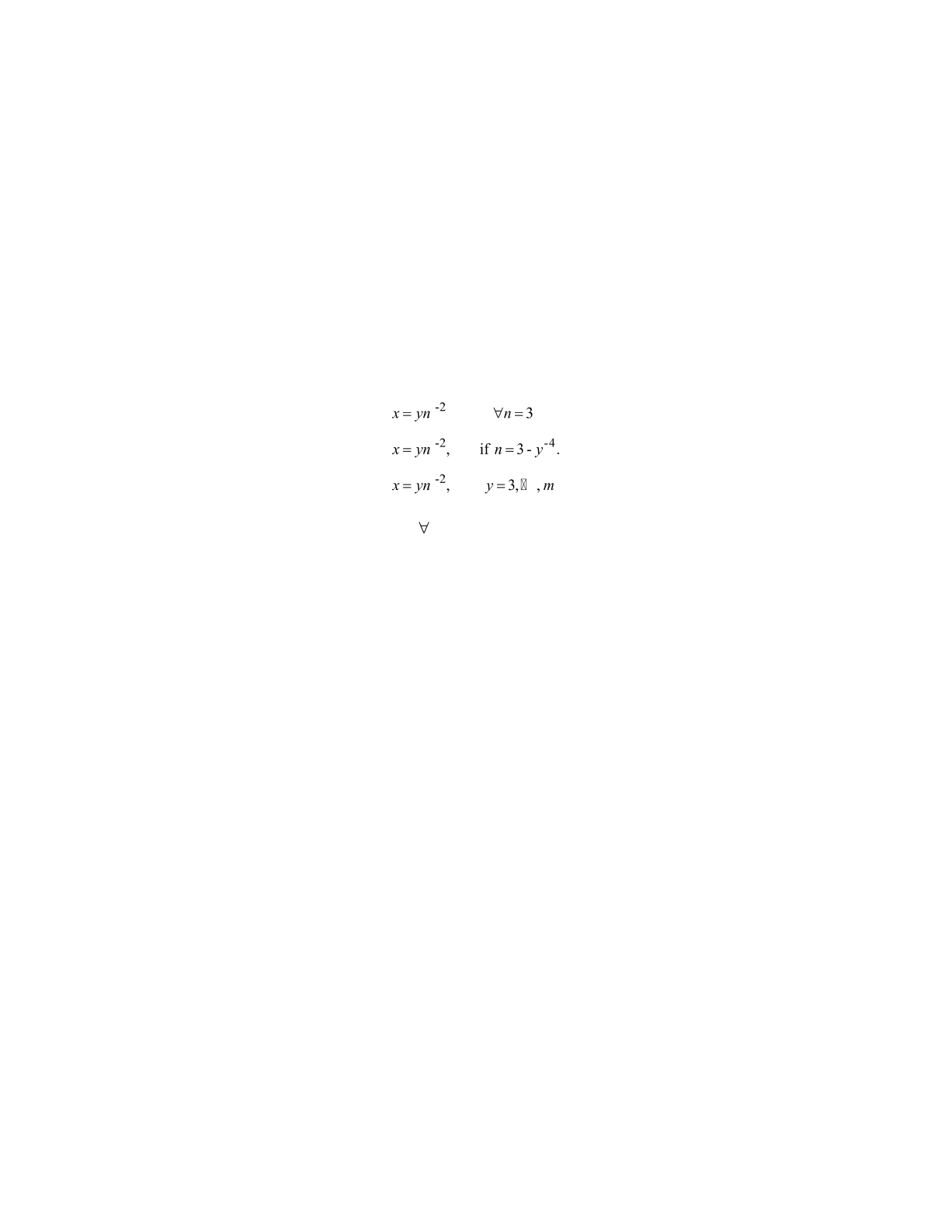
24
14) Use the word “Equation” at the start of a sentence, but in text, just use the number [e.g., in (1)].
15) Use the $ symbol versus “dollars” in sums of money.
16) The slash (/) is acceptable in place of the word “per” when it lends to the clarity of the sentence. For
example: “the ratio of 16 samples/s to 35 samples/s as compared to …”
Ellipses: In mathematics, you may use dots (ellipses) to show continuation in an expression (e.g., x
2
, ..., x
16
). The
type of mathematical expression will determine whether the ellipses points are set on the baseline or centered. If
commas or operational signs are present, they are placed after each term and after the three ellipses points. If
operational signs are used, the ellipses are centered on the operator. When commas are used, the ellipses are on the
baseline. Example:
x
1
, x
2
, …, x
n
not x
1
, x
2 …
x
n
x
1
+ x
2
+ … + x
n
not x
1
+ x
2
+ … x
n
y = 0, 1, 2, … not y = 0, 1, 2 …
x
1
x
2
… a
n
not x
1
x
2
… a
n
Conditions: In displayed equations, a comma or parentheses and a two-em space is inserted between the main
expression and the condition following it. Example:
NOTE: There is no comma before a for all “ ” symbol.
Compound Units: Compound units should be separated by a center dot (e.g., 4 V · s), but a slash may be used
since this has a different meaning (for instance, 6 V/s means volts per second). It is also possible to use a negative
power to put a unit in the denominator: cm/s
2
= cm · s
–2
. Parentheses may be used to clarify a unit: g/(cm · s) or g ·
cm
–1
· s
–1
.
Use of Periods and Commas: Equations which conclude a sentence should end with a period. The only time
punctuation is used to lead into an equation is when the lead-in text is a complete sentence. Example:
where we had the following:
x = Y + Z.
or where, i.e.,
x = Y + Z.
Commas appearing at the ends of equations are deleted unless they are critical to the punctuation of the sentence
containing the equation.
Equation Numbers
Equation numbering should be consecutive, should appear flush right on line with the last line of an equation,
should not have repeats or missing numbers, and should use a correct numbering style.
Displayed Equations
Material in displayed equations is automatically italic unless you indicate otherwise. Some simple general rules
apply. All variables are italic. Function names and abbreviations are Roman, as are units, unit abbreviations,
complete words, and abbreviations of words. Superscripts and subscripts follow this same formula: when they are
variables, they are italic; when they are abbreviations of words (such as “in” and “out” for input and output), they
are Roman. Single-letter superscripts and subscripts may be italic even if they are abbreviations, unless this leads to
inconsistency between italic and Roman characters for similar types of subscripts.
F. General Layout Rules
1) Figures and tables are placed at the tops of columns as close to their first mention as possible, but preferably
after the mention.
IEEE EDITORIAL STYLE MANUAL

25
2) Figures and tables progress vertically, not horizontally, on pages.
3) Footnotes must appear at the bottom of the column where they are first mentioned.
IEEE EDITORIAL STYLE MANUAL FOR AUTHORS

26
III. GRAMMAR AND USAGE IN TRANSACTIONS
A. Rules of Grammar
The principles of style below focus on fundamentals of modern usage. Particular emphasis is given to the rules
most commonly violated.
1) Form the possessive singular of nouns by adding “s” (Avogadro’s theorem). Follow this rule unless the
final consonant is an s (Burns’ theorem). Possessive pronouns (hers, its, yours, theirs, ours) have no
apostrophe. Indefinite pronouns use the apostrophe to show possession (someone’s rule). Contractions use an
apostrophe (it’s for …; it is). Possessives do not (its losses).
2) In a series of three or more terms, use a comma immediately before the coordinating conjunction
(usually and, or, or nor).
3) Enclose parenthetic expressions between commas (Improvement, as shown in Fig. 1, is attained by the
addition of the cogeneration). Brief phrases or single words, such as however, may or may not be parenthetic
(such connectives at the head of a sentence are more commonly left unpunctuated). The commas may be
omitted if the interruption to the flow of the sentence is slight. In this case, never omit one comma and leave
the other. Remember that many seemingly single commas stand for a pair. Clauses or phrases at the beginning
or end of sentences do not look parenthetical, but often they might just as well be placed in the middle, in
which case they would be found punctuated at both ends. At the beginning of a sentence, such an element is
set off by what should be thought of as the second comma in a pair. For instance, note the three possible
positions illustrating a parenthetical element of this kind: However the sum may later change, it is calculated
now/The sum is calculated now, however it may later change/The sum, however it may later change, is
calculated now. In all three examples, the meaning remains constant; the single commas of the first and
second sentences have the same parenthetical function as the paired commas of the third.
Parenthetic material such as dates take the comma(s) as follows: 14 February 1996 or April to June 1996 or
Saturday, 9 March 1996.
The abbreviations etc., i.e., and e.g., are parenthetic and use the comma as follows: cables, transformers, etc.,
are needed. Abbreviations for academic degrees, titles following a name, and certain restrictive terms of
identification should be punctuated as follows:
Robert D. Lorenz, Ph.D.
Ian T. Wallace, Member, requests that…
E. A. Brockmann Jr. states that…
Restrictive clauses are not parenthetic and are not set off by commas: The proof that (or which) (restrictive
clause should be “that” while nonrestrictive is “which”; “who” can be restrictive or nonrestrictive,
depending on how it is used) is given in this section is not complete.
Nonrestrictive clauses are parenthetic and are set off by commas: The address i, which is the starting address of
the message, is then transferred to a queue list on the processing part …
The nonrestrictive clause always takes “which” and is surrounded by commas. The restrictive clause can take
“that” or “which”; “that” is preferred.
4) A semicolon is used to link two independent clauses with no connecting words. You can also use a
semicolon to join two independent clauses together with one of the following conjunctive adverbs:
however, moreover, therefore, consequently, otherwise, nevertheless, thus, etc.
5) Use a colon after an independent clause to introduce a list.
6) Punctuation always goes inside quotation marks, except for the colon and semicolon. Use single
quotation marks around quotes within quotes. Quotes may be used around a new or special usage of a term
the first time only, but use of quotes in this manner should be kept to a minimum.
7) Direct quotes should be set in quotation marks in roman font. Text should not be in italics.
8) Do not use double parentheses in text expressions, but keep them in math. For example, (see (10)) should
become [see (10)].
9) All acronyms and numerical plurals do not use apostrophes, i.e., FETs, 1980s (Note: Some exceptions
may apply in mathematical writing.)
10) Compound nouns made from a one-syllable verb and a short adverb are one word when found that
way in the dictionary (setup, takeoff, breakup). Compound nouns are likely to be two words, without a
hyphen, or one word (bandwidth, bypass, flowchart, phase shift, sideband, standing wave). Compound nouns
of more than two words can be hyphenated.
IEEE EDITORIAL STYLE MANUAL

27
11) A pair of words, modifying a third word separately, does not get a hyphen (a tall water tower, a hot metal
cylinder). If the first word modifies the second, and the pair together modify the third, there is a hyphen
between the pair (a highfrequency signal, a secondorder equation). The exception to this is the adverb ending
in “ly,” which needs no hyphen to join it to the next word.
12) A hyphen is not used after the comparative or the superlative (a higher order equation, a worst case value,
nearest neighbor method). Do not hyphenate chemical compounds (sodium chloride crystals). Alloys and
mixtures take the en dash (Ni–Co, He–Ne laser).
13) Do not use commas between adjectives (a planar equiangular spiral antenna).
14) Do not hyphenate predicate adjectives (… is well known, …is second order).
15) If you are unsure, check The Merriam-Webster Dictionary to see if words are hyphenated.
16) Compound verbs are generally hyphenated (arc-weld, freeze-dry). Keep the hyphen when using the
participles of such verbs as adjectives (freezedried, arcwelded). However, verbs with up, out, down, off, on,
etc., do not have a hyphen, although the nouns formed from them may be hyphenated or one word (verb: set
up, break down, read out; noun: setup, breakdown, readout).
Words Often Confused
Affect: to change or modify (verb).
Effect: result (noun); cause (verb).
Alternate: a substitute.
Alternative: a matter of choice.
Among: involves more than two things.
Between: involves more than two things, but considers each individually.
Compare to: point out resemblances between different objects.
Compare with: point out similarities and differences between same objects.
Compose: to make up or form: a set composed of members.
Comprise: to be made up of; to be formed by: a set comprising members; members comprising a set.
Farther: distance.
Further: quantity.
Fewer: modifies plural nouns specifying countable units, e.g., fewer tubes.
Less: modifies singular mass nouns and singular abstract nouns, e.g., less air.
Imply: something suggested though not expressed.
Infer: something deduced from evidence.
Number: used when objects can be counted: a large number of people.
Amount: used when objects cannot be counted: a large amount of water.
Principal: chief, main, most important (adjective).
Principle: a rule (noun).
Precede: come before.
Proceed: continue, advance.
That: (defining, restrictive).
Which: (nondefining, nonrestrictive)
IEEE EDITORIAL STYLE MANUAL FOR AUTHORS
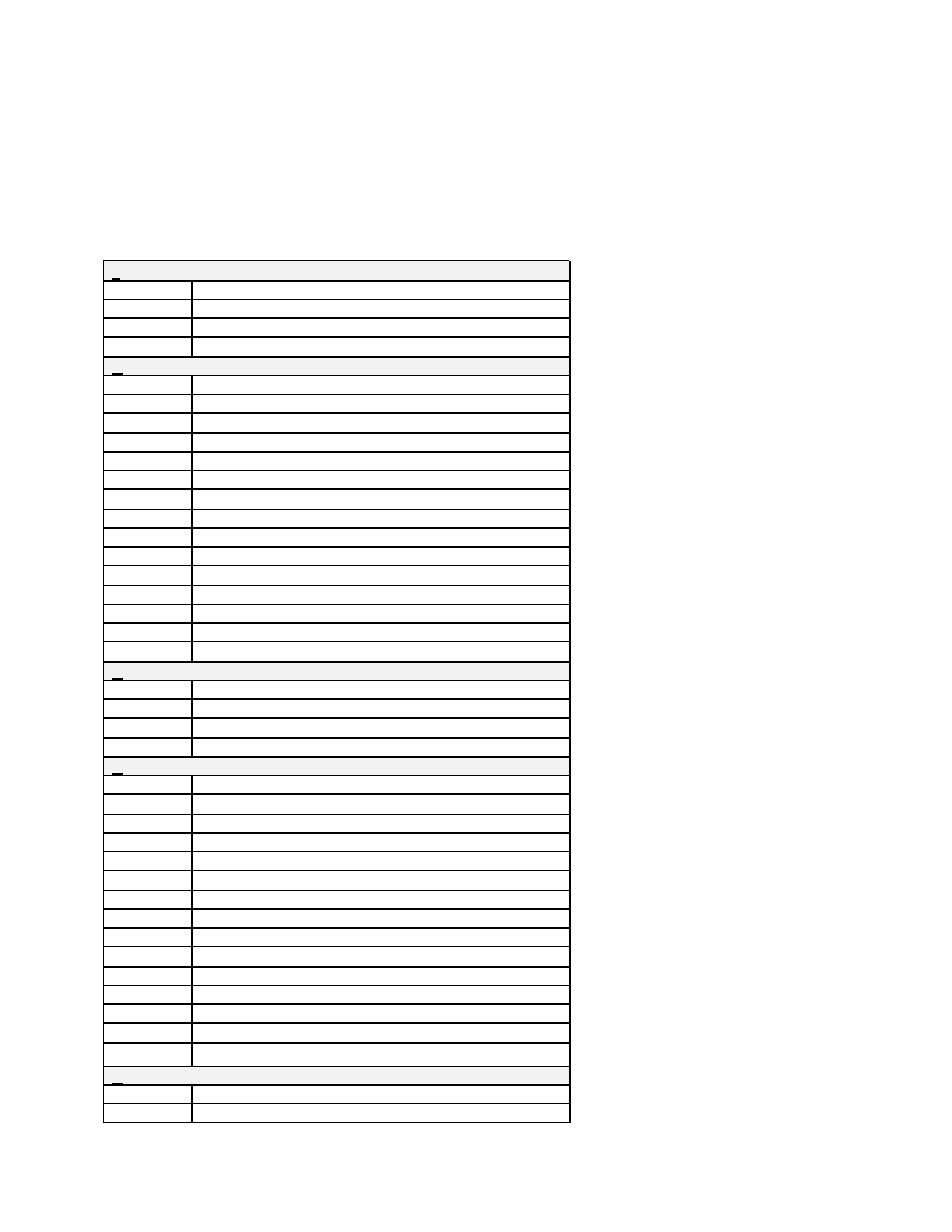
28
IV. APPENDIX
A. Some Common Acronyms and Abbreviations
NOTE: Asterisks (*) indicate terms which must be defined the first time they are used in text. Other terms
listed here may be used without definition.
#
1-D
one-dimensional
2-D
two-dimensional
3-D
three-dimensional
4-D
four-dimensional
A
ac
alternating current
A–D, A/D
analog-to-digital
AF
audio frequency*
AFC
automatic frequency control*
AGC
automatic gain control*
AM
amplitude modulation
APD
avalanche photodiode
AR
antireflection*
ARMA
autoregressive moving average*
ASIC
application-specified integrated circuit*
ASK
amplitude shift keying
ATM
asynchronous transfer mode
av
average (subscript)*
avg
average (function)
AWGN
additive white Gaussian noise*
B
B–E
base–emitter source
BER
bit error rate*
BPSK
binary phase-shift keying
BWO
backward-wave oscillator*
C
c.c.
complex conjugate (in equations)
CCD
charge-coupled device*
CDMA
code division multiple access*
CD-ROM
compact disk read-only memory
CIM
computer integrated manufacturing*
CIR
carrier-to-interference ratio*
CMOS
complimentary metal–oxide–semiconductor
CPFSK
continuous phase frequency-shift keying*
CPM
continuous phase modulation*
CPSK
continuous phase-shift keying*
CPU
central processing unit
CRT
cathode-ray tube
CT
current transformer*
CV
capacitance–voltage
CW
continuous wave*
D
dc
direct current
DC
directional coupler
IEEE EDITORIAL STYLE MANUAL
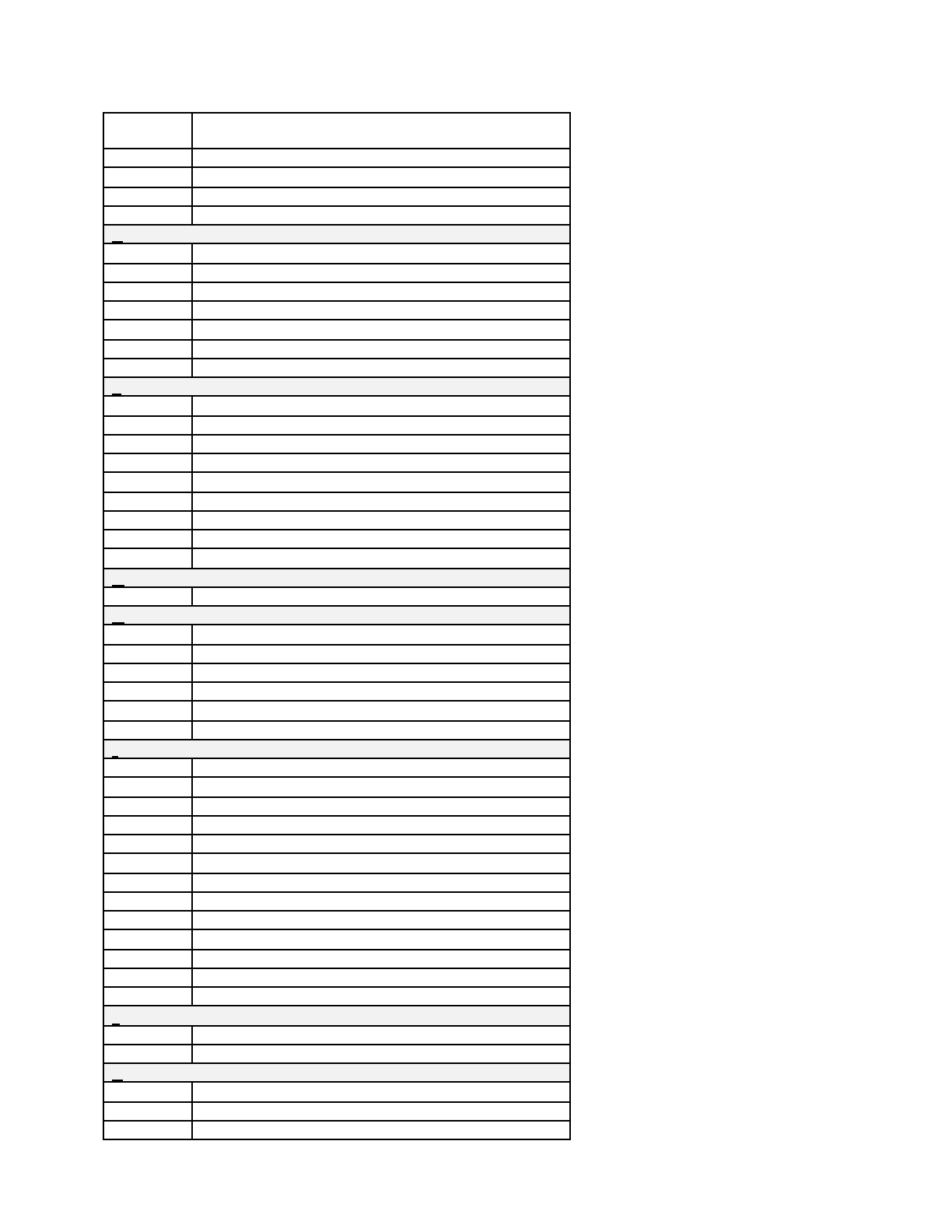
29
DF
direction finder*; deuterium fluoride; degree of
freedom*
DFT
discrete Fourier transform*
DMA
direct memory access*
DPCM
differential pulse code modulation*
DPSK
differential phase-shift keying*
E
EDP
electronic data processing
EHF
extremely high frequency*
ELF
extremely low frequency*
EMC
electromagnetic compatibility*
EMF
electromotive force*
EMI
electromagnetic interference*
ems
expected value of mean square*
F
FDM
frequency division multiplexing*
FDMA
frequency division multiple access*
FET
field-effect transistor
FFT
fast Fourier transform*
FIR
finite-impulse response*
FM
frequency modulation
FSK
frequency-shift keying*
FTP
file transfer protocol
FWHM
full-width at half-maximum*
G
GUI
graphical user interface
H
HBT
heterojunction bipolar transistor
HEMT
high-electron mobility transistor
HF
high frequency
HTML
hypertext markup language
HV
high voltage
HVdc
high voltage direct current
I
IC
impedance compensation*; integrated circuit
ID
inside diameter; induced draft*; interdigital*
IDP
integrated data processing*
IF
intermediate frequency
IGFET
insulated-gate field-effect transistor
i.i.d.
independent identically distributed*
IM
intermediate modulation
IMPATT
impact ionization avalanche transit time (diode)
I/O, I–O
input–output
IR
infrared
IR
current-resistance
ISI
intersymbol interference
I–V
current–voltage
J
JFET
junction field-effect transistor
JPEG
Joint Photographers Expert Group
L
LAN
local area network
LC
inductance–capacitance
LED
light-emitting diode
IEEE EDITORIAL STYLE MANUAL FOR AUTHORS
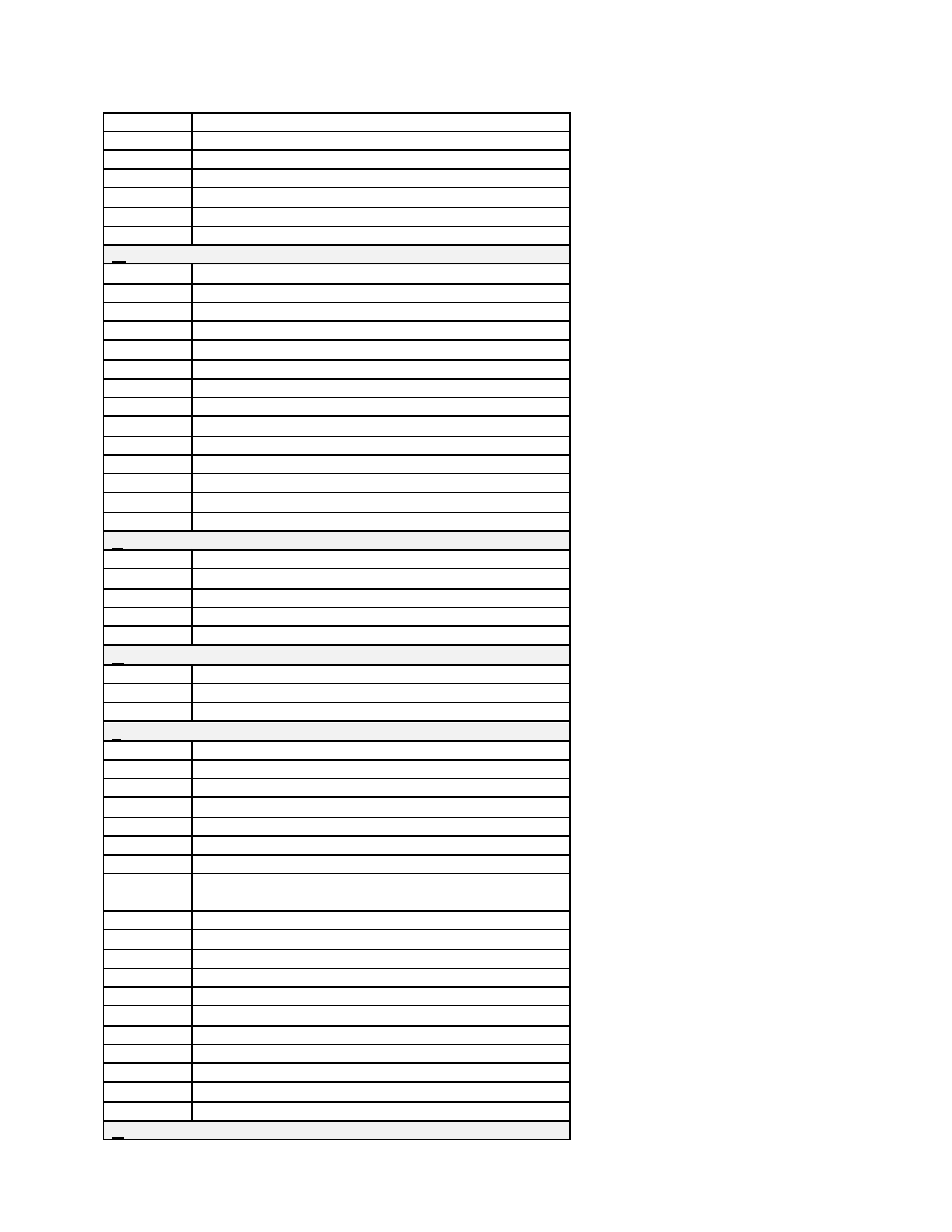
30
LHS
left-hand side*
L–I
light output–current
LMS
least mean square
LO
local oscillator*
LP
linear programming*
LPE
liquid phase epitaxy*
LR
inductance–resistance
M
MESFET
metal–semiconductor field-effect transistor
MF
medium frequency*
MFSK
minimum frequency-shift keying
MHD
magnetohydrodynamics
MIS
metal–insulator–semiconductor
MLE
maximum-likelihood estimator*
MLSE
maximum-likelihood sequence estimator*
MMF
magnetomotive force
MMIC
monolithic microwave integrated circuit*
MoM
method of moments*
MOS
metal–oxide–semiconductor
MOSFET
metal–oxide–semiconductor field-effect transistor
MOST
metal–oxide–semiconductor transistor
MPEG
Motion Pictures Expert Group
N
NA
numerical aperture*
NIR
near infrared response*
NMR
nuclear magnetic resonance*
n-p-n
(diode)
NRZ
nonreturn to zero*
O
OD
outside diameter
OEIC
optoelectronic integrated circuit*
OOP
object-oriented programming
P
PAM
pulse-amplitude modulation*
PC
personal computer
PCM
pulse-code modulation*
pdf
probability density function*
PDM
pulse-duration modulation*
PF
power factor*
PID
Proportional-integral differential
p-i-n,
p-n-p
(diode)
PLL
phase-locked loop*
PM
phase modulation*
PML
perfectly matched layer
pp, p–p
peak-to-peak*
PPM
pulse-position modulation*
PRF
pulse-repetition frequency*
PRR
pulse-repetition rate*
PSK
phase-shift keying*
PTM
pulse–time modulation
p.u.
per unit*
PWM
pulse width modulation*
Q
IEEE EDITORIAL STYLE MANUAL
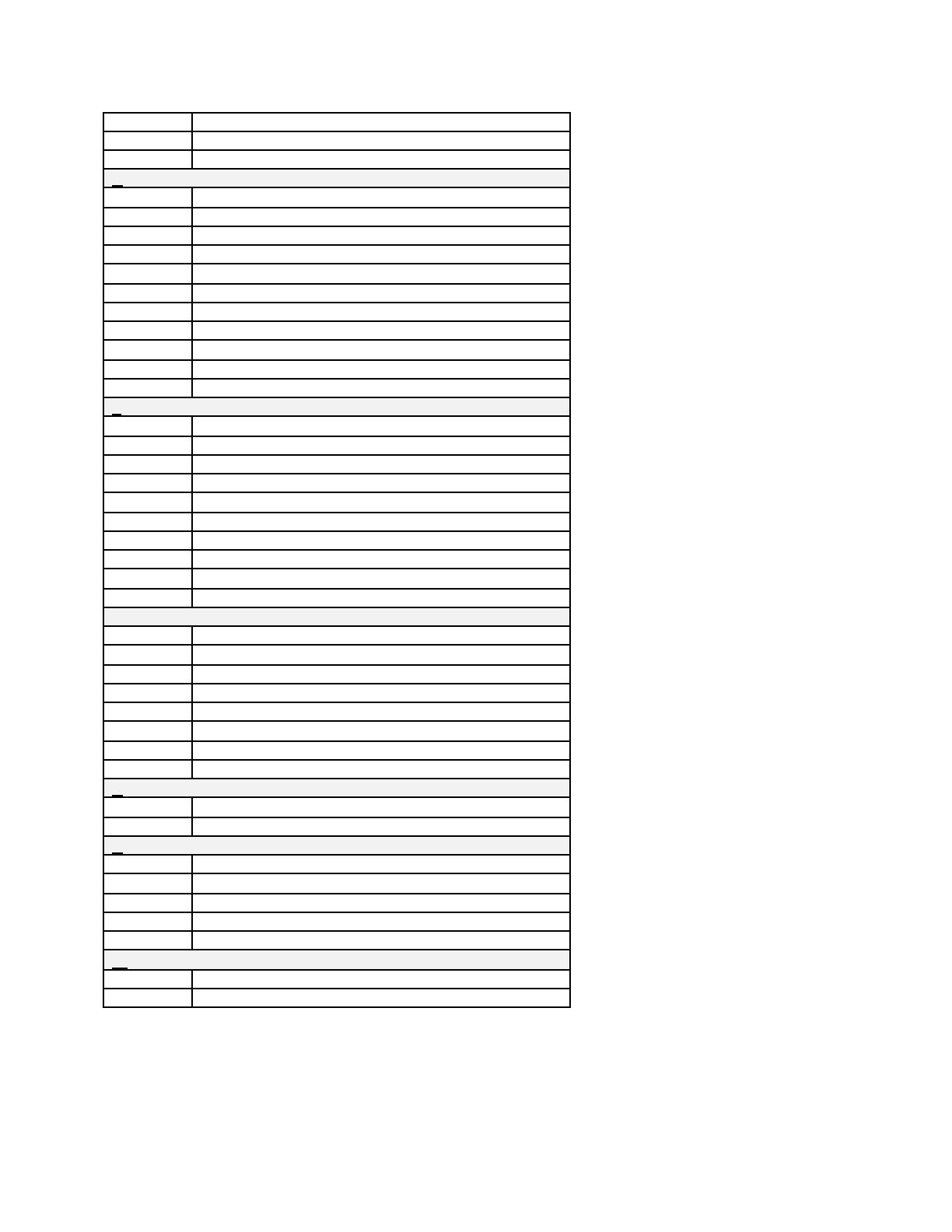
31
Q
quality factor; figure of merit
QoS
quality of service
QPSK
quaternary phase-shift keying
R
RAM
random access memory
RC
resistance–capacitance
R&D
research and development
RF
radio frequency
RFI
radio frequency interference*
RHS
right-hand side*
RIN
relative intensity noise*
RL
resistance–inductance
rms
root mean square
ROM
read-only memory
RV
random variable
S
SAW
surface acoustic wave*
SGML
standard generalized markup language
SHF
super high frequency*
SI
International System of Units; severity index*
SIR
signal-to-interference ratio
S/N, SNR
signal-to-noise ratio
SOC
system-on-a-chip*
SSB
single sideband*
SW
short wave*
SWR
standing-wave ratio*
TDM
time-division modulation*; time-division multiplexing*
TDMA
time-division multiple access*
TE
transverse electric
TEM
transverse electromagnetic
TFT
thin-film transistor*
TM
transverse magnetic
TVI
television interference*
TWA
traveling-wave amplifier*
U
UHF
ultrahigh frequency
UV
Ultraviolet
V
VCO
voltage-controlled oscillator*
VHF
very high frequency*
V–I
voltage–current
VLF
very low frequency*
VLSI
very large scale integration*
W
WAN
wide area network
WDM
wavelength division multiplexing*
IEEE EDITORIAL STYLE MANUAL FOR AUTHORS
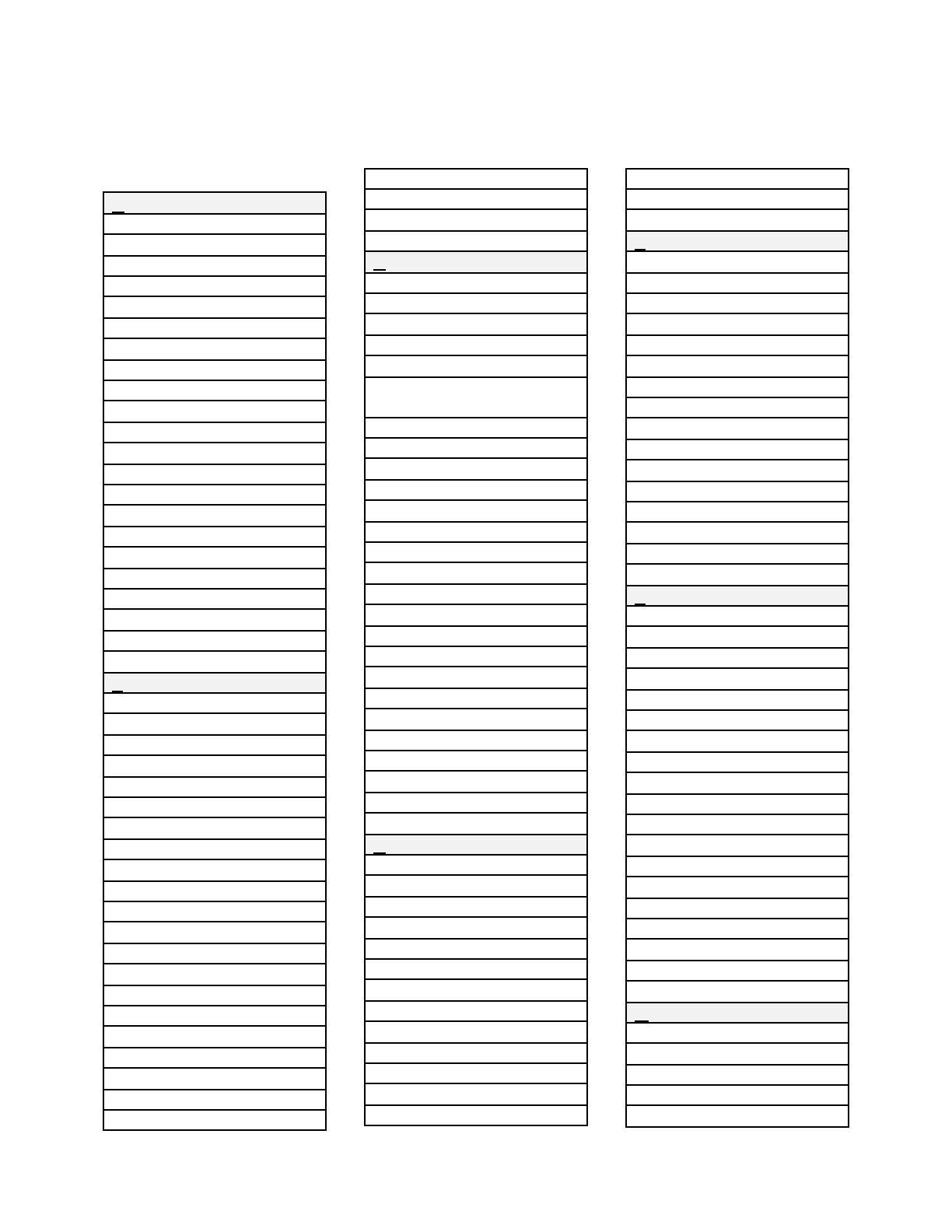
32
B. Common Hyphenations and Misspellings
A
a posteriori
a priori
Abelian
accommodate
acknowledgment
acoustoelectric
acoustooptical
ad hoc
ad hoc networks
adder
aerospace
aftereffect
airborne
all-pass (adj)
Alnico
alphameric
alphanumeric
analog (not analogue)
appendixes
arc-back (n, adj)
arc-over (n, adj)
axle
B
back EMF
back-end (adj)
backscatter
band-limited (adj)
bandpass
band-shared (adj)
bandwidth
bang-bang
base–emitter [en dash]
base–collector [en dash]
baseband
baseline
Bayes’ rule
beamwidth
Bernoulli polynomial
Bessel function
bimetallic
biomedical
blackbody
Boltzmann’s constant
Boolean algebra
broadband
bulk–source [en dash]
bus (not buss)
bypass
C
C-band
Cartesian
Cascade
cascode
Cauchy’s inequality
Chebyshev
(not Tchebbycheff)
chi-square
Clebsch–Gordan coefficient
coauthor (also, coworker)
coax (coaxial)
collinear (not colinear)
continuous-time (adj)
coset
costate
Coulomb wave function
counterclockwise
counterexample
coworker
coupled-mode (adj)
cross correlation
crossover
cross section
cross-sectional (adj)
crosstalk
cutoff
cybersecurity
D
database
deadtime (or dead time)
debug, debugged
Debye temperature
Dewar
diagramed
dielectric
diesel
digamma function
Dirac
discretization
discusser
Doppler
drain–source [en dash]
dropout
dyadic
E
eccentricity
eigenfunction
eigenvalue
eigenvector
elastance
elastooptical
electrooptic
elliptical coordinates
elliptic integrals
emitter–bulk [en dash]
end-effector
endfire
endpoint
et al.
Euler function
exponentiate
F
fan-in
fan-out
far-field (adj)
fast Fourier transform
feedback
feedback-free (adj)
first-order (adj)
flat-band
flip-flop
flowchart
flowmeter
flowthrough
fold (twofold, n-fold)
foreword
formulas (not formulae)
forward scatter
4-vector
front-end (adj)
Fresnel
G
gate–source [en dash]
gate–drain [en dash]
gauge (not gage)
Gaussian distribution
Gegenbauer
IEEE EDITORIAL STYLE MANUAL
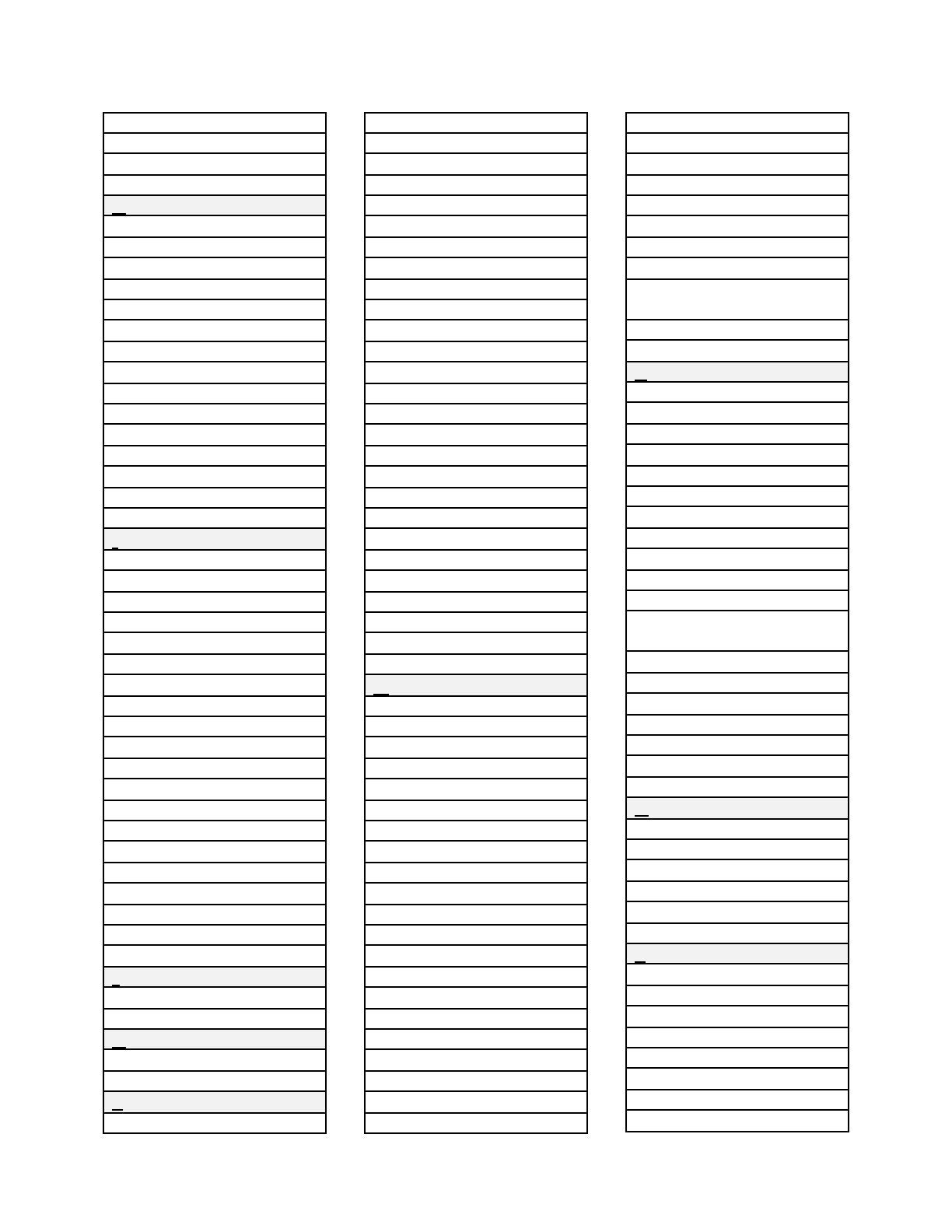
33
gimbaled
gradient
(the) Green’s function
Gudermannian
H
half-angle
half-plane
half-space
half-wave
halfway
Hankel function
Heaviside
Hermite
Hermitian
Hertzian
higher order (adj)
high-order (adj)
high-pass (adj)
hookup
hydroelectric
I
iff (if and only if)
imbalance (n)
inasmuch as
indexes (plural of index)
indices (plural used in math)
infrared
inhomogeneous
input, inputted
input–output [en dash]
in situ
insofar as
in vitro
in vivo
integer
integral
integrand
integrator
integro-differential
Internet
Itô
J
Jacobian
Jacobi’s polynomials
K
Ka-band
Kronecker delta
L
L-band
Lagrange
Lagrangian
Laguerre polynomial
Lame’s transform
Laplace transform
Laplacian
Laurent series
left-hand side
leftmost
Legendre
Leibnitz (or Leibniz)
leveled
lightweight
like (suffix, close up)
line shape
lineup
linewidth
lockout
log-likelihood (adj)
lookup table
loudspeaker
lower order (adj)
low-order (adj)
low-pass (adj)
Lur’e
Lurie
Lyapunov (not Liapunov)
M
macro (noun)
magnetohydrodynamics
magnetooptic
main lobe
makeup
manhole
man-hour
man-made
manpower
Markov process
m-ary
Mathieu’s equation
matrices
mean-square
mid (prefix) close up
midband
midline
midplane
midpoint
miniscule
missile
modem
modulo (mod)
modulus
monotonic
monotonically
monotonicity
Mossbauer
m-sequence (noun)
multi (prefix) usually one
word
multithreshold
Mylar
N
narrowband (adj)
n-ary
nearby
near-field (adj)
neoprene
Neumann
n-junction
n-layer
non (prefix) one word
non-Euclidean
non-Gaussian
non-Hermitian
nonnegative
non-Stokes’
nonzero
NP-hard
nth-order (adj)
n-tuple
n-type
n-well
O
ohmmeter
one-dimensional (adj)
ORed, ORing
ON-OFF
output, outputted
overall (adj)
P
parameterization
particle
passband
percent
Permalloy
Perspex
phaselength
phase shift
IEEE EDITORIAL STYLE MANUAL FOR AUTHORS
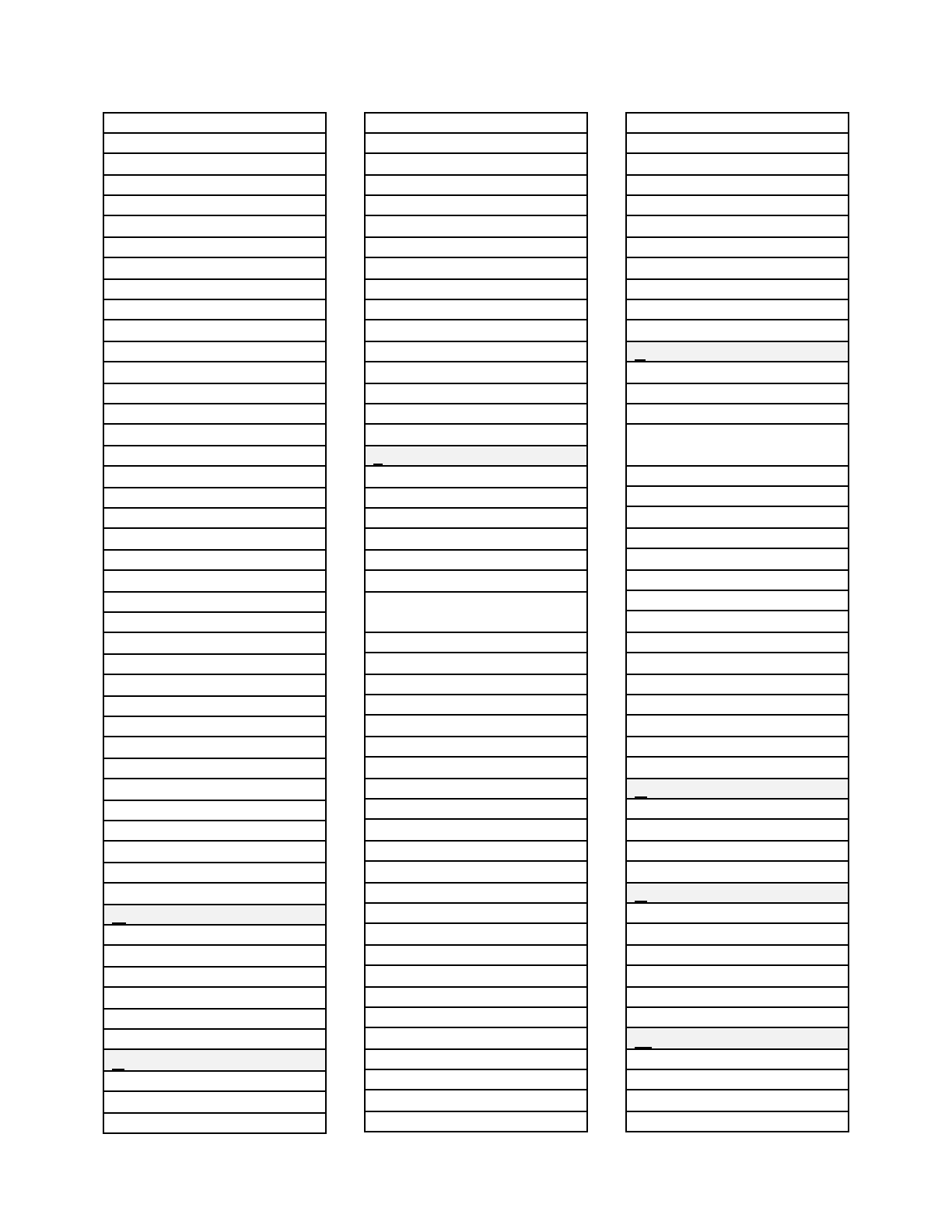
34
phasewidth
photoelectric
photoetch
photoresist
pickup
piecewise linear
piezoelectricity
p-i-n
pinchoff
p-junction
Planck’s constant
p-n junction
p-n-p (not PNP)
p^+-n-p^++
Poisson distribution
positive definite
postmultiplication
pothead
potline
powerhouse
power plant
preceding
premultiplication
printout
proceeding
programmed
proof (suffix) one word
propagation
pseudo (prefix) one word
pseudorandom
p-type
pull-in
pull-out
pulselength
pulse shape
pulsewidth
punchthrough
p-well
Q
quadratic
quarter-wave
quartic
quasi- (prefix) hyphen
quaternary
Q value
R
radioactive
radio-astronomic
radio astronomy
radio frequency
random access (adj)
readback
READ head
readin (noun)
readout (noun)
real-valued (adj)
reentry
reexamine
Riccati
Riemann
right-hand side
rise time
root-mean-square (adj)
roundoff (adj)
Runge–Kutta
S
saddle point
scalar (magnitude)
scaler (machine)
scalor (rare)
self- (prefix) hyphen
self-adjoint
semi (prefix) usually one
word
semi-infinite
servo (servomechanism)
servo amplifier
-shaped (hyphen)
sideband
sidelobe
signaling
slip ring
slow wave
so-called
solid-state (adj)
space-time
special-purpose (adj)
spirule
state of the art (noun)
state-variable (adj)
step-down
step-up
Stirling numbers
Stokes’
stopband
straightforward
strain gauge
Struve’s function
Sturm–Liouville [en dash]
suboptimum
subproblem
succeeding
successive
summable, asummable
supercoding
supermartingale
supersede
switchgear
switchyard
T
table lookup
takeoff
Taylor expansion
Tchebbyscheff
(use Chebyshev)
Teflon
Teletype
teletypewriter
tensor
thin-film (adj)
threefold
3-space
throughput
time dependence
time-varying (adj)
tradeoff
traveling
two-port (or 2-port)
two’s complement
-type (hyphen)
U
ultrahigh frequency
ultrasonic
ultraviolet
unbalance (verb)
V
Van de Graaf
van der Waals
vector
versus
vertical
vertices
W
watthour meter
wattmeter
waveband
waveform
IEEE EDITORIAL STYLE MANUAL
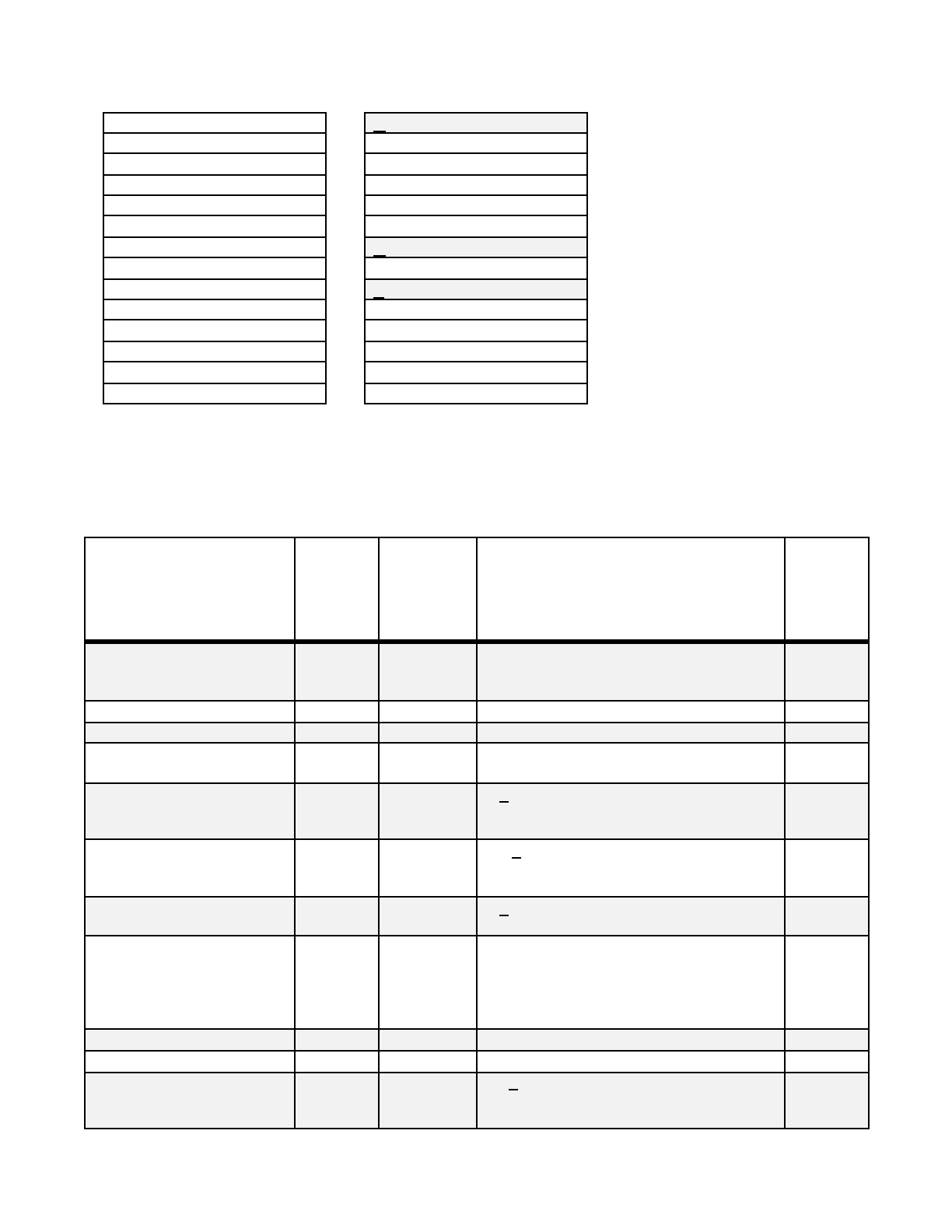
35
wavefront
wave function
waveguide
wavelength
wavenumber
wave shape
wave vector
wideband
wide-sense (adj)
widespread
wise (suffix) one word
worldwide
worst case (adj)
WRITE head
X
x-axis
X-band
x-direction
X-ray (adj)
xy plane
Y
Yagi
Z
Zener diode
zero-input (adj)
zero-sum (adj)
zeroth-order (adj)
z transform
C. Table of Units and Quantity Symbols
NOTE: Asterisks (*) indicate SI units, preferred multiples of SI units, or other units acceptable for use
with SI.
Unit
Unit
Symbol
Sometimes
Occur as:
(do not use)
Applications and Notes
Quantity
Symbol
(for use as
variables,
etc.)
*ampere
A
amp, a
SI unit of electric current.
I
U
F
ampere-hour
Ah
amp-hr
Also A · h.
*ampere (turn)
A
At
SI unit of magnetomotive force.
F
*ampere per meter
A/m
SI unit of magnetic field
strength.
A
H
ångström
Å
Å
Å Δ 10
-10
m.
Deprecated (see ANSI/IEEE
Std 268-1992).
atmosphere, standard
atm
atm Δ 101 325 Pa.
Deprecated (see ANSI/IEEE
Std 268-1992).
atmosphere, technical
at
at Δ kgf/cm
2
.
Deprecated (see ANSI/IEEE Std 268-1992).
*atomic mass unit (unified)
u
The (unified) atomic mass unit is defined as
one-twelfth of the mass of an atom of the
carbon-12 nuclide. Use of the old atomic mass
unit (amu), defined by reference to oxygen, is
deprecated.
*atto
a
SI prefix for 10
-18
.
*attoampere
aA
bar
bar
b, barye
bar Δ 100 kPa. Use of the bar is strongly
discouraged (see ANSI/IEEE Std 268-1992).
Except for limited use in meteorology.
IEEE EDITORIAL STYLE MANUAL FOR AUTHORS
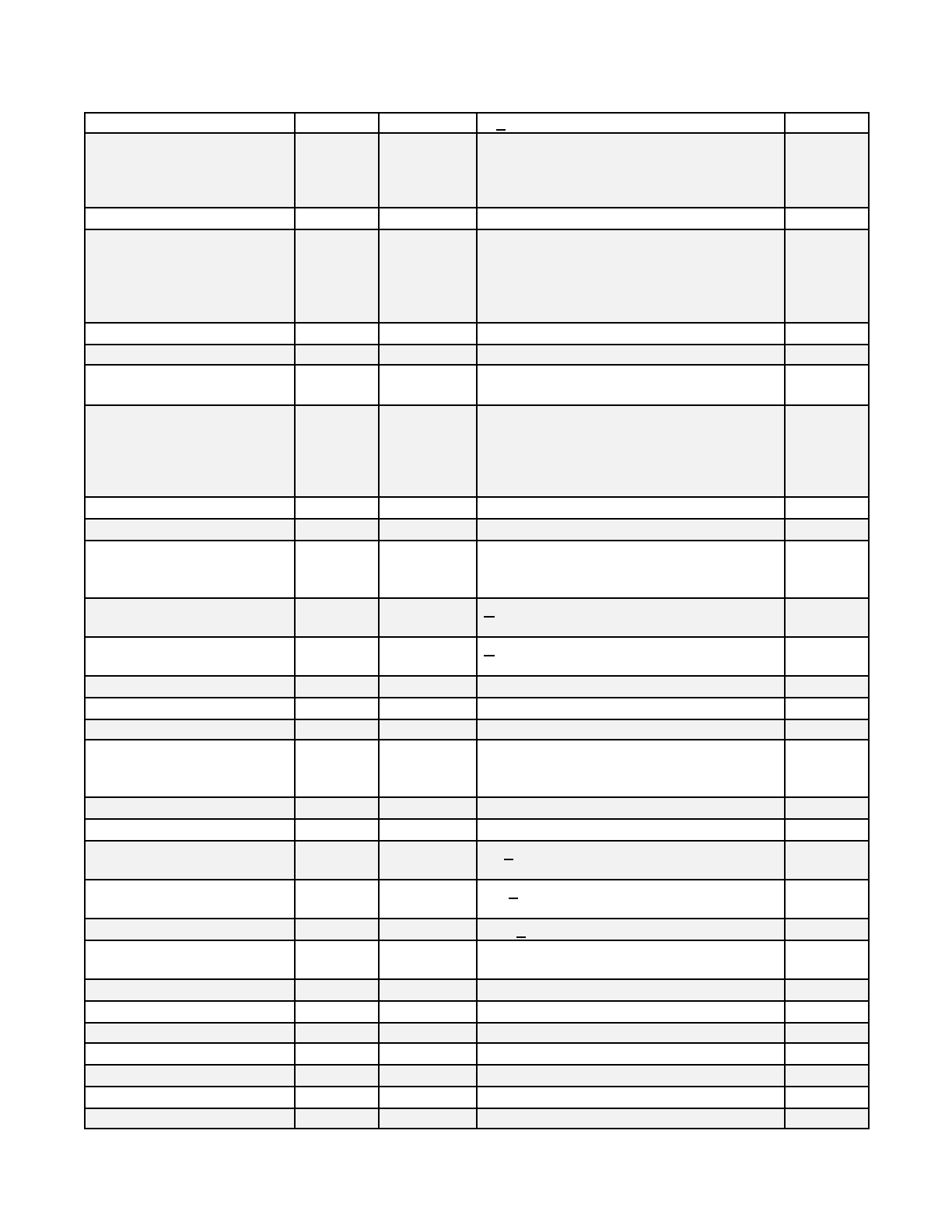
36
barn
b
b Δ 10
-28
m
2
.
barrel
bbl
bbl = 42 gal
US
= 158.99 L.
This is the standard barrel used for petroleum
and petroleum products. Different standard
barrels are used for other commodities.
barrel per day
bbl/d
baud
Bd
baud
(w/prefix)
In telecommunications, a unit of signaling
speed equal to one element per second. The
signaling speed in bauds is equal to the
reciprocal of the signal element length in
seconds.
1/τ
bel
B
b
*becquerel
Bq
SI unit of activity of a radionuclide.
billion electronvolts
GeV
bev, BeV
The name gigaelectronvolt is preferred for this
unit.
bit
b
In information theory, the bit is a unit of
information content equal to the information
content of a message, the a priori probability
of which is one-half. In computer science, the
name bit is used as a short form of binary digit.
bit per second
b/s
British thermal unit
Btu
byte
B
A byte is a string of bits, usually eight bits
long, operated on as a unit. A byte is capable of
holding one character set.
calorie (International Table)
cal
IT
Δ cal
IT
4.1868 J. Deprecated (see ANSI/IEEE
Std 268-1992).
calorie (thermochemical)
cal
Δ cal 4.1840 J. Deprecated (see ANSI/IEEE
Std 268-1992).
*candela
cd
SI unit of luminous intensity.
I
candela per square inch
cd/in
2
Use of the SI unit cd/m
2
is preferred.
*candela per square meter
cd/m
2
nit
SI unit of luminance.
L
candle
cd
The unit of luminous intensity has been given
the name candela. Use of the name candle for
this unit is deprecated.
*centi
c (prefix)
SI prefix for 10
-2
.
*centimeter
cm
centipoise
cP
cP Δ mPa · s. The name centipoise is
deprecated (see ANSI/IEEE Std 268-1992).
centistokes
cSt
cSt Δ mm
2
/s. The name centistokes is
deprecated (see ANSI/IEEE Std 268-1992).
*circular mil
cmil
cmil Δ (π/4) · 10
-6
in
2
.
*coulomb
C
c
SI unit of electric charge.
Q
*cubic centimeter
cm
3
cc
Volume. (Preferred SI unit multiple.)
cubic foot
ft
3
cubic foot per minute
ft
3
/min
cfm
cubic foot per second
ft
3
/s
cubic inch
in
3
*cubic meter
m
3
*cubic meter per second
m
3
/s
IEEE EDITORIAL STYLE MANUAL
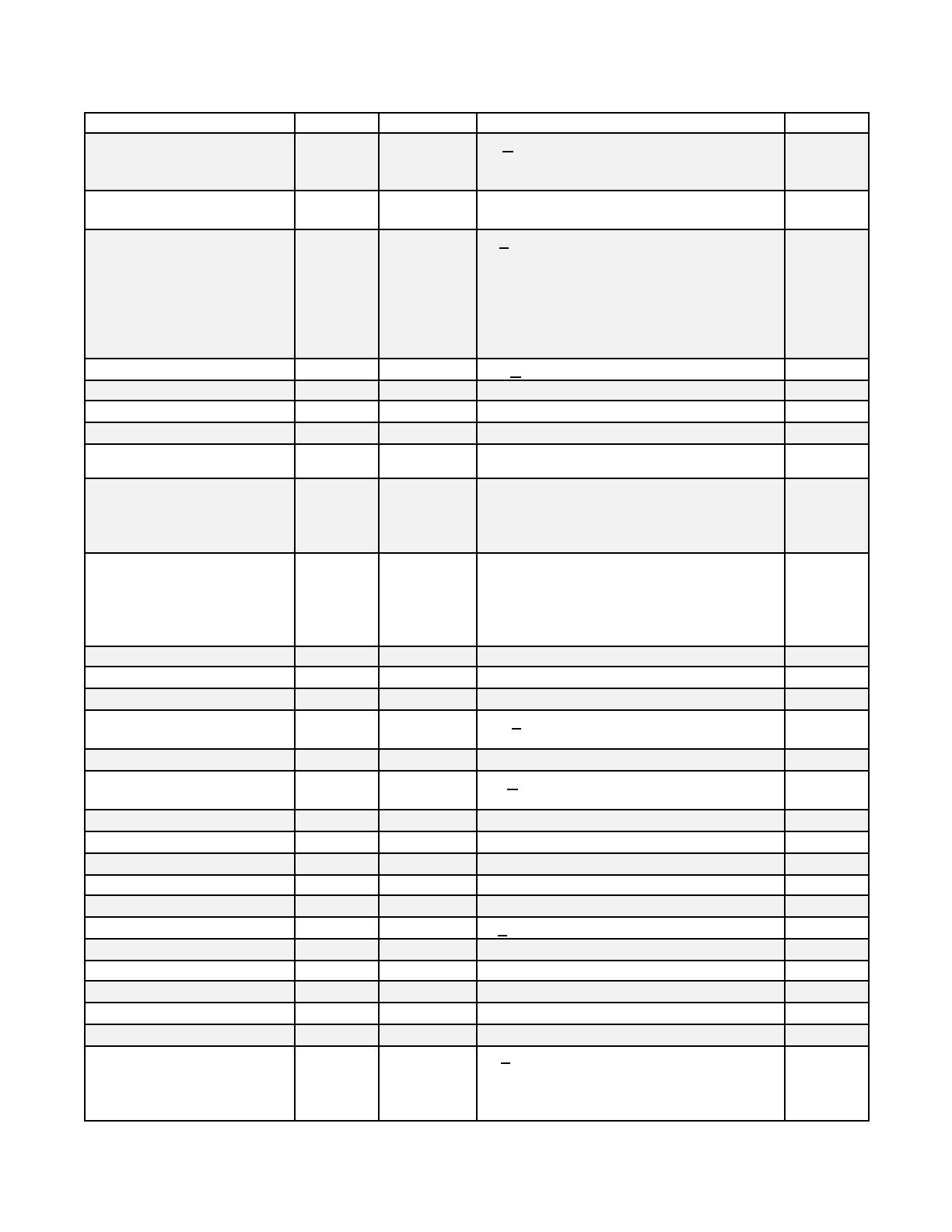
37
cubic yard
yd
3
curie
Ci
C
Ci Δ 3.7 x10
10
Bq. A unit of activity of a
radionuclide. Use of the SI unit, the becquerel,
is preferred.
cycle per second
Hz
c/s, cps, c/sec,
cycle
See hertz.
darcy
D
D Δ cP·(cm/s)·(cm/atm) = 0.986923 µm
2
. A
unit of permeability of a porous medium. By
traditional definition, a permeability of one
darcy will permit a flow of 1 cm
3
/s of fluid of
1 cP viscosity through an area of 1 cm
2
under a
pressure gradient of 1 atm/cm. Deprecated (see
ANSI/IEEE Std 268-1992).
day
d
day Δ 24 h.
deci
d (prefix)
SI prefix for 10
-1
.
decibel
dB
db, DB
degree (plane angle)
···°
deg
degree (temperature)
degree Celsius
°C
degree
centigrade
SI unit of Celsius temperature. The degree
Celsius is a special name for the kelvin, used in
expressing Celsius temperatures or temperature
intervals.
t
degree Fahrenheit
°F
Note that the symbols for °C, °F, and °R are
comprised of two elements, written with no
space between the ° and the letter that follows.
The two elements that make the complete
symbol are not to be separated.
degree kelvin
K
See kelvin.
degree Rankine
°R
deka
da
SI prefix for 10.
dyne
dyn
dyne
dyn Δ 10
-5
N. Deprecated (see ANSI/IEEE Std
268-1992).
F
*electronvolt
eV
ev
erg
erg
erg Δ 10
-7
J. Deprecated (see ANSI/IEEE Std
268-1992).
exa
E
SI prefix for 10
18
.
exbi
Ei
Prefix for 2
60
.
*farad
F
f, fd
SI unit of capacitance.
C
*femto
f
SI prefix for 10
-15
.
femtometer
fm
foot
ft
ft Δ 0.3048 m.
foot of water
ftH
2
O
ftH
2
O = 2989.1 Pa. (ISO).
1
foot per minute
ft/min
fpm
foot per second
ft/s
fps, ft/sec
foot per second squared
ft/s
2
foot pound-force
ft · lbf
footcandle
fc
fc Δ lm/ft
2
. The name lumen per square foot is
also used for this unit. Use of the SI unit of
illuminance, the lux (lumen) per square meter,
is preferred.
IEEE EDITORIAL STYLE MANUAL FOR AUTHORS
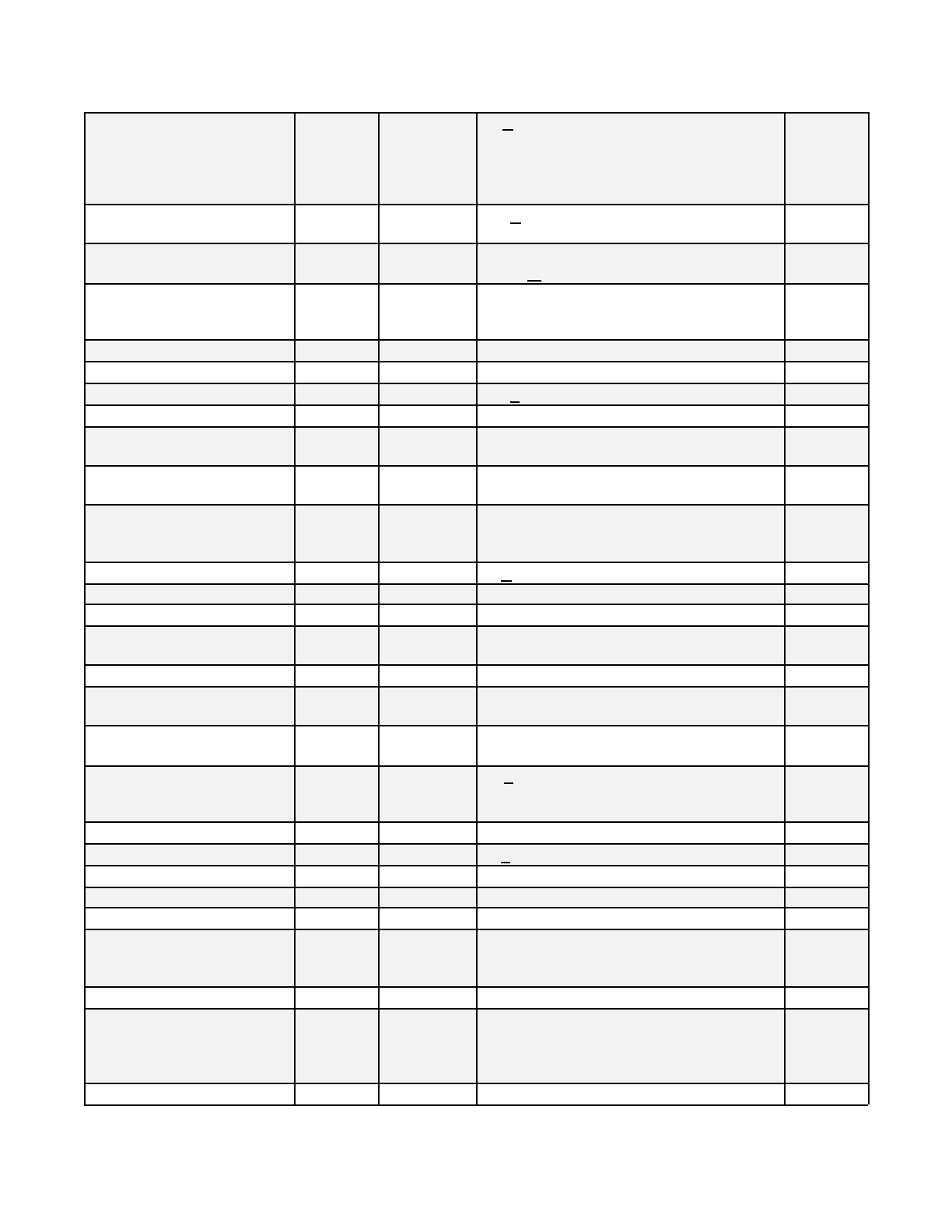
38
footlambert
fL
fL Δ (1/π) cd/ft
2
. A unit of luminance. One
lumen per square foot leaves a surface whose
luminance is one footlambert in all directions
within a hemisphere. Use of the SI unit, the
candela per square meter, is preferred.
gal
Gal
Gal Δ cm/s. Deprecated (see ANSI/IEEE Std
268-1992).
gallon
gal
1 gal
UK
= 4.5461 L.
1 gal
US
Δ 231 in
3
= 3.7854 L.
gauss
G
The gauss is the electromagnetic CGS unit of
magnetic flux density. Deprecated (see
ANSI/IEEE Std. 268-1992).
B
gibi
Gi
Prefix for 2
30
.
*giga
G
kM
SI prefix for 10
9
.
gigabyte
GB
GB Δ 10
9
B.
*gigaelectronvolt
GeV
bev, BeV
*gigahertz
GHz
kMHz, KMC,
Gc/s
1
The term “(ISO)” means that the definition is
from ISO 31.
gilbert
Gb
The gilbert is the electromagnetic CGS unit of
magnetomotive force. Deprecated (see
ANSI/IEEE Std 268-1992).
grain
gr
gr Δ lb/7000.
*gram
g
gm
m
gram per cubic centimeter
g/cm
3
*gray
Gy
SI unit of absorbed dose in the field of
radiation dosimetry.
*hecto
h
SI prefix for 10
2
.
*henry
H
Hy, hy
SI unit of inductance.
L
P, P
m
*hertz
Hz
cps, c/s, cycle
SI unit of frequency.
f , ν
B
horsepower
hp
hp Δ 550 ft · lbf/s = 746 W. The horsepower is
an anachronism in science and technology. Use
of the SI unit of power, the watt, is preferred.
*hour
h
hr
inch
in
in.
in Δ 2.54 cm.
inch of mercury
inHg
inHg = 3386.4 Pa (ISO).
inch of water
inH
2
O
inH
2
O = 249.09 Pa (ISO).
inch per second
in/s
ips
*joule
J
SI unit of energy,
work,
and quantity of heat.
E
W
Q
*joule per kelvin
J/K
SI unit of heat capacity and of entropy.
S
kelvin
K
In 1967, the CPGM gave the name kelvin to the
SI unit of temperature, which had formerly
been called degree kelvin, and assigned it the
symbol K (without the symbol °).
kibi
Ki
Prefix for 2
10
.
IEEE EDITORIAL STYLE MANUAL
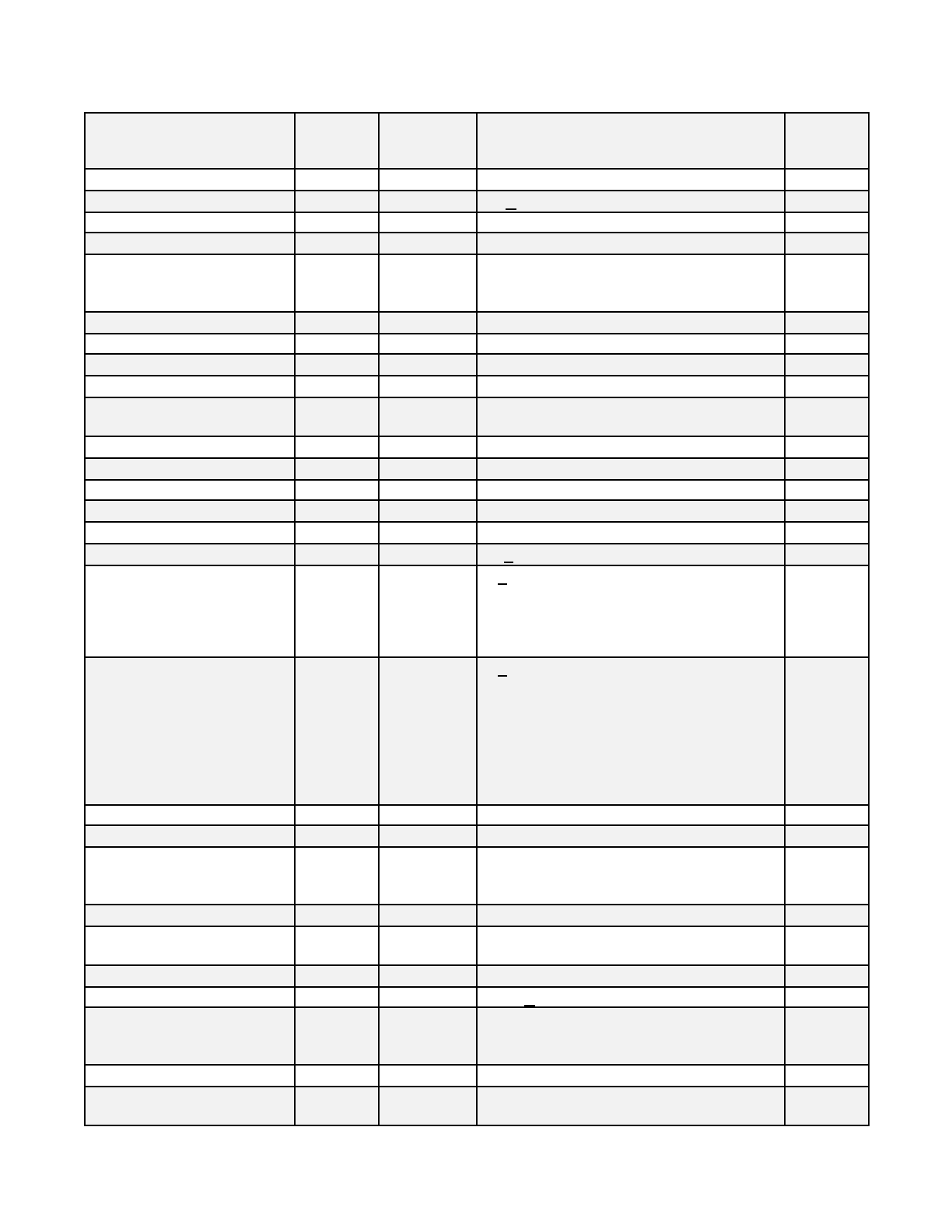
39
*kilo
k
SI prefix for 10
3
. The symbol k shall not be
used for kilo. The prefix kilo shall not be used
to mean 2
10
(that is, 1024).
*kilobit per second
kb/s
*kilobyte
kB
kB Δ 1000 bytes.
kilogauss
kG
Deprecated (see ANSI/IEEE Std 268-1992).
*kilogram
kg
SI unit of mass.
kilogram-force
kgf
Deprecated (see ANSI/IEEE Std 268-1992). In
some countries the name kilopond (kp) has
been used for this unit.
*kilohertz
kHz
*kilohm
kΩ
R
*kilometer
km
*kilometer per hour
km/h
kilopound-force
klbf
Kilopound-force should not be misinterpreted
as kilopond (see kilogram-force).
*kilovar
kvar
Q
*kilovolt
kV
*kilovoltampere
kVA
KVA, kva
*kilowatt
kW
kilowatthour
kWh
Also kW·h.
knot
kn
kn Δ nmi/h. 0.514 m/s.
lambert
L
L Δ (1/π)cd/cm
2
. A CGS unit of luminance.
One lumen per square centimeter leaves a
surface whose luminance is one lambert in all
directions within a hemisphere. Deprecated
(see ANSI/IEEE Std 268-1992).
*liter
L
L Δ 10
-3
m
3
. In 1979, the CGPM approved L
and l as alternative symbols for the liter.
Because of frequent confusion with the
numeral 1, the letter symbol l is not
recommended for U.S. use (see Federal
Register notice of December 20, 1990, vol. 55,
no. 245, p. 52242). The script l shall not be
used as a symbol for liter.
V, v
liter per second
L/s
*lumen
lm
SI unit of luminous flux.
Φ
lumen per square foot
lm/ft
2
A unit of illuminance and also a unit of
luminous exitance. Use of the SI unit, lumen
per square meter, is preferred.
*lumen per square meter
lm/m
2
SI unit of luminous exitance.
M
*lumen per watt
lm/W
SI unit of luminous efficacy.
K(λ)
K, K
t
*lumen second
lm·s
SI unit of quantity of light.
Q
*lux
lx
1x/lm Δ /m
2
. SI unit of illuminance.
E
maxwell
Mx
The maxwell is the electromagnetic CGS unit
of magnetic flux. Deprecated (see ANSI/IEEE
Std 268-1992).
mebi
Mi
Prefix for 2
20
.
*mega
M
SI prefix for 10
6
. The prefix mega shall not be
used to mean 2
20
(that is, 1 048 576).
IEEE EDITORIAL STYLE MANUAL FOR AUTHORS
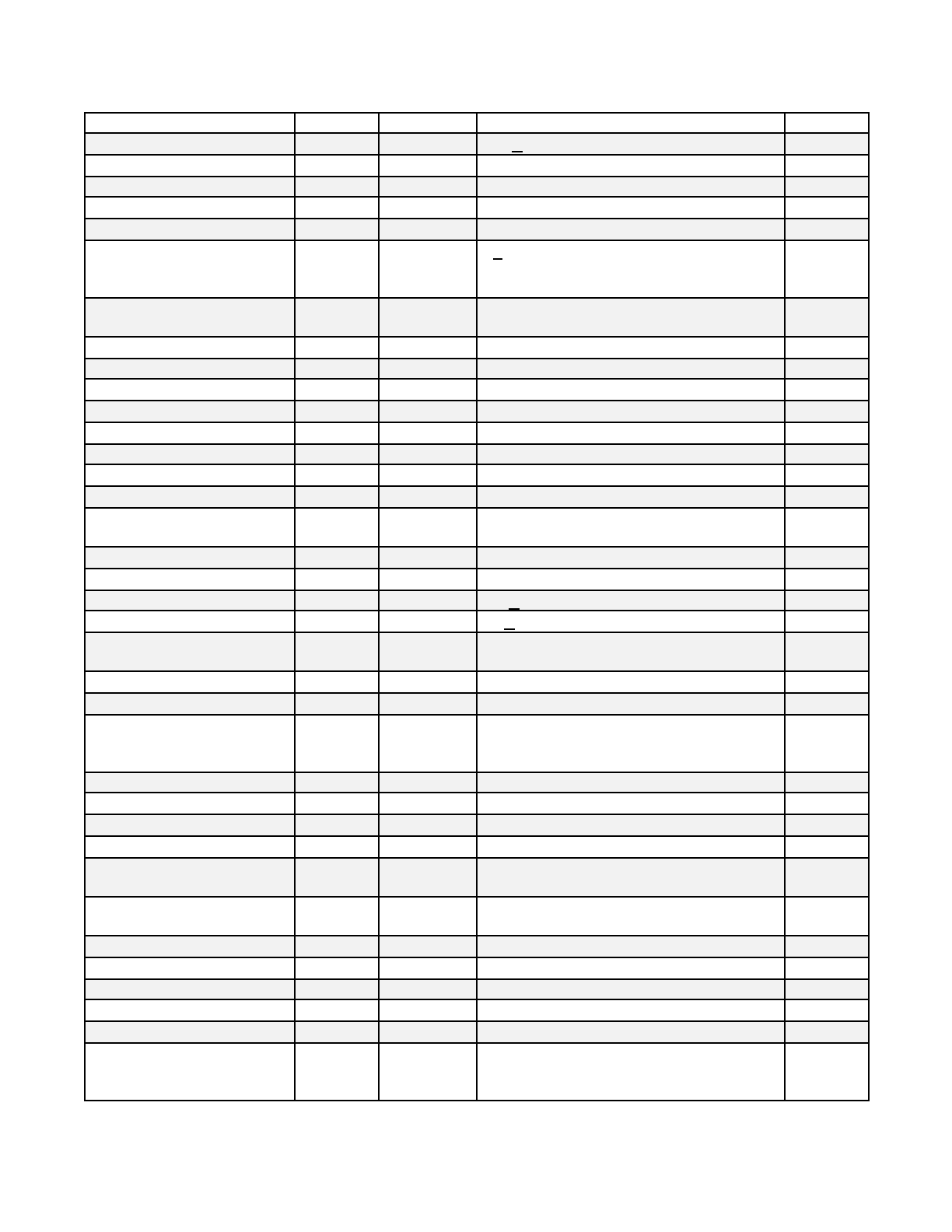
40
megabit per second
Mb/s
*megabyte
MB
MB Δ 1 000 000 bytes.
*megaelectronvolt
MeV
*megahertz
MHz
*megohm
MΩ
M
*meter
m
SI unit of length.
L
metric ton
t
t Δ 1000 kg. Use of the name tonne is
deprecated in the U.S. (see ANSI/IEEE Std
268-1992).
mho
S
Ω
-1
. The name mho was formerly given to the
reciprocal ohm. Deprecated; see siemens (S).
*micro
µ
SI prefix for 10
-6
.
*microampere
µA
*microfarad
µF
*microgram
µg
*microhenry
µH
microinch
µin
*microliter
µL
See note for liter.
*micrometer
µm
µ
micron
µm
µ
The name micron is deprecated.
Use micrometer.
*microsecond
µs
*microwatt
µW
mil
mil
mil Δ 0.001 in.
mile (statute)
mi
mi Δ 5280 ft = 1609 m.
mile per hour
mi/h
mph
Although use of mph as an abbreviation is
common, it should not be used as a symbol.
*milli
m
SI prefix for 10
-3
.
*milliampere
mA
millibar
mbar
Use of the bar is strongly discouraged in
ANSI/IEEE Std 268-1992, except for limited
use in meteorology.
*milligram
mg
*millihenry
mH
*milliliter
mL
See liter.
*millimeter
mm
millimeter of mercury
mmHg
mmHg = 133.322 Pa. Deprecated (see
ANSI/IEEE Std 268-1992).
millimicron
nm
Use of the name millimicron for the nanometer
is deprecated.
*millipascal second
mPa · s
SI unit-multiple of dynamic viscosity.
*millisecond
ms
*millivolt
mV
*milliwatt
mW
*minute (plane angle)
′
*minute (time)
min
Time may also be designated by means of
superscripts as in the following example:
9
h
46
m
30
s
.
IEEE EDITORIAL STYLE MANUAL
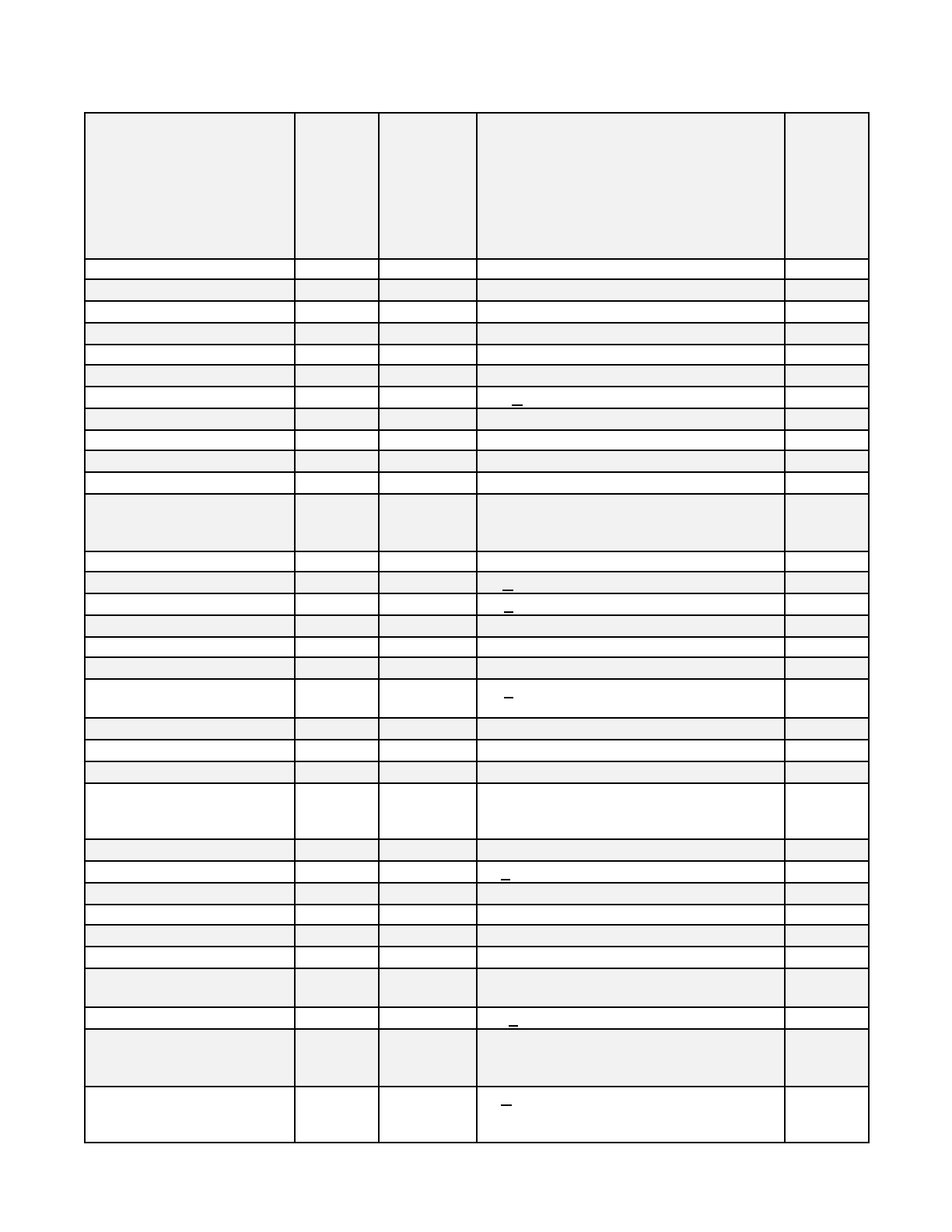
41
*mole
mol
SI unit of amount of substance. The mole is the
amount of substance of a system that contains
as many elementary entities as there are atoms
in 0.012 kg of carbon 12. When the mole is
used, the elementary entities shall be specified
and may be atoms, molecules, ions, electrons,
other particles, or specified groups of such
particles.
month
mo
*nano
n
SI prefix for 10
-9
.
*nanoampere
nA
*nanofarad
nF
*nanometer
nm
*nanosecond
ns
nautical mile
nmi
nmi Δ 1852 m.
*neper
Np
*newton
N
SI unit of force.
*newton meter
N · m
*newton per square meter
N/m
2
SI unit of pressure or stress. See pascal.
oersted
Oe
oe
The oersted is the electromagnetic CGS unit of
magnetic field strength. Deprecated (see
ANSI/IEEE Std 268-1992).
*ohm
Ω
SI unit of resistance.
ounce (avoirdupois)
oz
oz Δ 1/16 lb = 28.350 g.
*pascal
Pa
Pa Δ N/m
2
. SI unit of pressure or stress.
*pascal second
Pa · s
SI unit of dynamic viscosity.
pebi
Pi
Prefix for 2
50
.
*peta
P
SI prefix for 10
15
.
phot
ph
ph Δ lm/cm
2
. CGS unit of illuminance.
Deprecated (see ANSI/IEEE Std 268-1992).
*pico
p
SI prefix for 10
-12
.
*picofarad
pF
*picowatt
pW
pint
pt
pt (U.K.) = 0.568 26 L.
pt (U.S. dry) = 0.550 6 L.
pt (U.S. liquid) = 0.473 18 L.
poise
P
Deprecated (see ANSI/IEEE Std 268-1992).
pound (avoirdupois)
lb
lb Δ 0.453 592 37 kg.
pound per cubic foot
lb/ft
3
pound-force
lbf
lbf = 4.4482 N.
pound-force foot
lbf · ft
pound-force per square foot
lbf/ft
2
pound-force per square inch
lbf/in
2
psi
Although use of the abbreviation psi is
common, it should not be used as a symbol.
poundal
pdl
pdl Δ lb · ft/s
2
= 0.1383 N
quart
qt
qt (U.K.) = 1.1365 L.
qt (U.S. dry) = 1.1012 L.
qt (U.S. liquid) = 0.946 35 L.
rad
rd
rd Δ 0.01 Gy. A unit of absorbed dose in the
field of radiation dosimetry. Use of the SI unit,
the gray, is preferred.
IEEE EDITORIAL STYLE MANUAL FOR AUTHORS
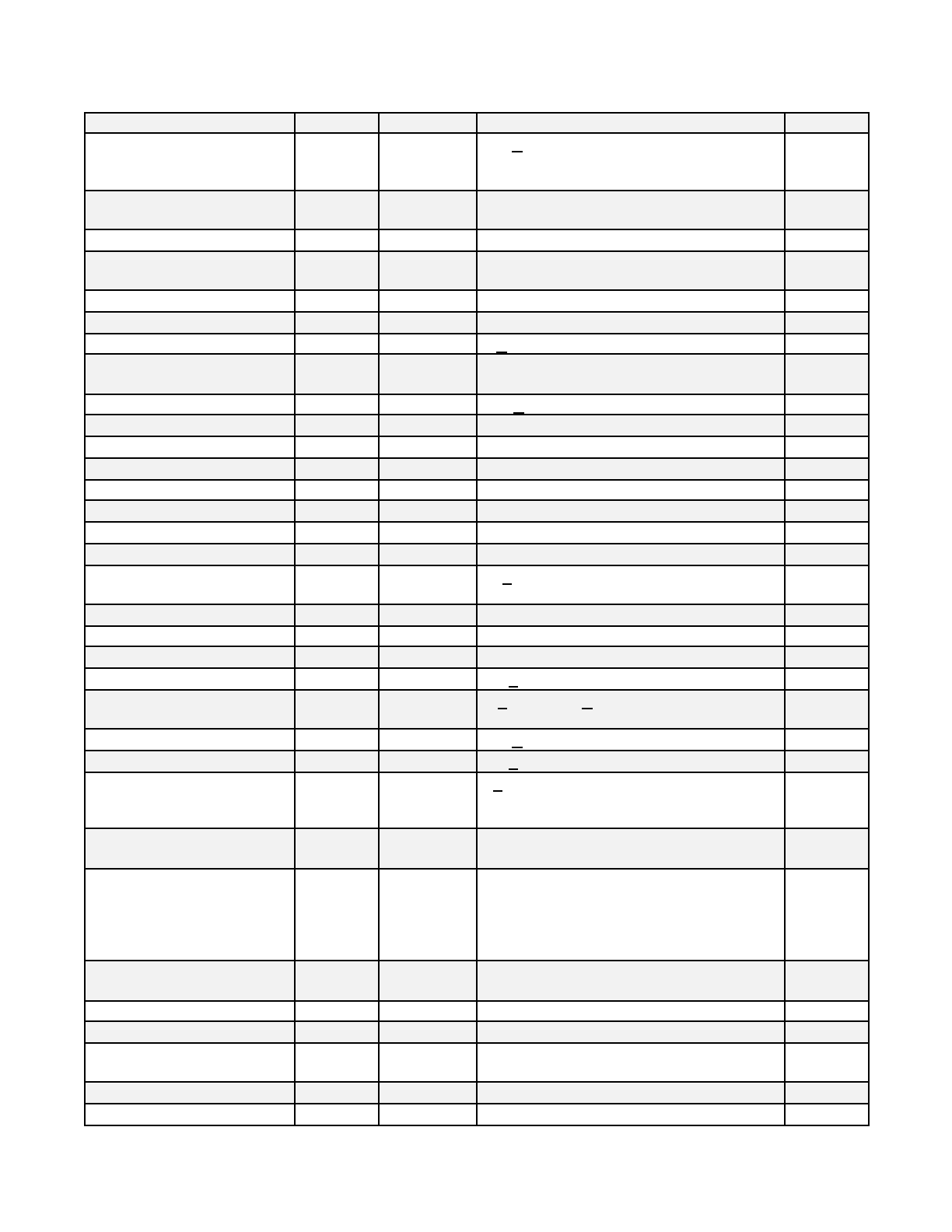
42
*radian
rad
SI unit of plane angle.
rem
rem
rem Δ 0.01 Sv. A unit of dose equivalent in the
field of radiation dosimetry. Use of the SI unit,
the sievert, is preferred. 1 rem = 0.01 Sv.
revolution per minute
r/min
Although use of rpm as an abbreviation is
common, it should not be used as a symbol.
revolution per second
r/s
roentgen
R
A unit of exposure in the field of radiation
dosimetry.
*second (plane angle)
''
1'' = 4.848 · 10
-6
rad.
*second (time)
s
SI unit of time.
*siemens
S
S Δ Ω
-1
. SI unit of conductance.
*sievert
Sv
SI unit of dose equivalent in the field of
radiation dosimetry.
slug
slug
slug Δ lbf · s
2
/ft = 14.594 kg.
square foot
ft
2
square inch
in
2
*square meter
m
2
*square meter per second
m
2
/s
SI unit of kinematic viscosity.
*square millimeter per second
mm
2
/s
SI unit-multiple of kinematic viscosity.
square yard
yd
2
*steradian
sr
SI unit of solid angle.
stilb
sb
sb Δ cd/cm
2
. A CGS unit of luminance.
Deprecated (see ANSI/IEEE Std 268-1992).
stokes
St
Deprecated (see ANSI/IEEE Std 268-1992).
tebi
Ti
Prefix for 2
40
.
*tera
T
SI prefix for 10
12
.
terabyte
TB
TB Δ 10
12
B.
*tesla
T
T Δ N/(A · m)
2
Δ Wb/m
2
. SI unit of magnetic
flux density (magnetic induction).
therm
thm
thm Δ 100 000 Btu.
ton (short)
ton
ton Δ 2000 lb.
ton, metric
T
t Δ 1000 kg. Use of the tonne for this unit is
deprecated in the U.S. (see ANSI/IEEE Std
268-1992).
torr
torr
A unit of pressure equal to 0.001316
atmosphere; named after Torricelli.
*(unified) atomic mass unit
u
The (unified) atomic mass unit is defined as
one-twelfth of the mass of an atom of the
carbon- 12 nuclide. Use of the old atomic mass
unit (amu), defined by reference to oxygen, is
deprecated.
*var
var
IEC name and symbol for SI unit of reactive
power.
*volt
V
SI unit of voltage.
*volt per meter
V/m
SI unit of electric field strength.
*voltampere
VA
va
IEC name and symbol for SI unit of apparent
power.
*watt
W
SI unit of power.
*watt per meter kelvin
W/(m · K)
SI unit of thermal conductivity.
IEEE EDITORIAL STYLE MANUAL

43
*watt per steradian
W/sr
SI unit of radiant intensity.
*watt per steradian square
meter
(W/sr · m
2
)
SI unit of radiance.
watthour
Wh
*weber
Wb
Wb Δ V·s. SI unit of magnetic flux.
yard
yd
yd Δ 0.9144 m.
year
a
Also W·h.
yobi
Yi
Prefix for 2
80
.
yocto
y
SI prefix for 10
-24
.
yotta
Y
SI prefix for 10
24
.
zebi
Zi
Prefix for 2
70
.
zepto
z
SI prefix for 10
-21
.
zetta
Z
SI prefix for 10
21
.
D. Miscellaneous Alphabetical Abbreviations, Acronyms, and Symbols
NOTE: Key: fn—function name (roman); s—symbol (italic); u—unit abbreviation (roman);
*—acronyms that must be defined in text.
A
A
(s) Hermitian conjugate of A
Å
(u) angstrom
ab
(prefix) denotes absolute system of (CGS) units. Abampere, abcoulomb, abvolt,
abohm, abfarad, abmho, abhenry (use not recommended, see units list)
abs
absolute
ABS
air-bearing surface
Ac
alternating current
ACB
air circuit breaker*
ACSR
steel-reinforced aluminum cable*
AD
attention display*
A–D, A/D
analog-to-digital
ADF
automatic direction finder*
a.e.
almost everywhere (in equations)
AEW
airborne early warning*
AF
audio frequency*
AFB
Air Force Base
AFC
automatic frequency control*
AFM
atomic force microscopy
AGC
automatic gain control*
AGFM
alternating gradient force magnetometer
AGM
arithmetical–geometric mean*
A∙h (u)
ampere hour
Ai (fn)
Airy integral
AM
amplitude modulation
IEEE EDITORIAL STYLE MANUAL FOR AUTHORS
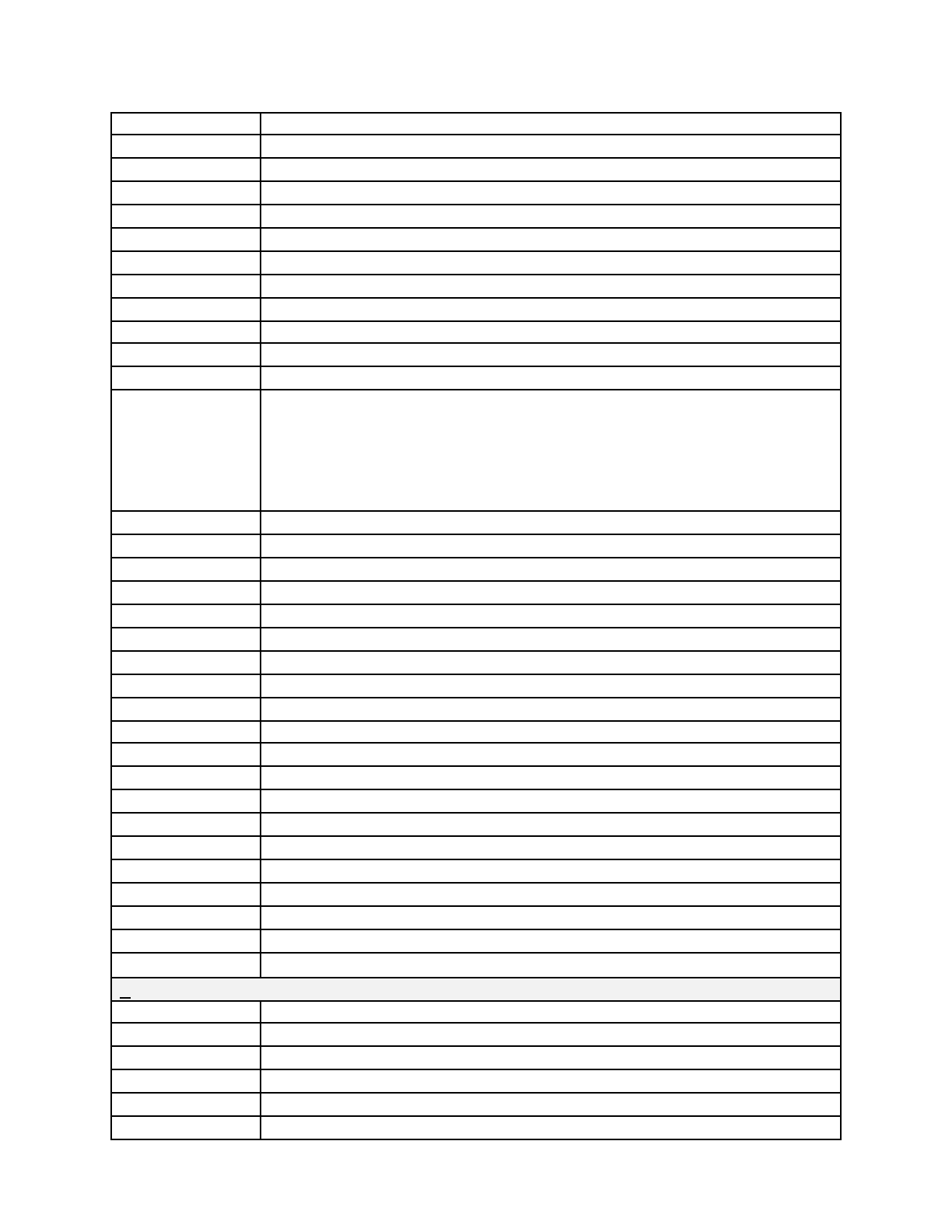
44
A.M.
ante meridiem (morning)
ama
automatic message accounting*
AND
(small caps) logical AND operation
ANI
automatic number identification
ANN
artificial neural network*
antilog (fn)
antilogarithm
AOGM
accelerated optimum gradient method*
AOPT
air-operated press type*
APD
avalanche photodiode
API
air position indicator*
AQL
acceptable quality level
AR
antireflection*; autoregressive*
arcsin
arccos
arctan
arccot
arcsec
arccsc
(fn) inverse trigonometric functions
arg
(fn) argument
ARMA
autoregressive moving average*
a.s.
almost surely (in equations)
ASE
amplified spontaneous emission*
ASIC
application specified integrated circuit*
ASK
amplitude-shift keying
ASW
antisubmarine warfare* (note: for acoustic surface wave use SAW)
at (u)
technical atmosphere: 1 kgf/cm
At (u)
ampere turn (note: no longer in use; change to A)
ATM
asynchronous transfer mode*
atm (u)
atmosphere
ATR
antitransmit receive*
ATT
avalanche transit time*
av
average (subscript)
AVC
automatic volume control*
avg (fn)
average (use av as subscript)
AWE
asymptotic wave evaluation*
AWG
American wire gauge
AWGN
additive white Gaussian noise*
B
bar (u)
bar
barye (u)
barye: microbar (use not recommended; see units list)
bbl (u)
barrel (see units list)
bcc
body-centered cubic (of crystals)
BCD
binary coded decimal
BCH
Bose–Chaudhuri–Hocquenghen (codes)
IEEE EDITORIAL STYLE MANUAL
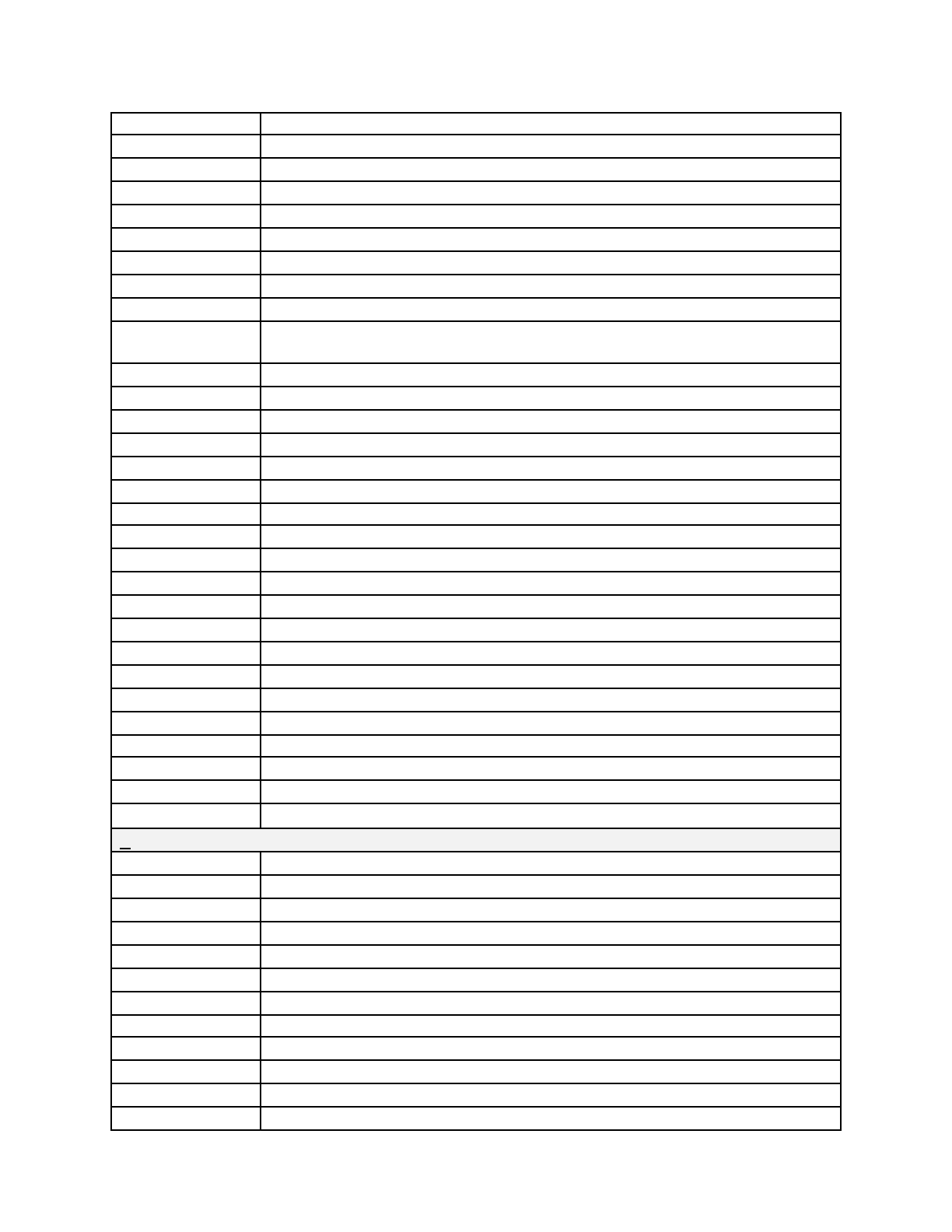
45
BCT
bushing current transformer*
Bd (u)
baud* (see units list)
B–E
base–emitter source
Be
Baume
bei, ber (fn)
Kelvin forms of Bessel function
BEM
boundary-element method
BER
bit error rate*
BeV, bev (u)
use GeV
BFO
beat-frequency oscillator*
B–H B–H curve:
curve of magnetic induction (magnetic flux–density) versus magnetic intensity
(field intensity) B–H relationship. B–H loop: hysteresis loop
Bhp
brake horsepower*
Bi (fn)
Airy integral: (u) bit: = 10 A*
BIL
basic impulse insulation level*
BJT
bipolar junction transistor*
BMEP
brake mean effective pressure*
bpi (u)
bit per inch: use b/in
bps (u)
bit per second: use b/s
BPSK
binary phase-shift keying
BRA
biased rectifier amplifier*
BS
breaking strength*
BS
British Standards*
B&S
Brown and Sharpe gauge*
BSF
bulk shielding facility*
BSL
basic switching surge insulation level*
BTU
(u) British thermal unit
BWG
Birmingham wire gauge*
BWK
Brillouin–Wentzel–Kramers (method)*
BWO
backward-wave oscillator*
BWR
boiling water reactor*
C
C (u)
coulomb
°C (o)
degree Celsius
c (u)
cycle: use Hz; centi- (prefix to unit abbreviation)
c (s)
speed of light in a vacuum
cal (u)
calorie (use not recommended; see units list)
CATV
community antenna television system
cc (u)
cubic centimeter: use cm
3
c.c.
complex conjugate (in equations)
CCB
coin collecting box (British telephones)*
CCD
charge-coupled device*
CCR
closed-cycle refrigerator*
cd (u)
candela
IEEE EDITORIAL STYLE MANUAL FOR AUTHORS
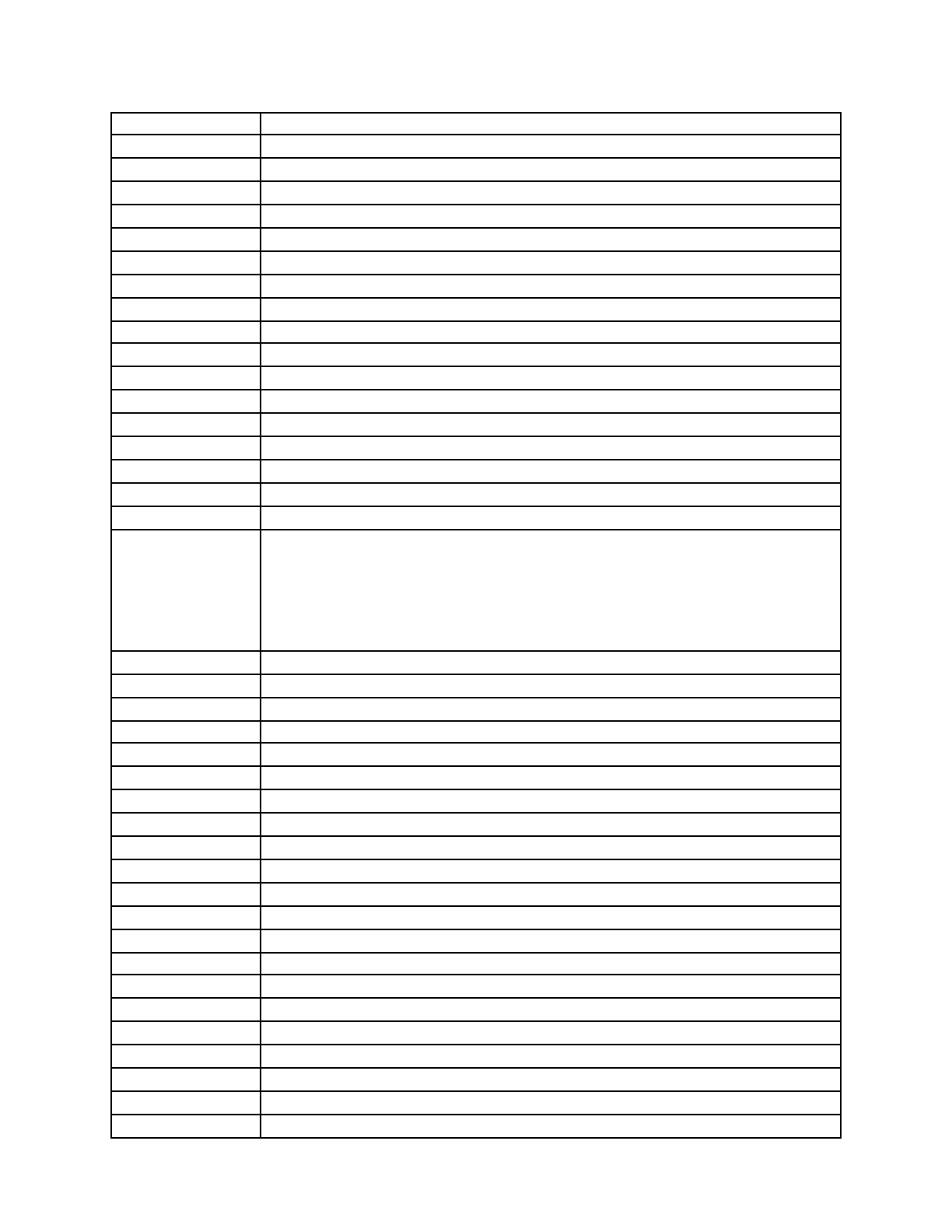
46
cdf
cumulative distribution function*
CDMA
code division multiple access*
CDO
community dial offices*
CD-ROM
compact disk read-only memory
cdrx
external critical damping resistance: use caps*
CEMF
counterelectromotive force*
cf.
compare
cfm (u)
cubic feet per minute: use ft
3
/min
cfs (u)
cubic feet per second: use ft
3
/s
CGS
centimeter-gram-second (system of units)
Ci (fn)
cosine integral; (u) curie
CIM
computer integrated manufacturing*
CIR
carrier-to-interference ratio*
ckVA
capacitive kilovoltamperes (write out)
cmil (u)
circular mil
CMOS
complementary metal–oxide–semiconductor
CNN
cellular neural network
COP
coefficient of performance*
cos
cosec
cosh
cot
coth
covers
(fn) cosine
(fn) cosecant: use csc
(fn) hyperbolic cosine
(fn) cotangent
(fn) hyperbolic cotangent
(fn) coversine
cP (o)
centipoise (see units list)
CPFSK
continuous phase frequency-shift keying*
CPM
continuous phase modulation*
CPSK
continuous phase-shift keying; coherent phase-shift keying*
CPU
central processing unit
CRO
cathode-ray oscilloscope
CRS
cold-rolled steel*
CRT
cathode-ray tube
c/s (u)
cycle per second: use Hz
csc (fn)
cosecant
csch (fn)
hyperbolic cosecant cs (u) centistokes: use cSt or write out (see units list)
CSP
completely self-protected
cSt (u)
centistokes (see units list)
CSV
corona-starting voltage
CT
current transformer*
CTC
centralized traffic control
ctn (fn)
cotangent: use cot
curl (fn)
curl
CV
capacitance–voltage
CVD
chemical vapor deposited
CW
continuous wave*
IEEE EDITORIAL STYLE MANUAL
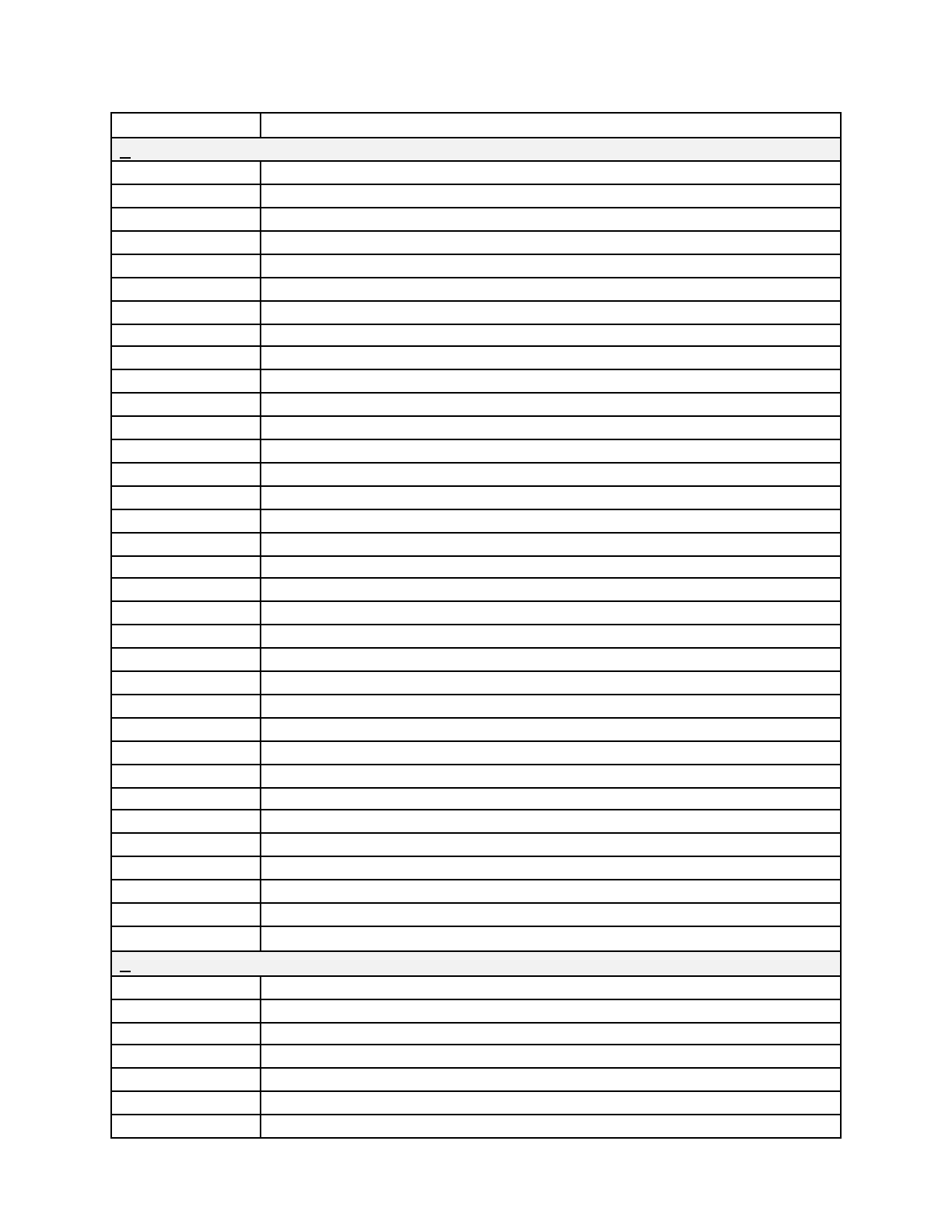
47
D
DA
design automation
dB (u)
decibel
dc
direct current (DC at start of sentence or in article title)
DC
directional coupler
DDA
digital differential analyzer*
DDD
direct distance dialing*
DE
disruptive effect*
det (fn)
determinant
DF
direction finder*; deuterium fluoride; degree of freedom*
DFB
distributed feedback
DFT
discrete Fourier transform*
diag
(diagonal)
diam
diameter
DIC
Diploma of membership in Imperial College of Science and Technology
div (fn)
divergence; division (u) in charts
DMA
direct memory access*
DME
distance-measuring equipment*
DOD
diameter over dielectric; Department of Defense
DOF
degree of freedom (unit)
DP
dial pulse*
DPCM
differential pulse code modulation*
DPDT
double-pole double-throw switch*
DPH
diamond pool hardness*
DPQSK
differential quadrature phase-shift keying*
DPSK
differential phase-shift keying*
DRCPR
differential reactive current protective relay*
DRO
destructive readout*; doubly resonant oscillator
DS
dielectric strength*; direct sequence*
DSB
double sideband*
DSP
digital signal processor
DVP
differential vapor pressure*
DWT
discrete wavelet transform*
dyn (u)
dyne
E
EB
emergency bank*
EC
eddy current; electrical conductivity* (grade of Al)
ECG
electrocardiogram
ECL
emitter-coupled logic*
ECM
electronic countermeasures
ECT
eddy current testing
ED
enforced draft
IEEE EDITORIAL STYLE MANUAL FOR AUTHORS
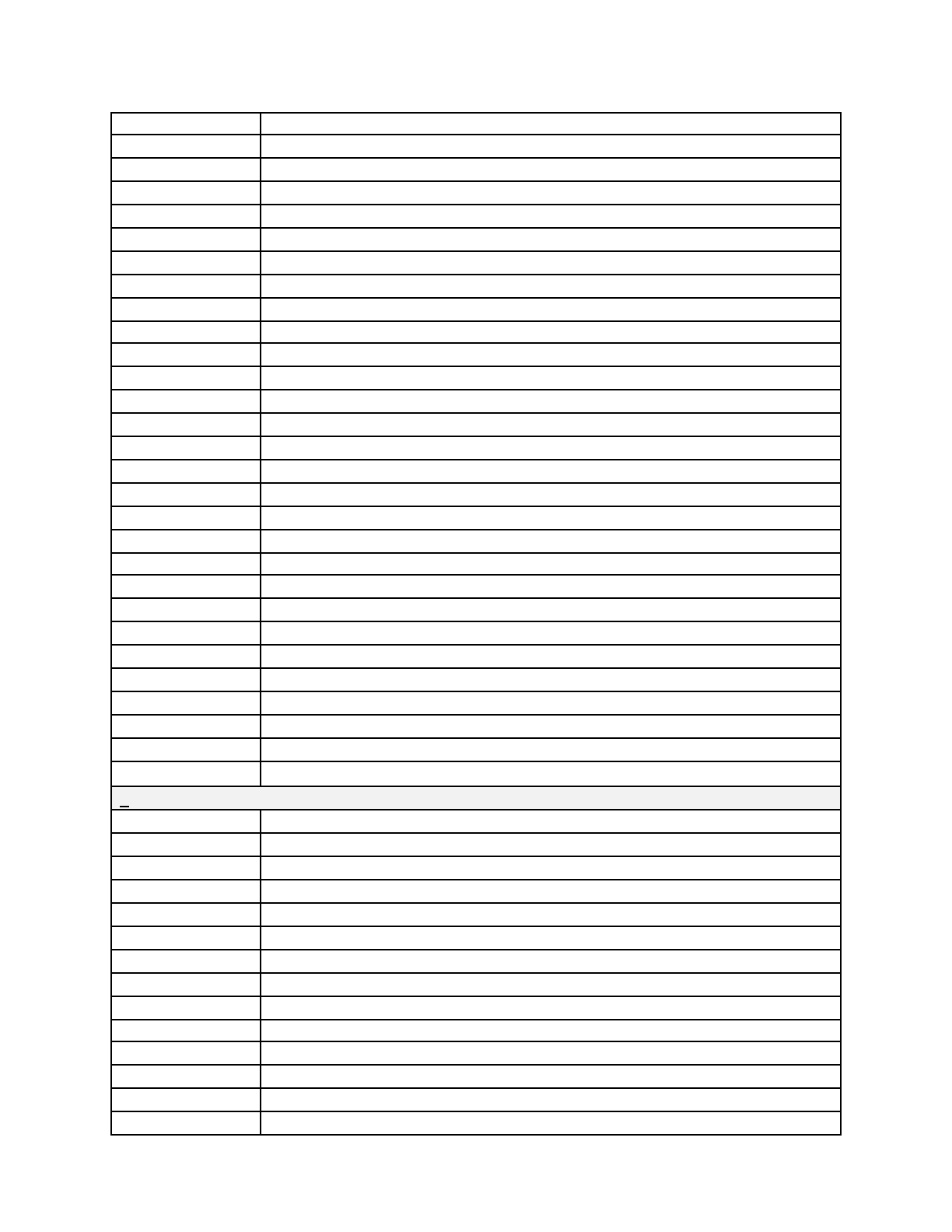
48
EDFA
erbium-doped fiber amplifiers*
EDP
electronic data processing
EDS
energy dispersive spectrometer
EDX
energy dispersive X-ray
EEG
electroencephalogram
EHD
electrohydrodynamic*
EHF
extremely high frequency*
EHIPS
extra heavy iron pipe size*
EHV
extra high voltage
Ei (fn)
exponential integral
ELF
extremely low frequency*
EM
electromagnetic*
EMC
electromagnetic compatibility*
EMF
electromotive force*
EMI
electromagnetic interference*
ems
expected value of mean square*
EMU
electromagnetic units
EOF
end of file
erf (fn)
error function
erfc (fn)
complementary error function
erg (u)
erg
ERP
effective radiated power*
ESS
electrical sheet steel*
ESU
electrostatic units
eV (u)
electronvolt
EXOR
EXCLUSIVE-OR circuit (small caps)
exp (fn)
exponential function
exsec (fn)
exsecant
F
f (f-stop, f/22)
ratio of focal length to aperture
F (u)
farad
°F (u)
degree Fahrenheit
FA
forced-air-cooled transformer*
fcc
face-centered cubic (of crystals)
FCC
Federal Communications Commission
FD
flux density*
FDA
finite difference approximations*
FDM
frequency-division multiplexing*
FDMA
frequency-division multiple access*
FDTD
finite-difference time domain*
FEA
finite-element analysis
FET
field-effect transistor
ff.
following pages
IEEE EDITORIAL STYLE MANUAL
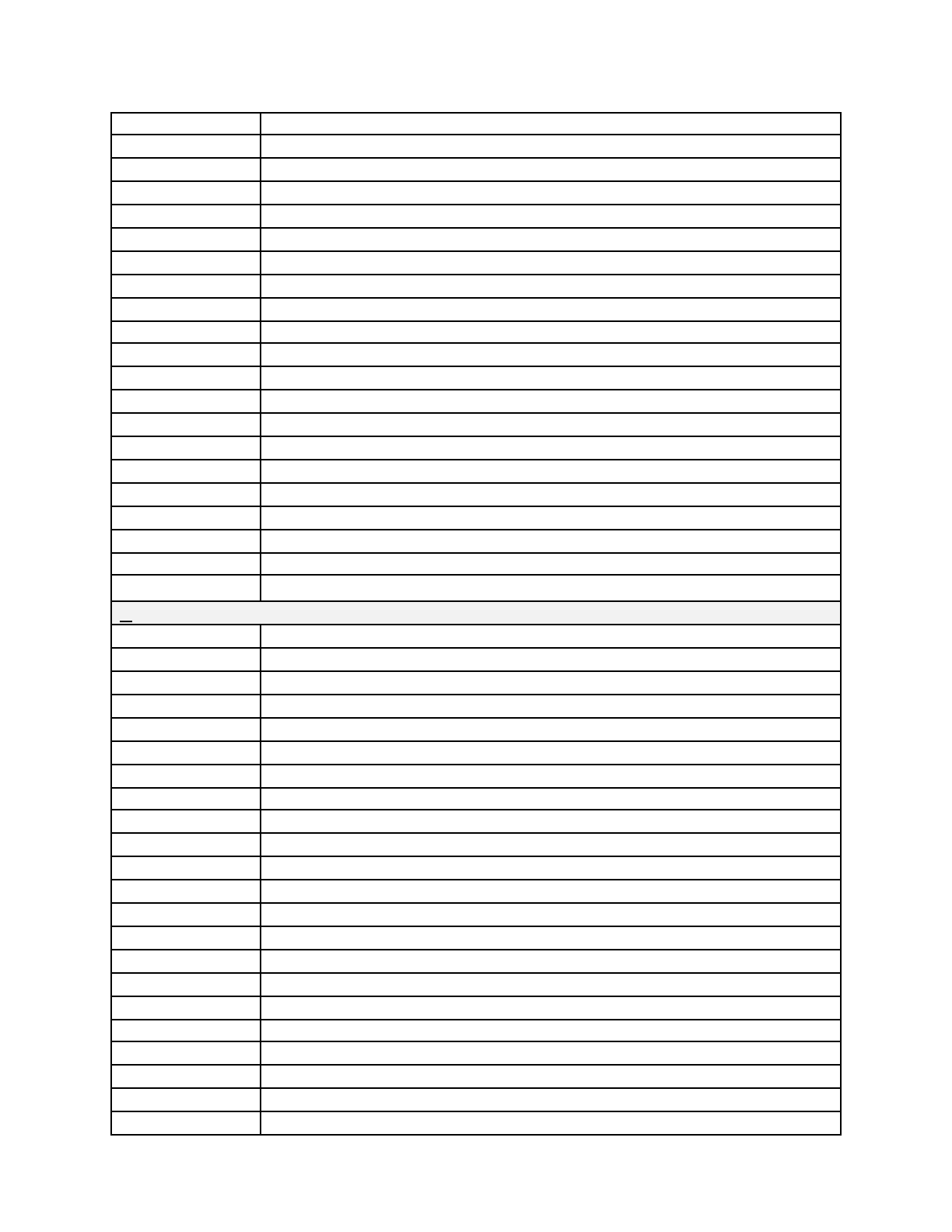
49
FFT
fast Fourier transform*
FIFO
first-in first-out
FIM
field intensity meter*
FIR
finite-impulse response*
fL (u)
footlambert
FL
full load
FM
frequency modulation
FMFB
FM feedback receiver*
FMR
frequency of maximum reliability*; ferromagnetic resonance
FPGA
field-programmable gate array*
fpm, fps (u)
feet per minute: use ft/min; feet per second: use ft/s
FS
full scale
FSK
frequency-shift keying*
FSM
finite-state machine*
ft (u)
foot
FTL
flat tie-line*
FTP
file transfer protocol
FW
full wave
FWHM
full-width at half-maximum*
FWM
four-wave mixing*
G
G
giga- (prefix to unit abbreviations) = 10
9
G (u)
gauss
g
acceleration of gravity, “gee force”; use as unit with metric prefix, as in 3 mg
G (s)
gravitational constant
Gal (u)
gal (gravitational unit)
gal (u)
gallon
Gb (u)
gilbert
GCA
ground-controlled approach*
gcd
greatest common denominator (may be function name)
GenAI
generative artificial intelligence
GLB
greatest lower bound*
GMD
geometric mean distance*
GMEC
generalized minimum effort control*
GMF
geometric mean frequency
GMR
geometric mean radius
GMT
Greenwich mean time
gpd (u)
gallon per day: use gal/day
GPS
Global Positioning System
GPU
graphical processing unit, General Public Utilities*
grad (fn)
gradient
GSE
ground support equipment*
GTD
geometrical theory of diffraction
IEEE EDITORIAL STYLE MANUAL FOR AUTHORS
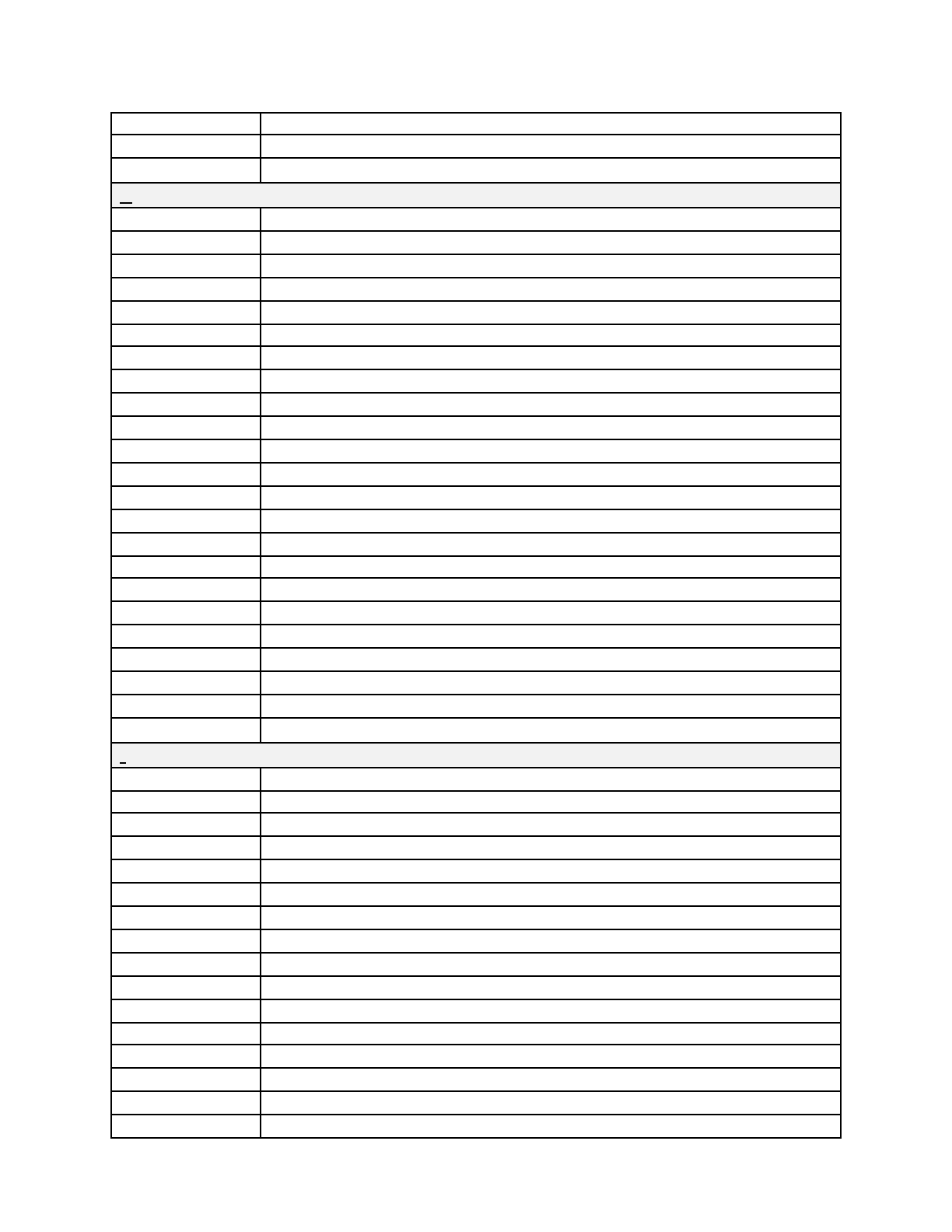
50
GUI
graphical user interface
GW
ground wire
H
h (s)
Planck’s constant
H (u)
henry
H (s)
magnetic intensity; magnetic field strength
hav, havers (fn)
haversine
HBT
heterojunction bipolar transistor
hcp
hexagonal close-packed (of crystals)
HD
hard-drawn*
HDBC
hard-drawn bare copper*
HDC
hard-drawn copper*
HDD
hard disk drive
HDT
hard-drawn tubing*
HEMT
high-electron mobility transistor
HF
high frequency; hydrogen fluoride
HFET
heterojunction FET
HG
mercury
hipot
high potential (write out)
hp (u)
horsepower
HTC
high-tension cable*
HTML
hypertext markup language
HV
high voltage
HVdc
high voltage direct current
Hz (u)
hertz
I
I (s) current (fn)
imaginary part of: use Im
IACS
International Annealed Copper Standard*
IC
impedance compensation*; integrated circuit
ICW
interrupted continuous wave*
ID
inside diameter; induced draft*; interdigital*
IDP
integrated data processing*
IF
intermediate frequency
iff
if and only if
IFT
interfacial tension*
IGFET
insulated-gate field-effect transistor
i.i.d.
independent identically distributed*
IIR
infinite-impulse response
ILS
instrument landing system*
Im (fn)
imaginary part of
IM
intermediate modulation
IMPATT
impact ionization avalanche transit time (diode)
IEEE EDITORIAL STYLE MANUAL
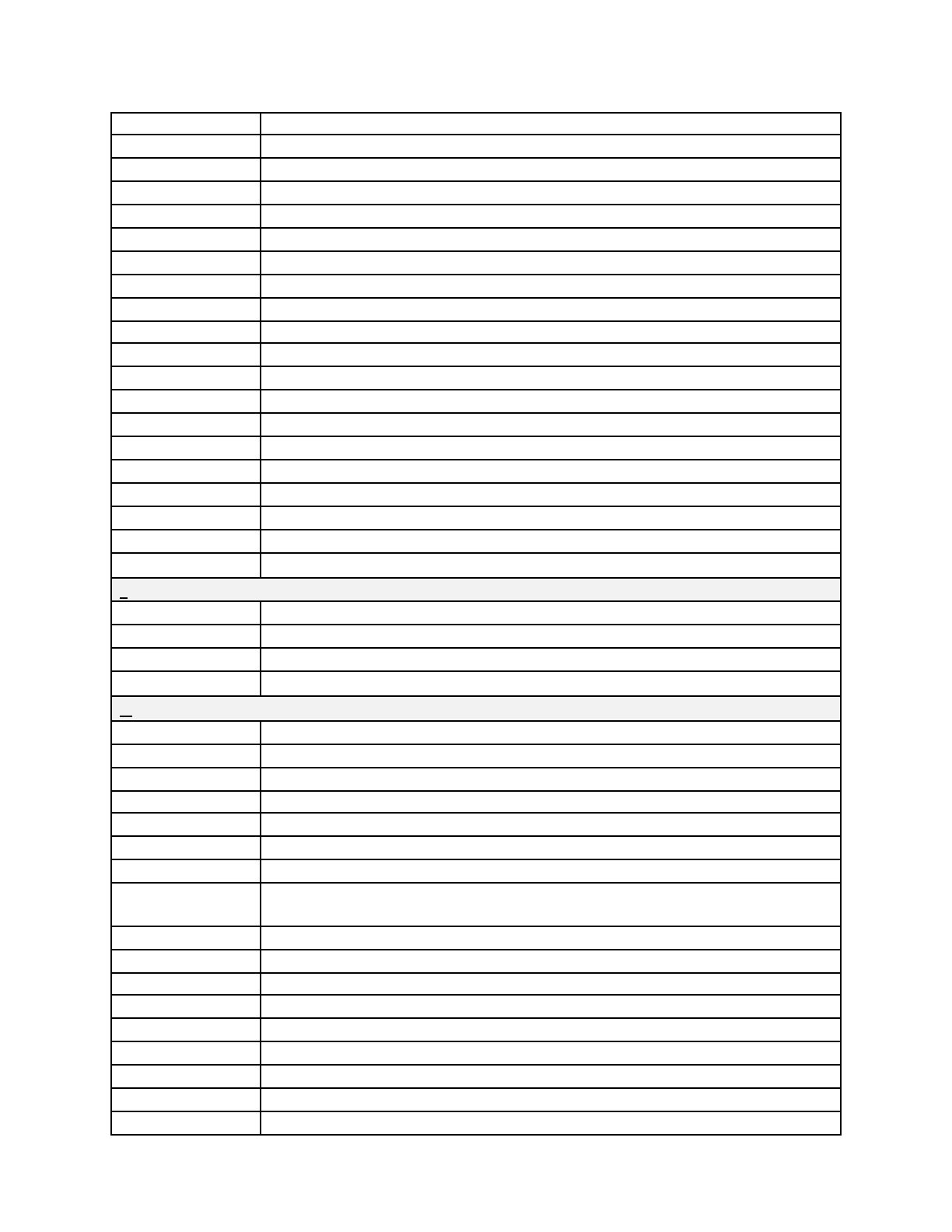
51
INE
irredundant normal equivalent*
inf (fn)
infimum
int (fn)
integer value of
I/O, I–O
input–output
IoT
Internet of Things*
IP
Internet Protocol
ips (u)
inch per second: use in/s
IPS
iron pipe size; international pipe standard*
IR
infrared
IR
current–resistance
ISB
independent sideband*
ISE
integral of squared error*
ISI
intersymbol interference
itae
integral of time-multiplied absolute value of error
ITI
inter-track interference
I–V (s)
current–voltage (characteristic or curve)
IVA
induced voltamperes
IX
current–reactance (drop)
IZ
current–impedance
J
J (u)
joule
JFET
junction field-effect transistor
JPEG
Joint Photographers Expert Group
K
k
kilo (prefix to unit abbreviations) = 10
3
K (u)
Kelvin
Kayser (u)
= cm
-1
(wavenumber)
kbps (u)
kilobits per second: use kb/s
KCL
Kirchhoff’s current law
kcm, KCM (u)
thousand circular mils: use kcmil
kg (u)
kilogram
KGO, KGOe,
KGoe, KgOe (u)
use kO·Oe
kgp (u)
kilogrampois (French): use kg
kG.Oe (u)
kilogauss oersted
kip
thousand pounds
kn (u)
knot (nautical mile per hour)
KOH
potassium hydroxide
kp (u)
kilopound (German): use kg
kt (s)
Boltzmann’s constant × time
KVL
Kirchhoff’s voltage law
kVp (u)
kilovolt peak*
IEEE EDITORIAL STYLE MANUAL FOR AUTHORS
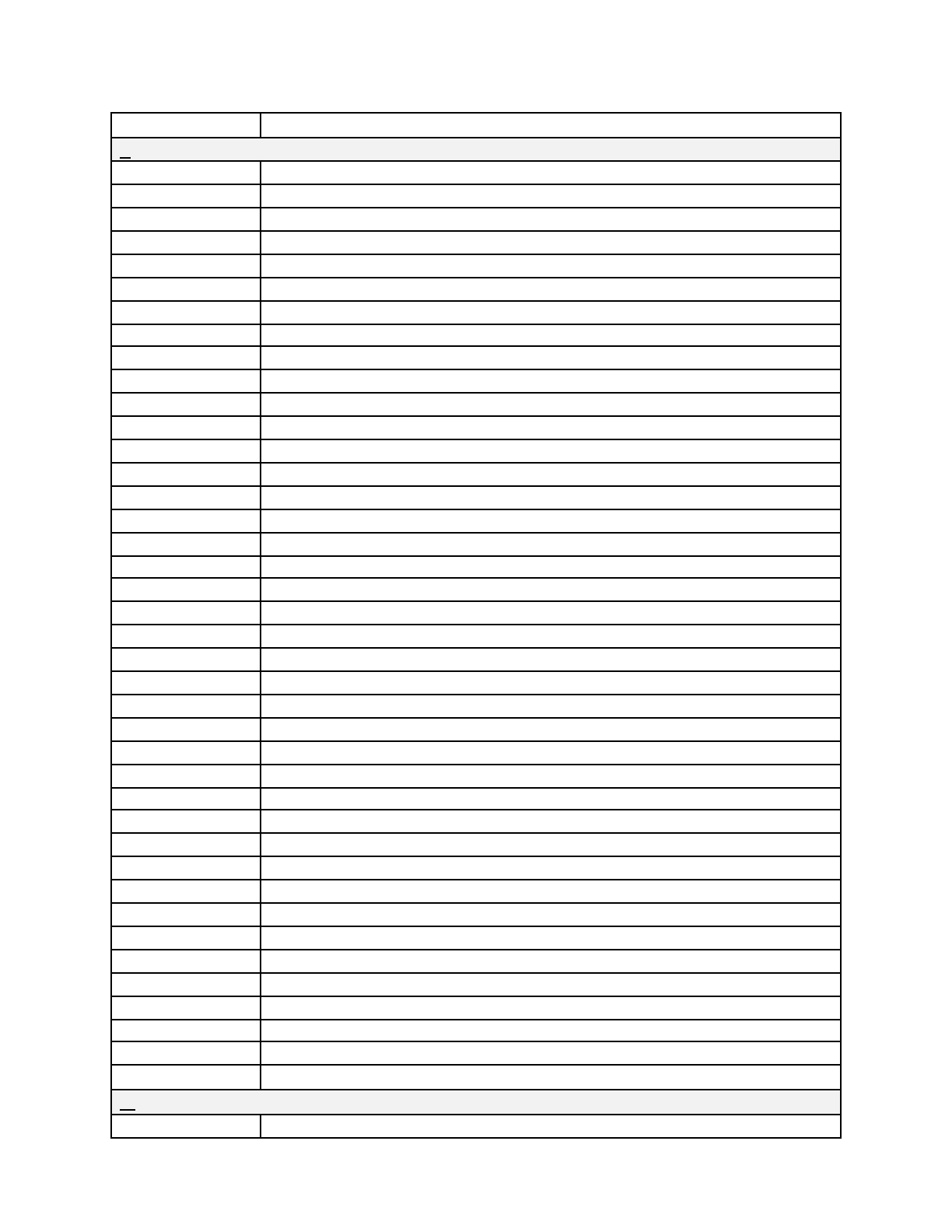
52
L
l (u)
liter
L (u)
lambert
LAN
local area network
lb (u)
pound
lbf (u)
pound-force
LC
inductance–capacitance
lcm
least common multiple (may be function name)
LCR
inductance–capacitance–resistance
LCS
load current substation*
LDC
line drop compensator*; load division circulation
LED
light-emitting diode
LF
low-frequency
LHP
left-half plane*
LHS
left-hand side*
Li (fn)
logarithmic integral
lim (fn)
limit
l.i.m. (fn)
limit in the mean
L–L
line to line*
lm (u)
lumen
LMLT
locus of major loop tips*
LMS
least mean square
LMT
local mean time*
ln (fn)
natural logarithm (base e)
L–N
line to neutral*
LNA
low noise amplifier
LO
local oscillator*
log, log
n
(fn)
logarithm, logarithm base n (where n = 2, 10, etc.)
LP
linear programming*
LPE
liquid phase epitaxy*
LR
inductance–resistance
LRC
load ratio control*
LSB
least significant bit
LSI
large-scale integration*; large-scale integrated*
LST
local standard time
LTC
load tap-changing*
LTE
long-term evolution
LTS
laser-triggered switching*
LUF
lowest usable frequency*
lx (u)
lux
M
m (u)
meter; milli- (prefix to unit abbreviations) = 10
-3
IEEE EDITORIAL STYLE MANUAL
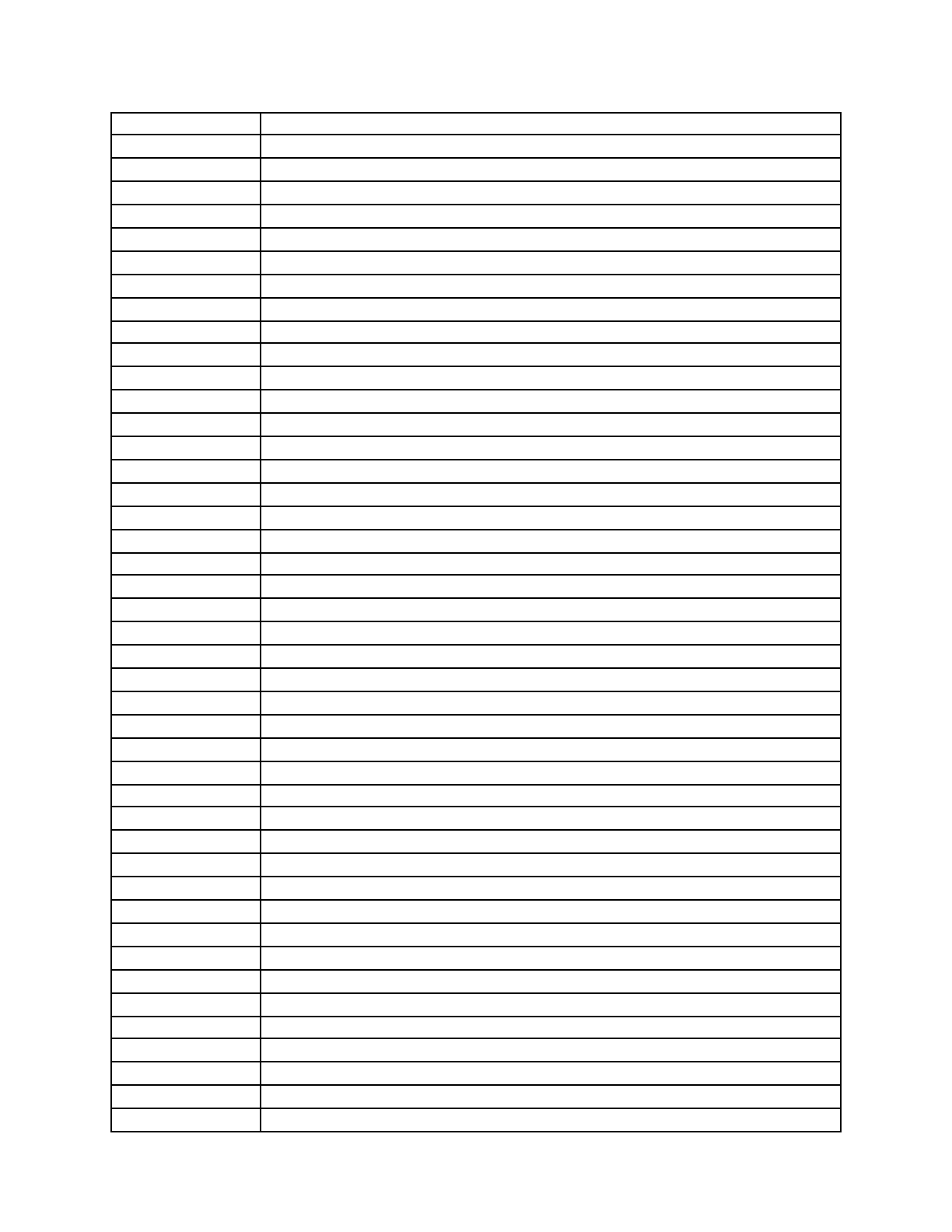
53
M
mega- (prefix to unit abbreviations) = 10
6
; mole
MAG
maximum available gain
MAP
maximum a posteriori
max (fn)
maximum; also used as subscript
MC
Monte Carlo
mcm, MCM (u)
thousand circular mils: use kcmil
mc/mM (u)
millicuries per millimole: use mCi/mM
MCS
multicircuit substation*
MCT
movable core transformer*
MCW
modulated continuous wave*
MDF
manual direction finder*
MDS
minimum detectable signal
MEMS
micro-electromechanical systems
MESFET
metal–semiconductor field-effect transistor
MEW
microwave early warning*
MF
medium frequency*
MFM
magnetic force microscopy
MFSK
minimum frequency-shift keying
MGO (u)
megagauss oersted: use MG·Oe
MG·Oe (u)
megagauss oersted
MHD
magnetohydrodynamics
mho (u)
mho (also Ω^{-1})
mi (u)
mile
MIM
metal–insulator–metal
MIMO
multi-in multi-out*
mio (fn)
minimum; also used as subscript
MIS
metal–insulator–semiconductor*
MKS
meter–kilogram–second (system of units)
ml
milliliter
MLE
maximum-likelihood estimation*
MLSD
maximum-likelihood sequence detector
MLSE
maximum-likelihood sequence estimator*
MMF
magnetomotive force
mmHg (u)
millimeter of mercury
MMIC
monolithic microwave integrated circuit*
mm
2
O (u)
millimeter of water
mmse
minimum mean square error
MOCVD
metal–organic chemical vapor deposition*
mod
modulo
MOKE
magnetooptic Kerr effect
MoM
method of moments*
MOS
metal–oxide–semiconductor
MOSFET
MOS field-effect transistor
MOST
MOS transistor
IEEE EDITORIAL STYLE MANUAL FOR AUTHORS
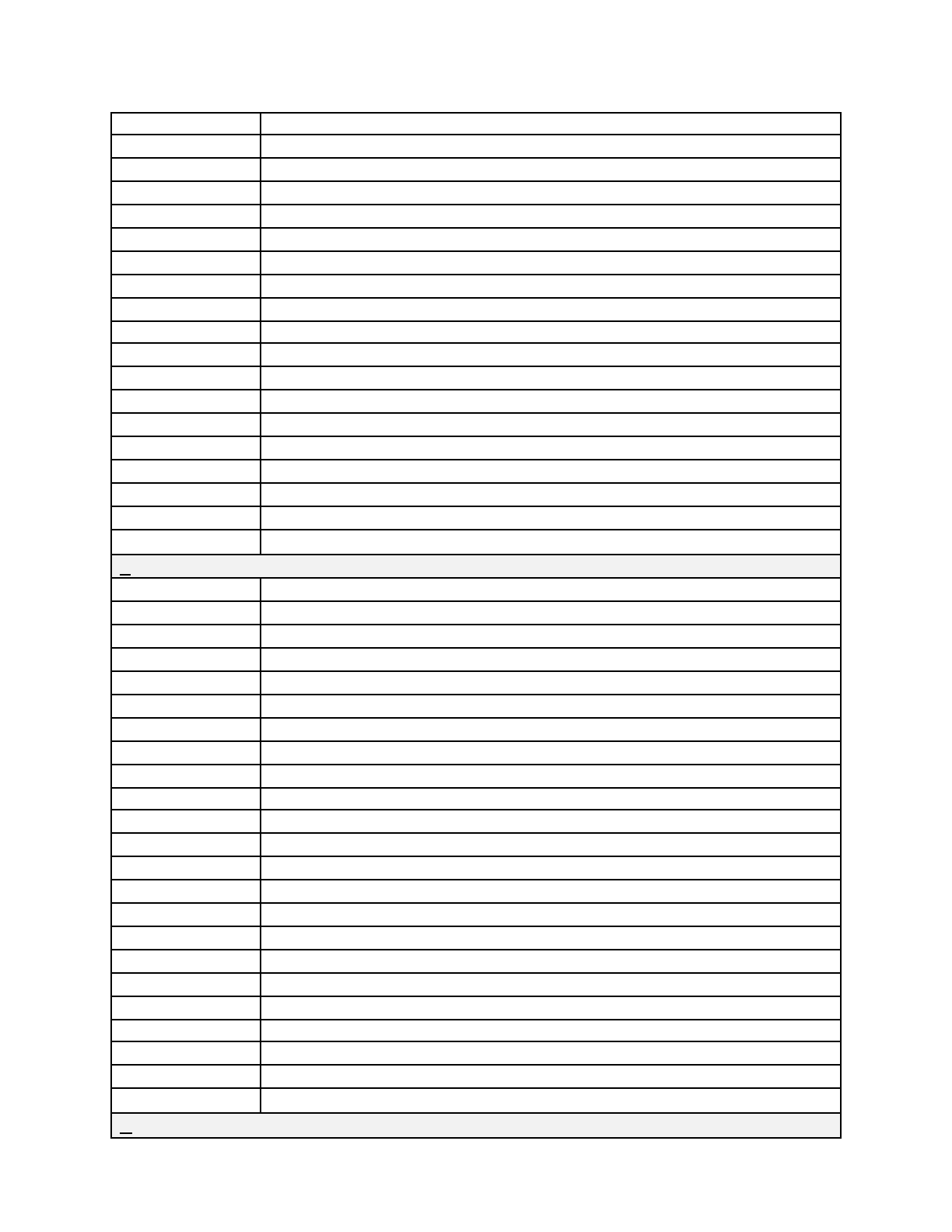
54
MOVPE
metal–organic vapor phase epitaxy*
MPEG
Moving Pictures Expert Group
MPIE
mixed potential integral equation
MRAM
magnetic random access memory
MRI
magnetic resonance imaging
MSB
most significant bit
mse
mean square error
MSIC
medium scale integrated circuits*
MTBE
mean time between explosions
MTBF
mean time between failures*
MTI
multiple target indicator*; moving target indicator
MTJ
magnetic tunnel junction
MTL
multiconductor transmission line
MU
multiple unit*
MUF
maximum usable frequency*
MVQE
minimum variance quantum estimator
Mx (u)
maxwell
MZI
Mach–Zehnder interferometric*
N
n
nano (prefix to unit abbreviations) = 10
-9
N (u)
newton
NA
numerical aperture*
NAND
NOT-AND circuit (small caps)
nat (u)
nat
NC
diode negative-conductance diode*
NDRO
nondestructive readout
NDT
nondestructive testing*
NIC
negative impedance converter*
NIR
near infrared response*
nit (u)
nit
Nkw-hr (u)
net kilowatthour: use net kW·h
NL
no load
nmi (u)
nautical mile
NMR
nuclear magnetic resonance*
NOR
NOT-OR circuit (small caps)
NP
nameplate (rating)
Np (u)
neper
n-p-n
semiconductor forms: Roman, lowercase, hyphens
NRZ
nonreturn to zero*
NTC
negative temperature coefficient*
NWP
network protector
O
IEEE EDITORIAL STYLE MANUAL
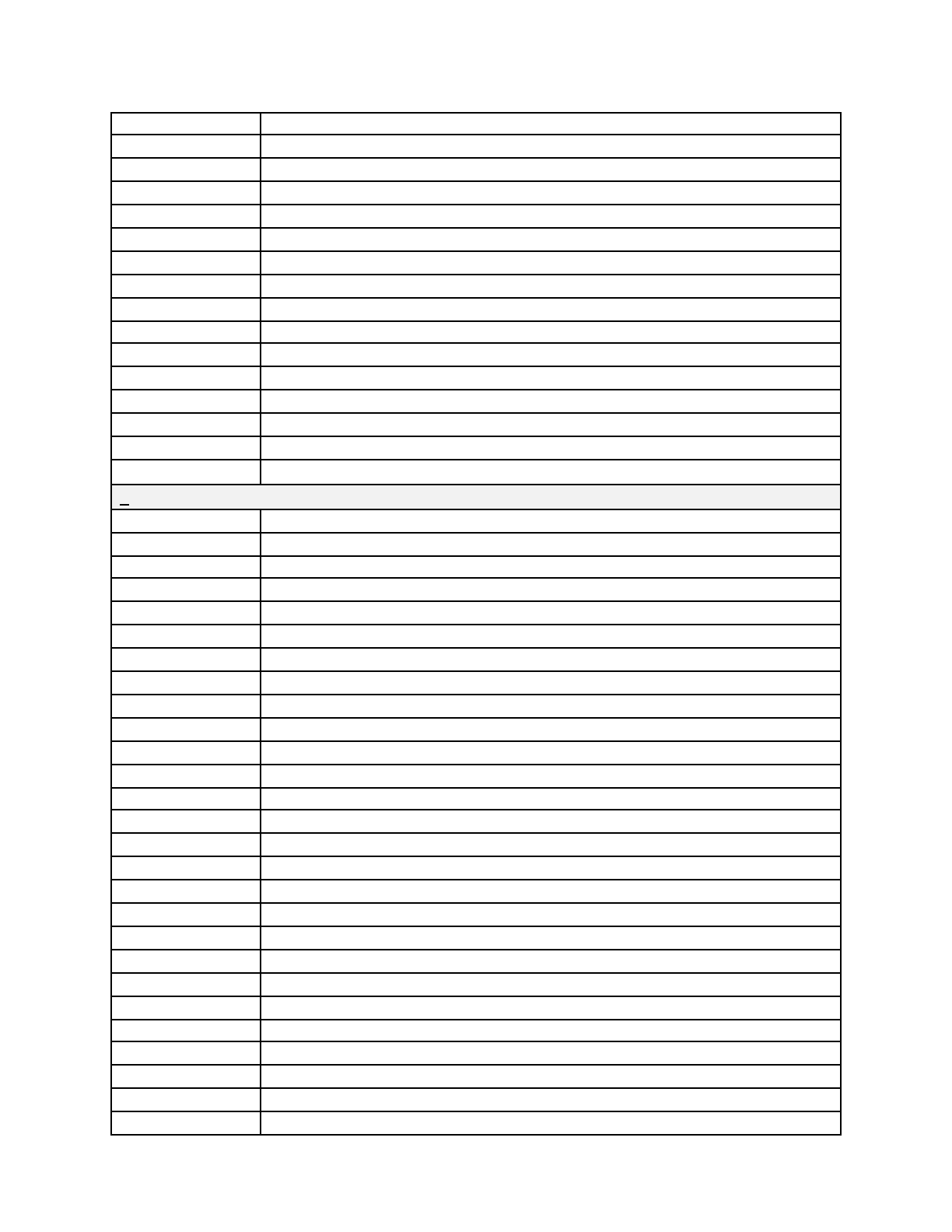
55
OCB
oil circuit breaker*
OCR
oil circuit recloser*
OD
outside diameter
Oe (u)
oersted
OEIC
optoelectronic integrated circuit*
OFDA
optical-fiber frequency-domain analysis*
OGM
optimum gradient method
OOK
on–off keying
OOP
object-oriented programming*
opt (fn)
optimum: also used as subscript
OR
OR circuit (small caps)
OSM
omni spectra miniature
OTDM
optical time-division multiplexing*
O-wave
ordinary-wave (ionogram)
OZ (u)
ounce
P
p
pico- (prefix to unit abbreviations) = 10
-12
P (u)
poise
Pa (u)
pascal
PAE
power-added efficiency
PAM
pulse-amplitude modulation*
PAX
private automatic exchange*
PBX
private branch exchange*
pc (u)
parsec
PC
personal computer
PCM
pulse-code modulation*; pulse-count modulation*
PD
potential difference*
pdf
probability density function*
pdl (u)
poundal (see units list)
PDM
pulse-duration modulation*
P
e
(s)
probability of error
PER
probability of error
PES
position error signal
PF
power factor*
ph (fn)
phase
pH
power of hydrogen (acidity or alkalinity of solution)
PI
polarization index
PID
proportional–integral–differential*
PILC
paper-insulated lead-covered*
PIN
use p-i-n for diodes, etc.
p-i-n
semiconductor forms: Roman, lowercase, hyphens
PL/1
a programming language
PLC
power line carrier*
IEEE EDITORIAL STYLE MANUAL FOR AUTHORS
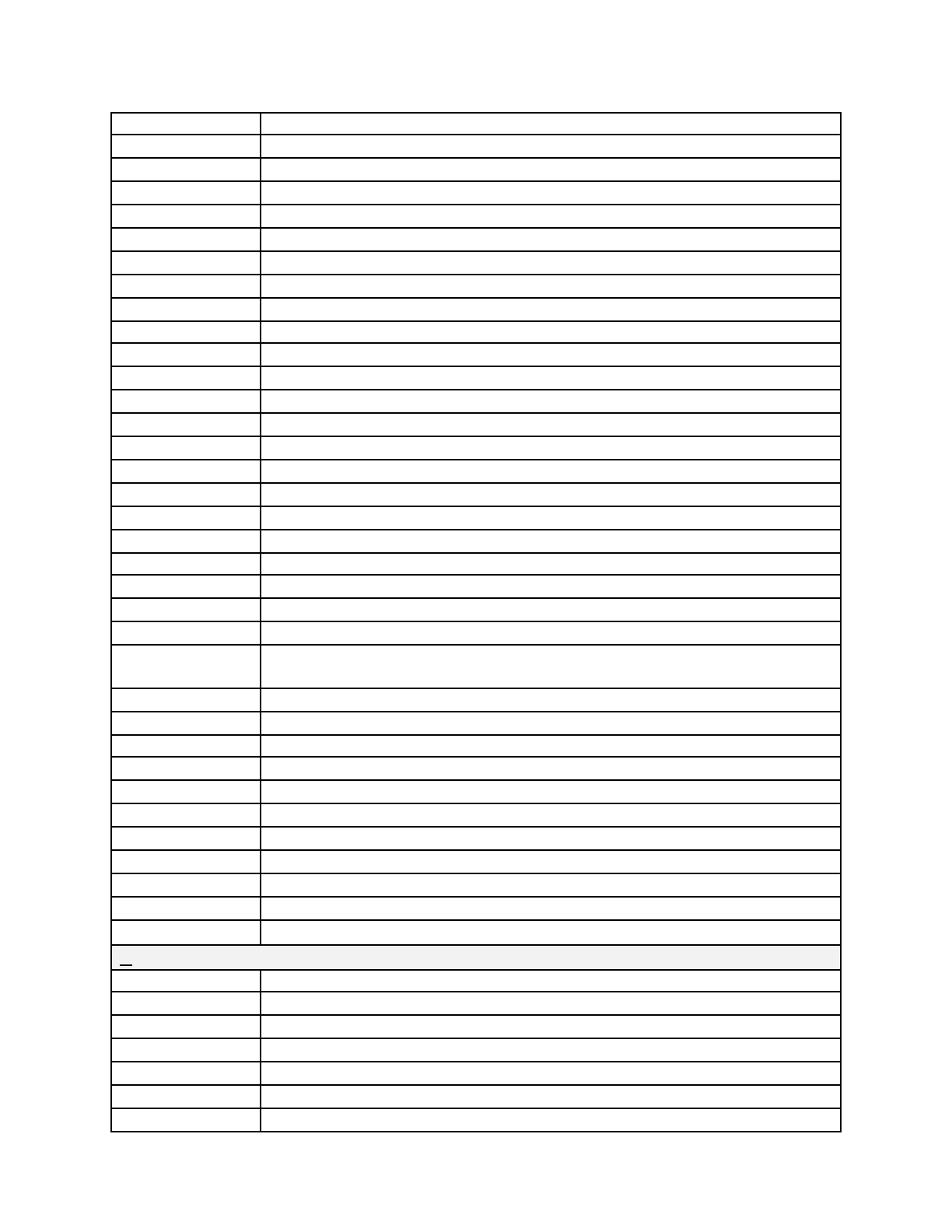
56
PLL
phase-locked loop*
PM
phase modulation*
P.M.
post meridiem (small caps)
PML
perfectly matched layer
PMMA
polymethyl methacrylate*
PMR
perpendicular magnetic recording
p-n-i-p
semiconductor forms: Roman, lowercase, hyphens
p-n-p
semiconductor forms: Roman, lowercase, hyphens
POD
para-operational device*
POW
p
(u)
picowatts psophometrically weighted at a point of zero relative level*
pp, p-p
peak to peak*
PPI
plan-position indicator*
ppm (u)
parts per million; pulse per minute*
PPM
pulse-position modulation*
pps (u)
pulse per second*
Pr (fn)
probability (appears as Pr x | x = U)
PRA
pulse relaxation amplifier
PRF
pulse-repetition frequency*
PRML
partial response maximum likelihood
Prob.,
P
r
x|· use Pr (usually)
PRR
pulse-repetition rate*
PSD
power spectral density
PSF
power separation filter*
psi (u)
pounds per square inch: change to lb/in
2
unless paper also contains psia and/or
psig
psia (u)
pound-force per square inch absolute (stet)
psig (u)
pound-force per square inch gauge (stet)
PSK
phase-shift keying*
PTM
pulse–time modulation
p.u.
per unit
PVC
polyvinyl chloride*
PWL
piecewise linear
PWM
pulse width modulation*
PWR
pressurized water reactor*
PZT
lead zirconate titanate
Q
Q
quality factor; figure of merit
QAM
quadrature-amplitude modulation*
Q.E.D.
quod erat demonstrandum (end of proof) (set flush right)
QoS
quality of service
QP
quasi-peak*
QPSK
quaternary phase-shift keying
QW
quantum well*
IEEE EDITORIAL STYLE MANUAL
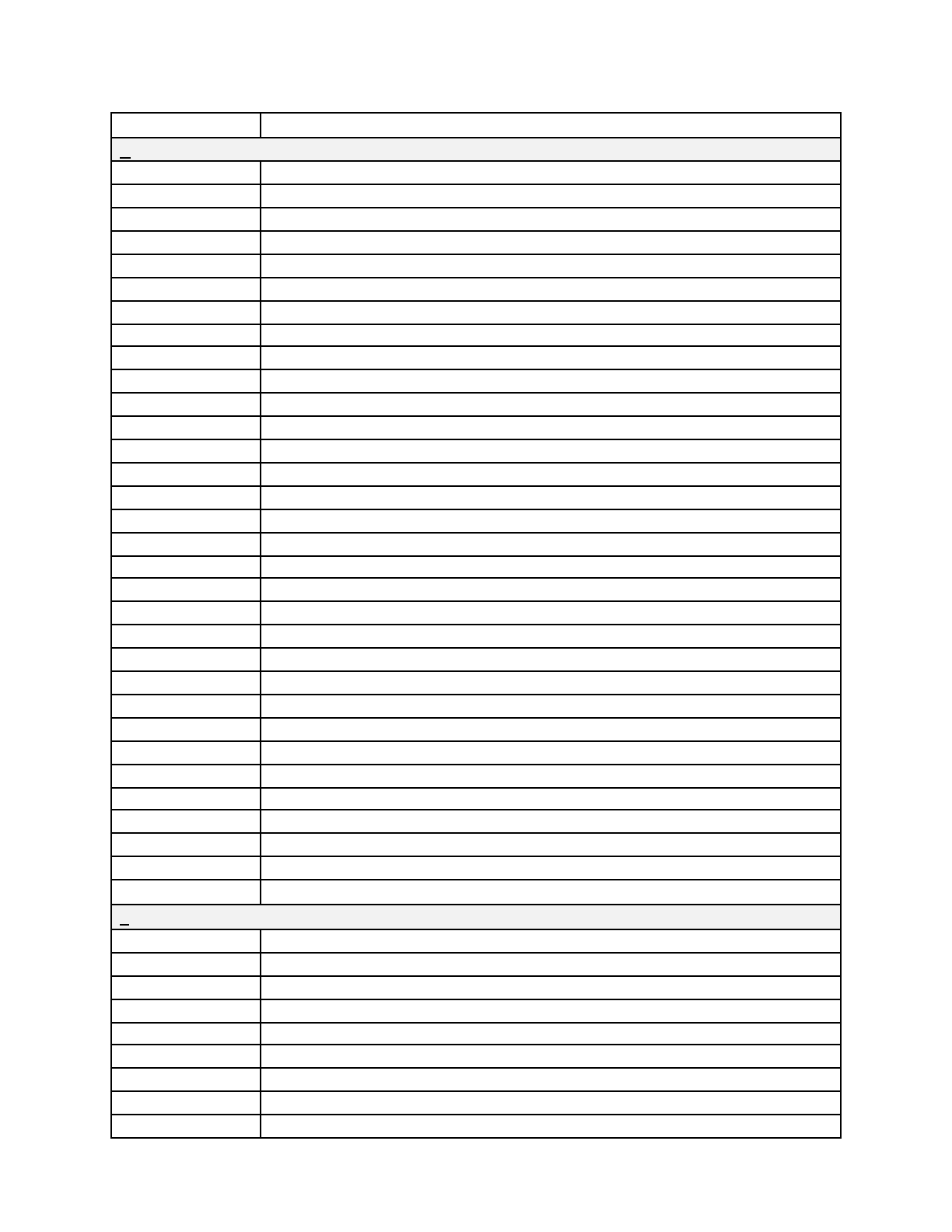
57
R
R (u)
roentgen
R (fn)
real part of: use Re
°R (u)
degrees Rankine
rad (u)
radian
RAM
random access memory
RB
circuit transient blocking relay circuit*
RC
resistance–capacitance
RCF
radar cross section*
R&D
research and development
Re (fn)
real part of: use Re (be sure of this meaning before changing)
redox
reduction–oxidation
rem (u)
Roentgen equivalent, man
RF
radio frequency
RFI
radio frequency interference*
RFU
reclosing fuses*
RH
relative humidity*
RHS
right-hand side*
RI
radio interference*
RIFI
radio interference and field intensity*
RIL
radio interference level*
RIN
relative intensity noise*
RL
resistance–inductance
RMI
radiomagnetic indicator*
rms
root-mean-square (error); root mean square
ROM
read-only memory
rpm (u)
revolution per minute: use r/min
rps (u)
revolution per second: use r/s
RSG
recurrent surge generator*
RTD
resistance temperature detectors
RV
random variable
RX
resistance–reactance
S
s (u)
second
S (u)
siemens
SAR
specific absorption rate
SATT
Strowger Automatic Toll Ticket*
SAW
surface acoustic wave*
SC
switched-capacitor*(adj)
SCA
steel-reinforced aluminum cable*
SCC
signal component control*
scfm
standard cubic feet per minute*
IEEE EDITORIAL STYLE MANUAL FOR AUTHORS
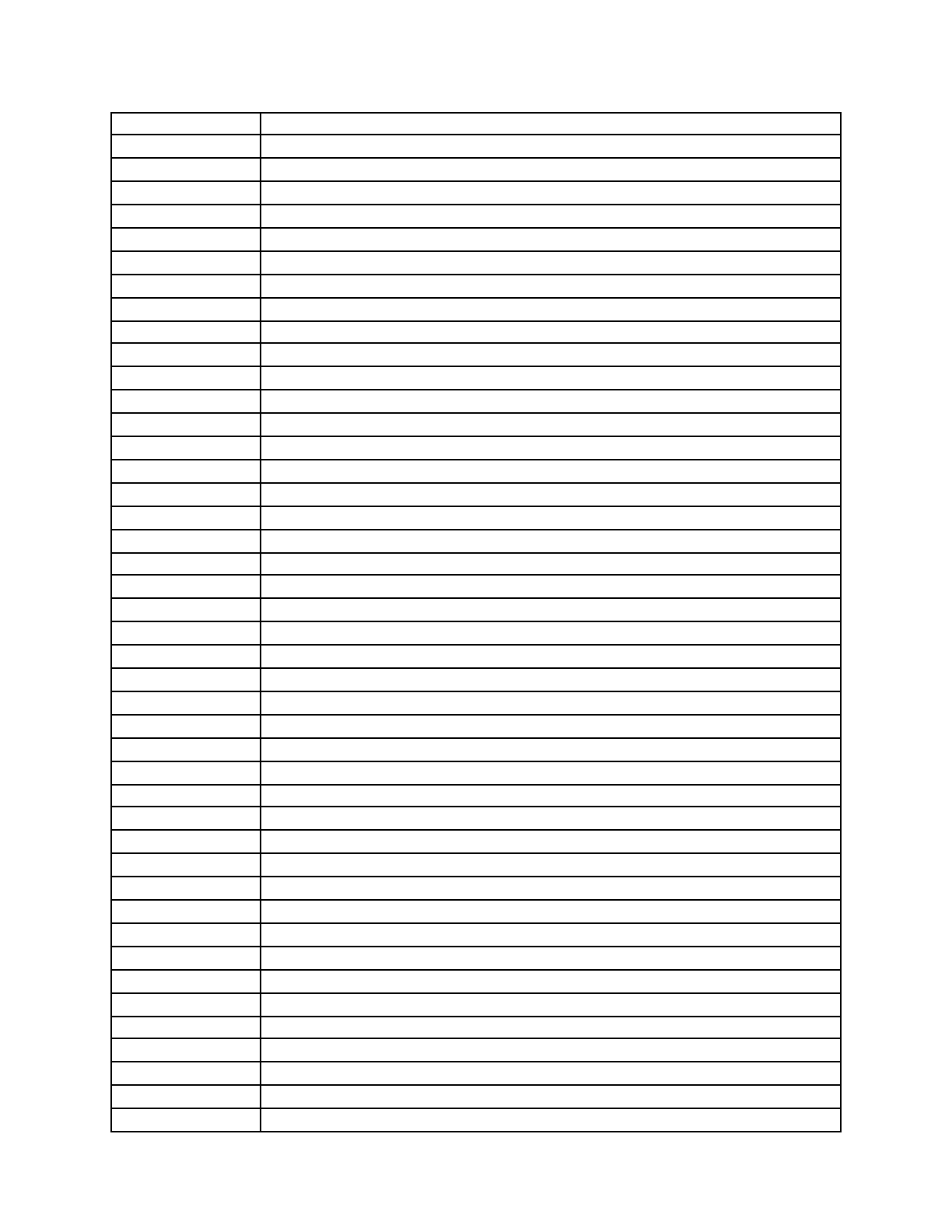
58
SCL
space-charge limited*
scr
short-circuit ratio*
SCR
silicon-controlled rectifier
sec (fn)
secant; (u) second: use s; second of arc*
sech (fn)
hyperbolic secant
SEM
scanning electron microscope
SF
single frequency*
SGML
standard generalized markup language
sgn (fn)
signum function
SHF s
upper high frequency*
SI
severity index*; Systeme International d’Unites (International System of Units)
Si, si (fn)
sine integral
sin (fn)
sine
sinc (fn)
sinc x = (sin x) / x
sinh (fn)
hyperbolic sine
SINR
signal-to-interference-plus-noise ratio*
SIR
signal-to-interference ratio
SISO
single-in, single-out*
SLAR
side looking airborne radar
SLG
single line to ground
SMSA
standard metropolitan statistical area
S/N
signal-to-noise ratio
SNR
signal-to-noise ratio
SoC
system-on-chip*
SPDT
single-pole double-throw (switch)*
SPICE
Simulation Program with Integrated Circuit Emphasis
SPT
single-pole type
sq square:
if on a unit, change to
2
SQUID
superconducting quantum interference device
sr (u)
steradian
SR
saturable reactor*
SS
subsystems*
SSB
single sideband*
s.t.
subject to
St (u)
stokes
sterad (u)
steradian: use sr
SUL
soft underlayer
SUMT
sequential unconstrained minimization techniques
sup (fn)
supremum
sus
Saybolt universal seconds (oil viscosity)*
sw
sine wave*
SW
short wave*
SWG
standard wire gauge*
SWR
standing-wave ratio*
IEEE EDITORIAL STYLE MANUAL
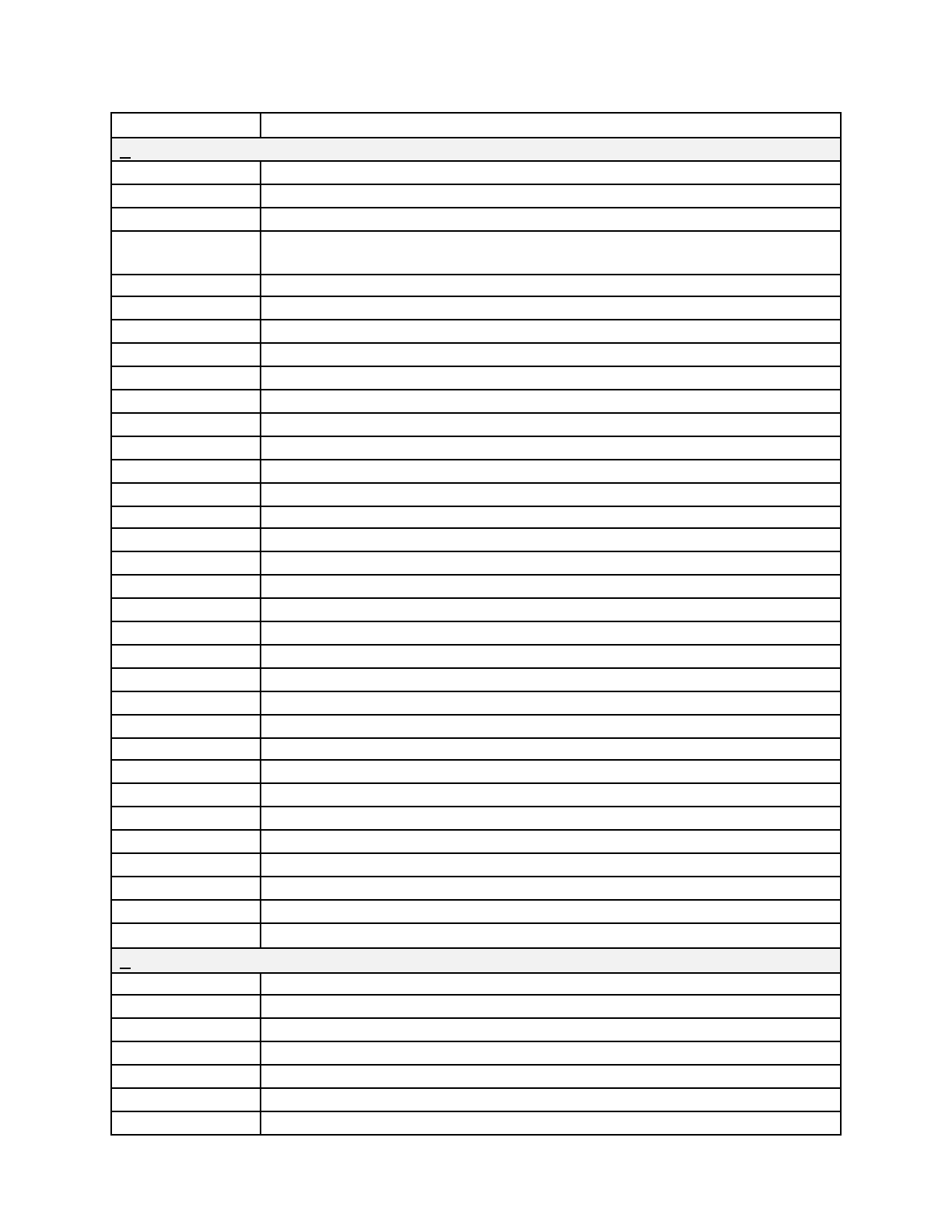
59
T
t (u)
tonne
T (u)
tesla
tan (fn)
tangent
tanh (fn) hyperbolic
tangent
TCUL
tap-changing under load*
TDM
time-division modulation*; time-division multiplexing*
TDMA
time-division multiple access*
TE
transverse electric (appears as TE
0
01
and TE
01
)
TEFC
totally enclosed fan-cooled*
Telex
teleprinter exchange*
TEM
transverse electromagnetic
TFT
thin-film transistor*
tg (fn)
tangent: use tan
th (u)
thermie
TIF
telephone influence factor*
TLM
transmission-line matrix
TM
transverse magnetic
tof
thermal ohms per foot (spell out)
torr (u)
torr
tpc (u)
turns per centimeter: turns/cm
TPC
turns per coil*
tr (fn)
trace
Tr
transpose
TSS
time sharing system
TTL
transistor–transistor logic
TTY
teleprinter
tu
traffic units*
TVI
television interference*
TWA
traveling-wave amplifier*
TWM
traveling-wave maser*
TWP
traveling-wave phototube*
TWT
traveling-wave tube
U
UHF
ultrahigh frequency
ult (fn)
ultimate
UPS
uninterruptible power system*
uniform RC sections (stet overbar)
URL
uniform resource locator
XRD
X-ray diffraction
UT
universal time
IEEE EDITORIAL STYLE MANUAL FOR AUTHORS

60
UTS
ultimate tensile strength
UV
ultraviolet
V
V (u)
volt
V (s)
voltage
VA (u)
voltampere; Viterbi algorithm*
var (u)
var
VCL
varnished-cambric lead-covered*
VCO
voltage-controlled oscillator*
VCW
type V copper weld*
VDS
voltage divider switching*
ver, vers (fn)
versine
VF
voice frequency*
VFO
variable-frequency oscillator*
VHF
very high frequency*
V–I
voltage–current (characteristic of curve)
VLF
very low frequency*
VLSI
very large scale integration*
VOR
very high-frequency omnidirectional radio
VR
voltage regulator*
VSB
vestigial sideband*
VSWR
voltage standing-wave ratio
VTB
voltage time to breakdown*
VTVM
vacuum-tube voltmeter
vu
volume units*
W
W (u)
watt
WAN
wide area network
Wb (u)
weber
WDM
wavelength-division multiplexing*
WDMA
wavelength-division multiple access*
WKB
Wentzel–Kramer–Brillouin*
wpl, w.p.l.
with probability 1*
wrt, w.r.t.
with respect to
WT
watertight*
wt%
weight percent
X
XPM c
ross-phase modulation
XOR
EXCLUSIVE-OR circuit (small caps)
X-wave
extraordinary-wave (ionogram)
IEEE EDITORIAL STYLE MANUAL
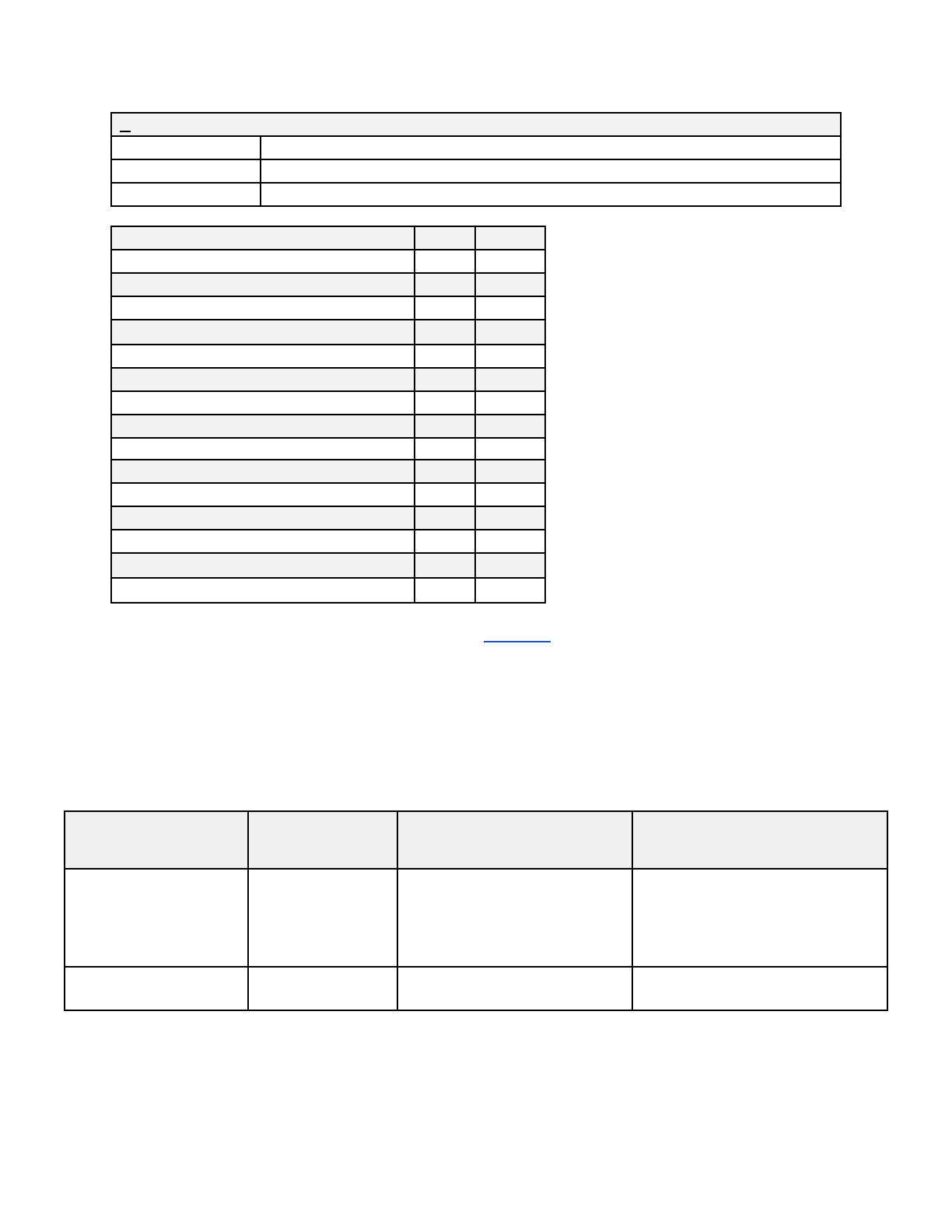
61
Y
YAG
yttrium aluminum garnet
yd (u)
yard
YIG
yttrium iron garnet
Factor by Which the Unit Is Modified
Prefix
Symbol
1000000000000 = 10
12
tera
T
1000000000 = 10
9
giga
G
1000000 = 10
6
mega
M
1000 = 10
3
kilo
k
100 = 10
2
hecto
h
10 = 10
1
deka
da
0.1 = 10
-1
deci
d
0.01 = 10
-2
centi
c
0.001 = 10
-3
milli
m
0.000001 =10
-6
micro
μ
0.000000001 = 10
-9
nano
n
0.000000000001 = 10
-12
pico
p
0.000000000000001 = 10
-15
femto
f
0.000000000000000001 = 10
-18
atto
a
For prefixes indicating powers of 2, see Table 7 at the NIST site.
E. Inclusive Language Guide
Overall recommendations:
● Use “people-first language,” i.e., the person has X; has been diagnosed with X; uses a X; etc.
● Do not spell out the acronyms LGBTQIA+, LGBT, LGBTQ, LGBTQIA.
Insensitive Term/Phrase
Replace With
Definition/Background
Additional Notes
A.D. (when referencing
history/time)
C.E., common era
Abbreviation of the Latin phrase
anno Domini, translated as “the
year of the Lord.” Traditionally, it
is used to date years after the birth
of Jesus
This contradicts AP style.
Able-bodied
non-disabled/does not
have a disability
IEEE EDITORIAL STYLE MANUAL FOR AUTHORS
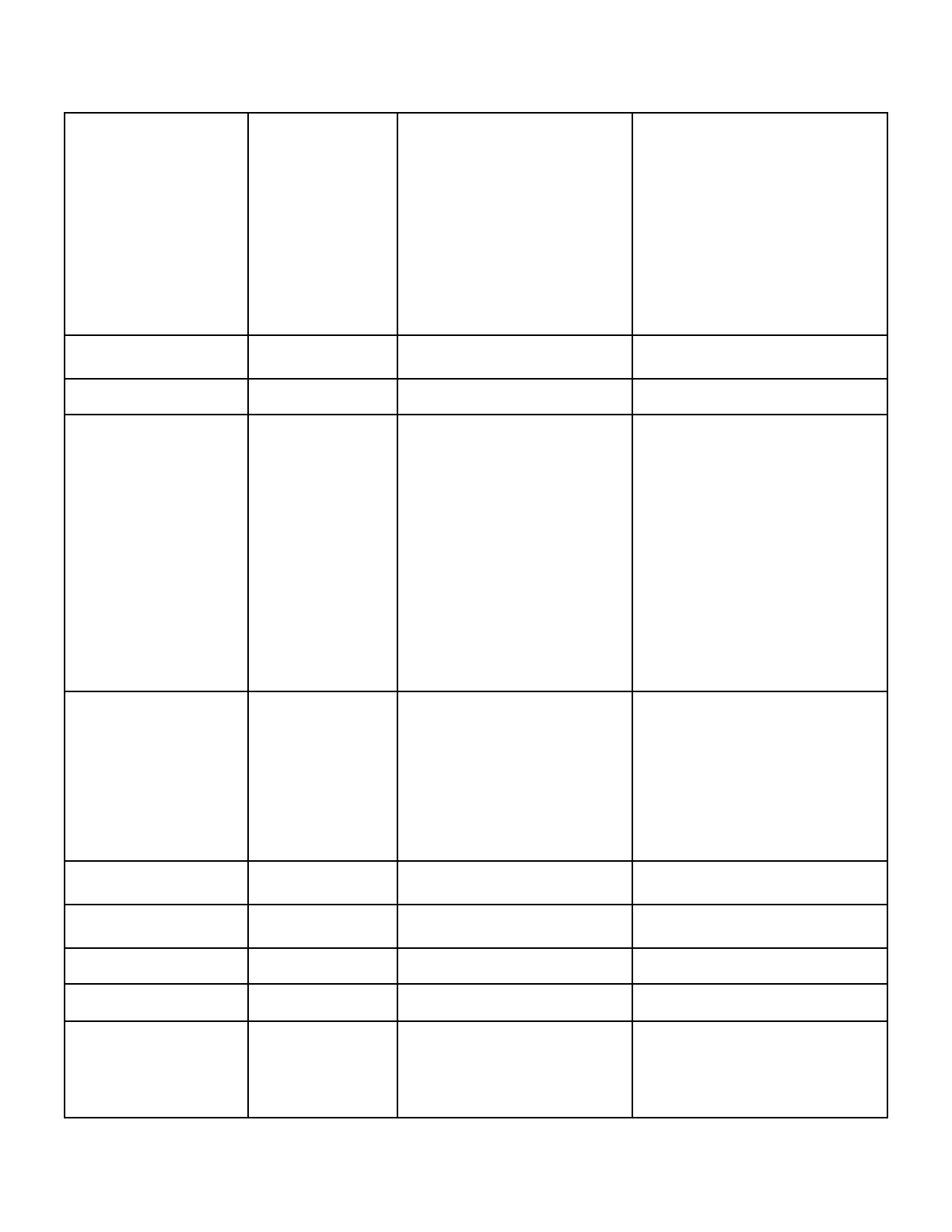
62
Afro-American/Negro/
Colored/Nigger (in
reference to race)
Avoid in all instances;
African American*;
Black†
People of African descent have
widely varied cultural
backgrounds, family histories, and
family experiences. Some will be
from Caribbean islands, Latin
America, various regions in the
United States, countries in Africa,
or elsewhere. Some American
people of African ancestry prefer
“Black,” and others prefer
“African American”; both terms
are acceptable.
* Specific to people of specific
African descent; not to be used as an
umbrella for people of African
ancestry worldwide.
† Widely accepted to encompass
multiple ethnicities and/or national
origins.
B.C. (when referencing
history/time)
B.C.E., before
common era
Literally, before Christ or the
Christian era.
This contradicts AP style.
Black box
Closed box
Preferred term from IEEE Thesaurus
Blacklist; black list
Blocklist; block list
The Hollywood blacklist was
instituted by the House
Un-American Activities
Committee in 1947 to block
screenwriters and other Hollywood
professionals who were purported
to have Communist sympathies
from obtaining employment. A list
or compilation that identifies
entities that are denied,
unrecognized, or ostracized. The
term's racist connotations derive
from the idea that black equates to
negative; this view can be
controversial.
Preferred term from IEEE Thesaurus
Blind
blind*; limited vision;
low vision; partially
sighted†
According to the American
Foundation for the Blind, the term
“legally blind” denotes a person
with 20/200 visual acuity or less.
Therefore, “blind” or “legally
blind” is acceptable for people
with almost complete vision loss.
Many people with vision loss are
not considered blind.
* Use only with people who are
“legally blind” (a person with 20/2000
visual acuity or less)
† Used most often in British
publications
Blind channel estimation
Source signal
equalizers
Preferred term from IEEE Thesaurus
Blind equalizers
Source signal
equalizers
Preferred term from IEEE Thesaurus
Blind signal separation
Mix source separation
Preferred term from IEEE Thesaurus
Blind source separation
Mix source separation
Preferred term from IEEE Thesaurus
Caretaker
caregiver
A caregiver is an individual who
assists another, including a person
with a disability, with his or her
daily life, according to
Merriam-Webster.
Caretaker denotes taking care of
property; Caregiver denotes giving
care to people.
IEEE EDITORIAL STYLE MANUAL
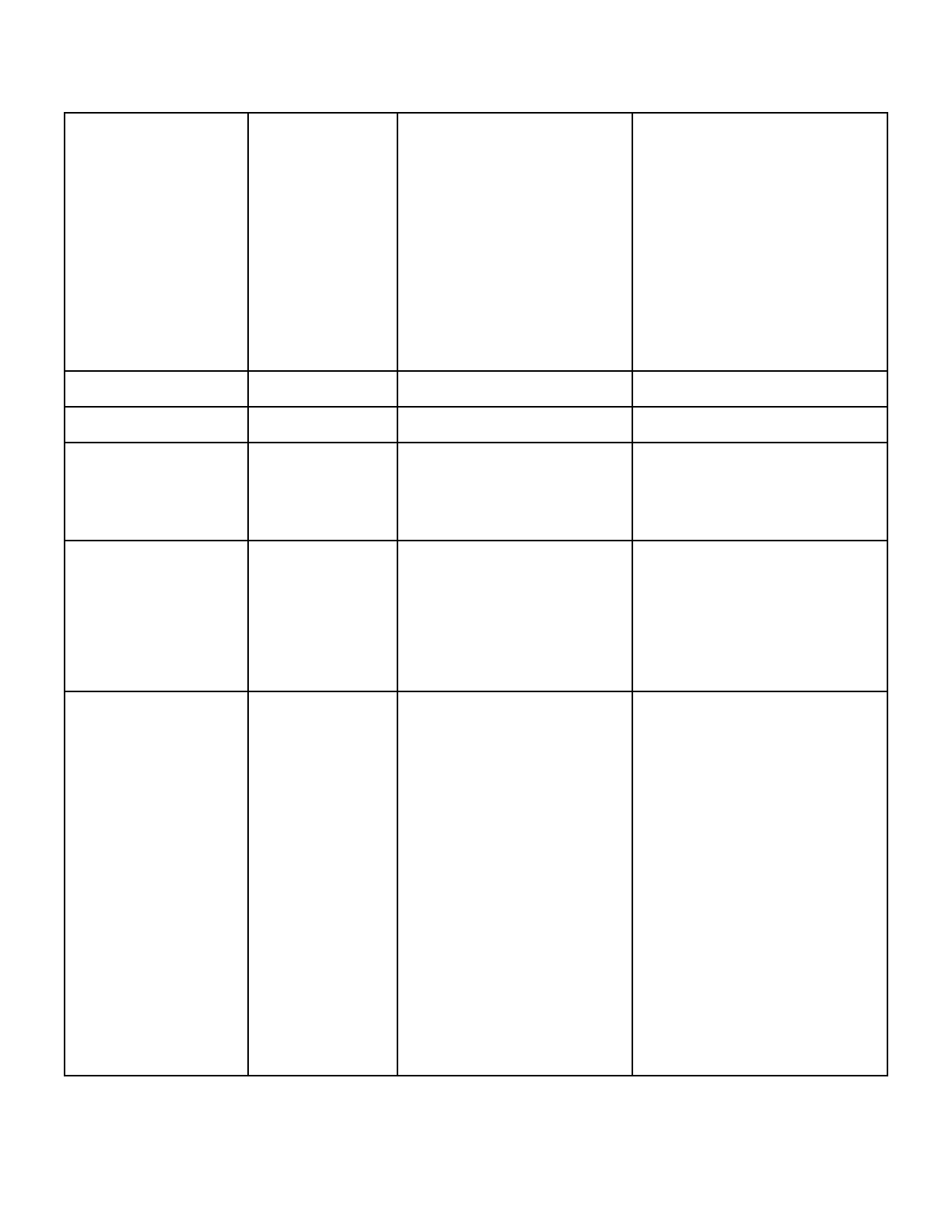
63
Caucasian
European American*;
White
The use of the term “Caucasian” as
an alternative to “White” or
“European” is discouraged because
it originated as a way of
classifying White people as a race
to be favorably compared with
other races. As with all discussions
of race and ethnicity, it is
preferable to be more specific
about regional (e.g., Southern
European, Scandinavian) or
national (e.g., Italian, Irish,
Swedish, French, Polish) origin
when possible.
* Adjust as needed for location (i.e.,
European, European American,
European Australian, etc.)
Chairman
chairperson
Committed suicide
died by suicide
Crazy/loony/mad/
psycho/nuts/deranged/
insane/insanity/
mentally deranged/
psychopathology
mental illness*;
mental disorder*;
psychopathology(ical)
Once commonly used to describe
people with mental illness;
commonly used informally to
denote mental instability or mental
illness.
* Except in a quote or when referring
to a criminal defense.
Cripple
Avoid in all
instances*; use people
first language and
their diagnosis, i.e.,
“person with X”
Merriam-Webster defines the noun
“cripple” as “a lame or partly
disabled person or animal” and as
“something flawed or imperfect.”
It is also used as a verb. The word
dates back to Old English, where it
was related to words that meant to
creep or bend over.
Deaf
D(d)eaf*; hard of
hearing
Having total or partial hearing loss.
* NCDJ Recommendation: Lowercase
when referring to a hearing-loss
condition or to a deaf person who
prefers lowercase. Capitalize for those
who identify as members of the Deaf
community or when they capitalize
Deaf when describing themselves.
“D(d)eaf” should be used as an
adjective, not as a noun; it describes a
person with profound or complete
hearing loss. Other acceptable phrases
include “woman who is deaf” or “boy
who is hard of hearing.” When
quoting or paraphrasing a person who
has signed their responses, it’s
appropriate on first reference to
indicate that the responses were
signed. It’s acceptable to use the word
“said” in subsequent references. Per
the National Association of the Deaf,
"D(d)eaf" is acceptable.
IEEE EDITORIAL STYLE MANUAL FOR AUTHORS
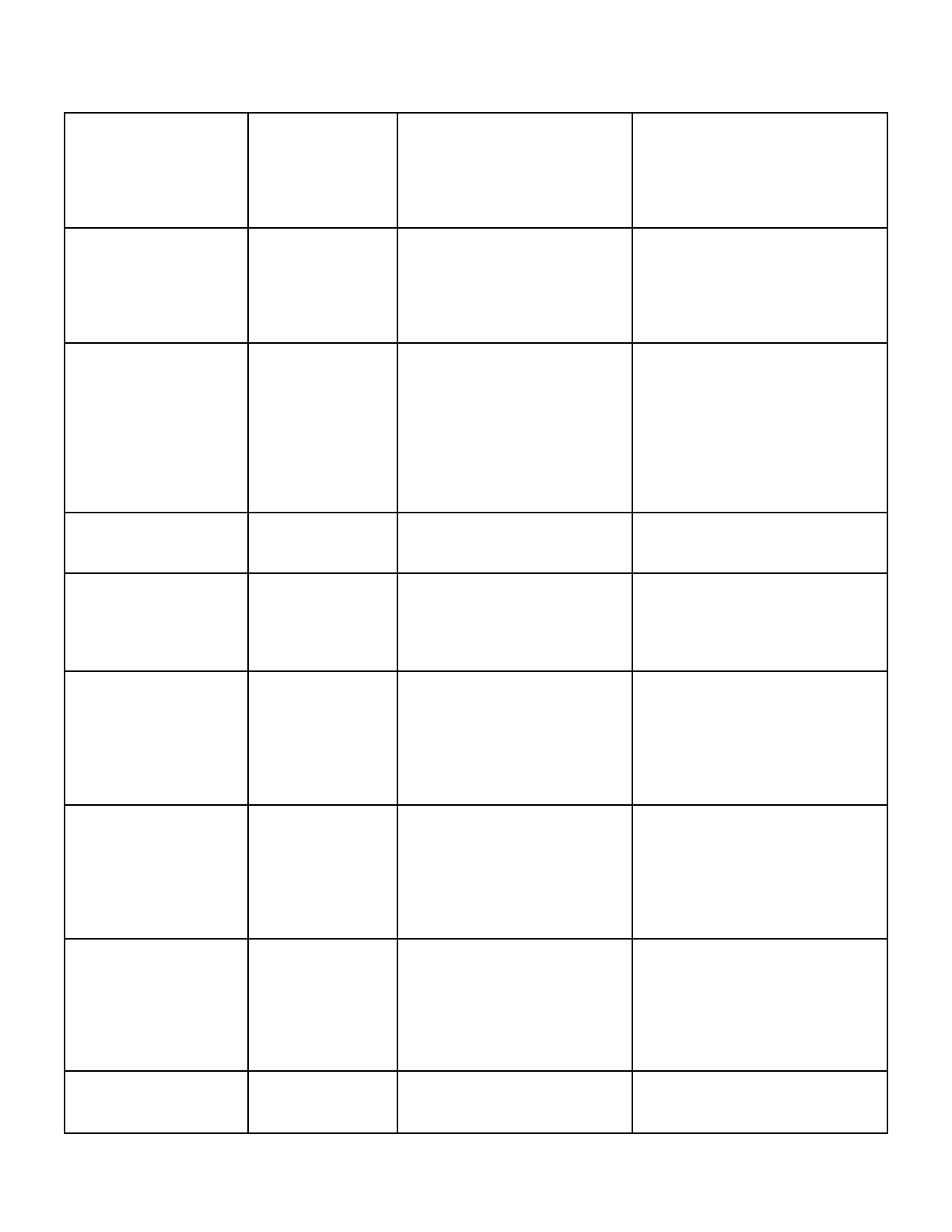
64
Deformed/deformity
(when referencing a
person)
Avoid in all
instances*; refer to
specifics description
rather than
generalized term of
deformity
Merriam-Webster defines as a part
of the body that does not have the
typical or expected shape
Dumb (mute)
non verbal
Once widely used to describe a
person who could not speak and
also implied the inability to
express oneself; however, someone
who does not use speech still may
have the ability of expression.
Dwarf/vertically
challenged/midget
Dwarf*; short stature;
little person
Dwarfism is a medical or genetic
condition that results in a stature
below 4’10,” according to Little
People of America. The terms
“little people” and “little person”
refer to people of short stature and
have come into common use since
the founding of the Little People of
America organization in 1957.
* Use only when applied to a medical
diagnosis or in a quote.
Gay marriage/same-sex
marriage
Marriage*
* When writing about the inability to
legally marry, use “exclusion from
Marriage” or “denial of marriage.”
Handicap
Use people first
language; refer to the
person's condition
The Oxford English dictionary
defines a handicap as “a condition
that restricts a person’s ability to
function physically, mentally or
socially.”
Homesexual/Gay
gay*; lesbian,
bi(sexual)†
Short form term to reference gay,
lesbian, and bisexual orientations,
though not transgender people or
gender identity. Anti-gay activists
use “homosexual” as a slur to
stigmatize gay people by reducing
their lives to purely sexual terms.
* Only when used as an adjective (ie,
gay people);
† Use bisexual as an adj. and as
needed on first reference for clarity,
otherwise default to bi.
Indian (when referencing
Indigenous People)
Indigenous People;
specific tribe
The Oxford English dictionary
defines Indian in two ways:
1) a native or inhabitant of India;*
and 2) a member of any of the
indigenous peoples of North,
Central, and South America,
especially those of North America.
* Acceptable use for Indian in this
instance
Invalid (noun: in· va· lid)
Avoid in all
instances*; use people
first language and
their diagnosis, ie,
“person with X”
The Oxford English dictionary
defines an invalid as “a person
made weak or disabled by illness
or injury.” It is probably the oldest
term for someone living with
physical conditions that are
considered seriously limiting.
* Except when used in a direct quote
Lame
“difficulty walking”
Commonly used to describe
difficulty walking as the result of
an injury to the leg.
IEEE EDITORIAL STYLE MANUAL
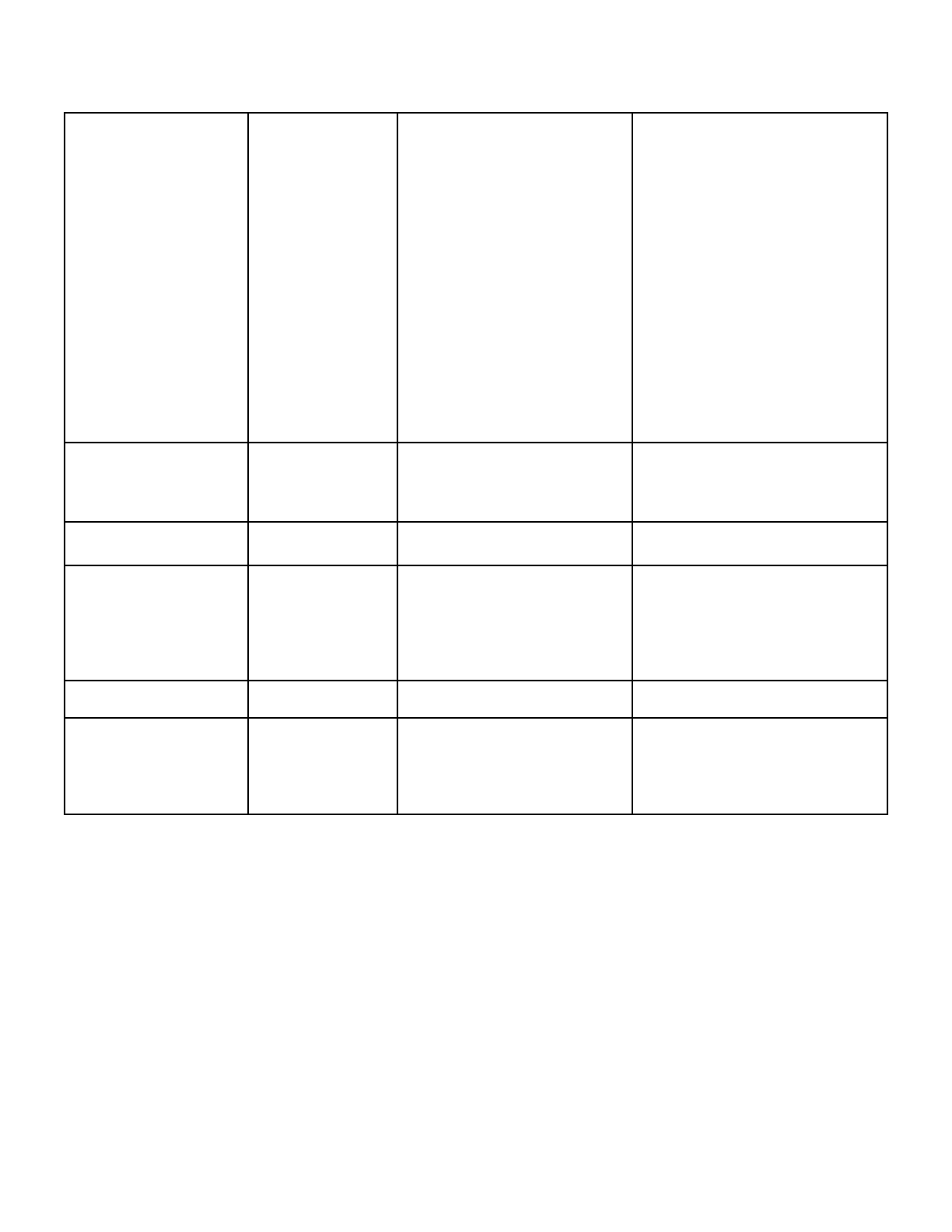
65
LGBT (when talking with
those who are unfamiliar
with the issues or are not
supportive of the issues)
Gay and transgender;
lesbian, gay, bisexual,
and transgender*
Per “The Ally's Guide to
Terminology”: Reference sexual
orientation and gender identity
when talking about issues
pertaining to both. (See
Transgender for more
information.) The abbreviation
“LGBT” can be confusing and
alienating for those who are
unfamiliar with the issues or not
yet supportive—though it is
essential when talking to LGBT
and strongly supportive audiences.
Use the term that allows your
audience to stay focused on the
message without creating
confusion about your intended
meaning.
* If needed for clarity
Master/Slave
leader/follower;
parent/child;
primary/secondary;
main/secondary*
* Preferred term from IEEE
Thesaurus
Mentally ill/
emotionally disturbed
Person with a
psychiatric disability
Minorities
People of color*;
underrepresented
groups†
The use of “minority” may be
viewed pejoratively because it is
usually equated with being less
than, oppressed, or deficient in
comparison with the majority (i.e.,
White people).
* POC (people of color).
† When possible, use the specific
name of the group or groups to which
you are referring.
Normal People
Person without X
Oriental (when referencing
race)
Asian*; Asian
American†
“Orientals” is considered
pejorative; be more specific by
providing nation and region of
origin (Japanese, Chinese,
Vietnamese, etc.).
* For people from Asia;
† People of Asian descent in North
America
IEEE EDITORIAL STYLE MANUAL FOR AUTHORS
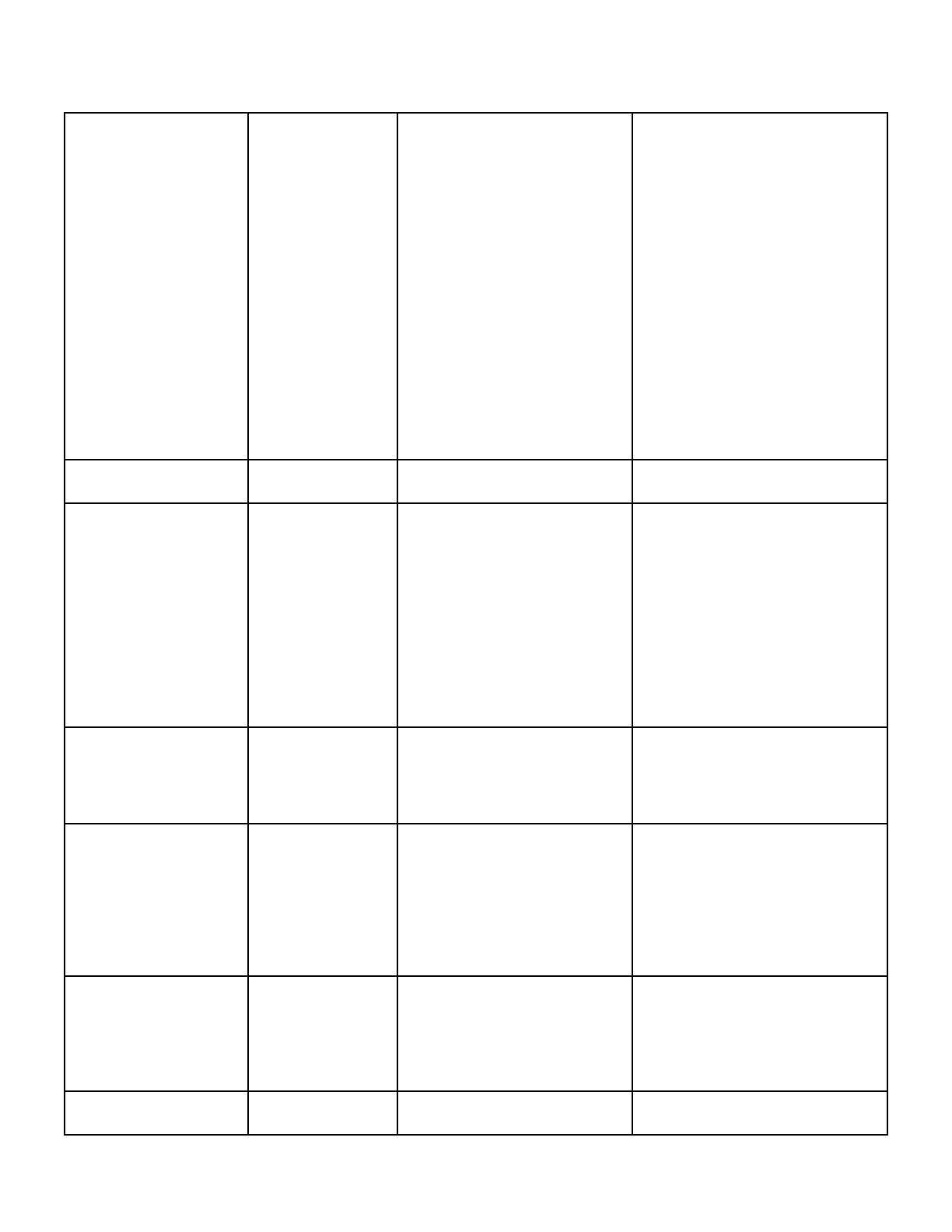
66
Retarded/Slow learner
Learning disability*
According to the University of
Kansas Research & Training
Center on Independent Living:
“...describes a neurologically based
condition that may manifest itself
as difficulty learning and using
skills in reading (called dyslexia),
writing (dysgraphia), mathematics
(dyscalculia) and other cognitive
processes due to differences in
how the brain processes
information. Individuals with
learning disabilities have average
or above average intelligence, and
the term does not include a
learning problem that is primarily
the result of another cause, such as
intellectual disabilities or lack of
educational opportunity.”
* Only when the condition has been
medically diagnosed
Schiophrenic/Schizo
Person with
schizophrenia
Sex change (operation)
Transition
Per hrc.org: The process by which
some people strive to more closely
align their internal knowledge of
gender with its outward
appearance. Some people socially
transition, whereby they might
begin dressing, using names and
pronouns, and/or be socially
recognized as another gender.
Others undergo physical transitions
in which they modify their bodies
through medical interventions.
Transition is the accurate term that
does not fixate on surgeries, which
many transgender people do not or
cannot undergo. Terms like “pre-op”
or “postop” unnecessarily fixate on a
person’s anatomy and should be
avoided.
Sexual identity/
transgender identity
Gender
identity/gender
expression
Gender identity is one’s internal
sense of gender.
Gender expression is how a person
outwardly expresses their gender.
(Terms are not interchangeable.)
Many transgender people identify as
male or female and not simply
transgender. Pronouns express this
identity: He/him; She/her; They/them.
Sexual Preference/Gay
lifestyle/homosexual
lifestyle/same-sex
attractions/sexual identity
sexual orientation
“Sexual preference” is used by
anti-gay activists to suggest that
being gay is a choice; therefore,
being gay can be changed. Using
“lifestyle” insinuates much the
same and stigmatizes gay people
suggesting their lives should be
viewed strictly as sexual.
Transgendered/
a transgender (n.)/
transgenders (n.)/
transvestite/tranny
Transgender
Transgender is an adjective, not a
noun. “Trans” as shorthand is often
used within the LGBTQ+
community, but not generally
understood by general audiences.
Always use a transgender person’s
chosen name. Also, a person who
identifies as a certain gender should
be referred to using pronouns
consistent with that gender (he/him,
she/her, they/them).
Unmanned aerial vehicles
Autonomous aerial
vehicles
Preferred term from IEEE Thesaurus
IEEE EDITORIAL STYLE MANUAL
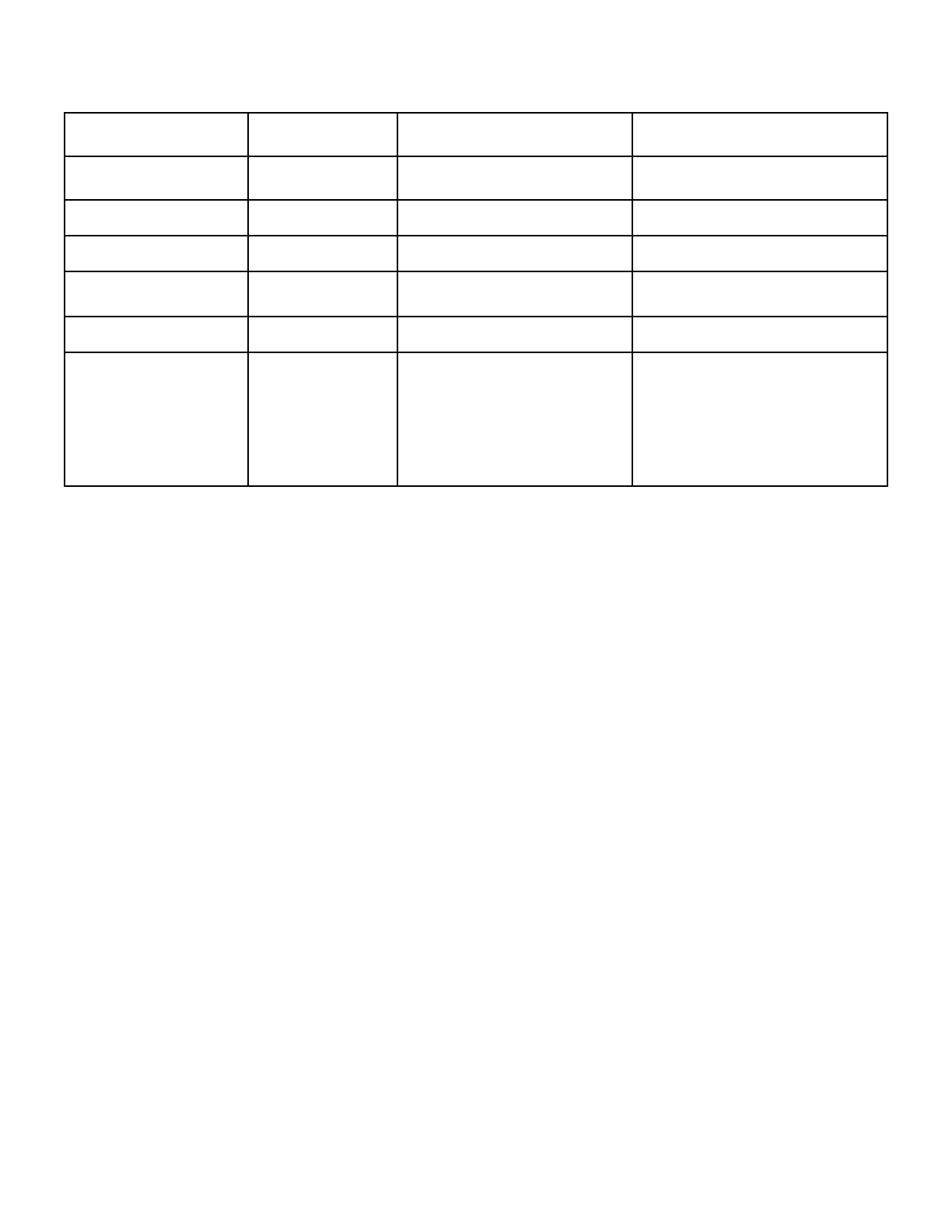
67
Unmanned automobiles or
cars
Autonomous
automobiles
Preferred term from IEEE Thesaurus
Unmanned underwater
vehicles
Autonomous
underwater vehicles
Preferred term from IEEE Thesaurus
Unmanned vehicles
Autonomous vehicles
Preferred term from IEEE Thesaurus
Unsuccessful suicide
Attempted suicide
Wheelchair-bound
Wheelchair user/Uses
a wheelchair
White box
Glass box
Preferred term from IEEE Thesaurus
Whitelist; white list
Access list
A whitelist (or white list) is a list
or register of entities that, for one
reason or another, are being
provided a particular privilege,
service, mobility, access or
recognition. This can be a
controversial view for some.
Preferred term from IEEE Thesaurus
IEEE EDITORIAL STYLE MANUAL FOR AUTHORS
